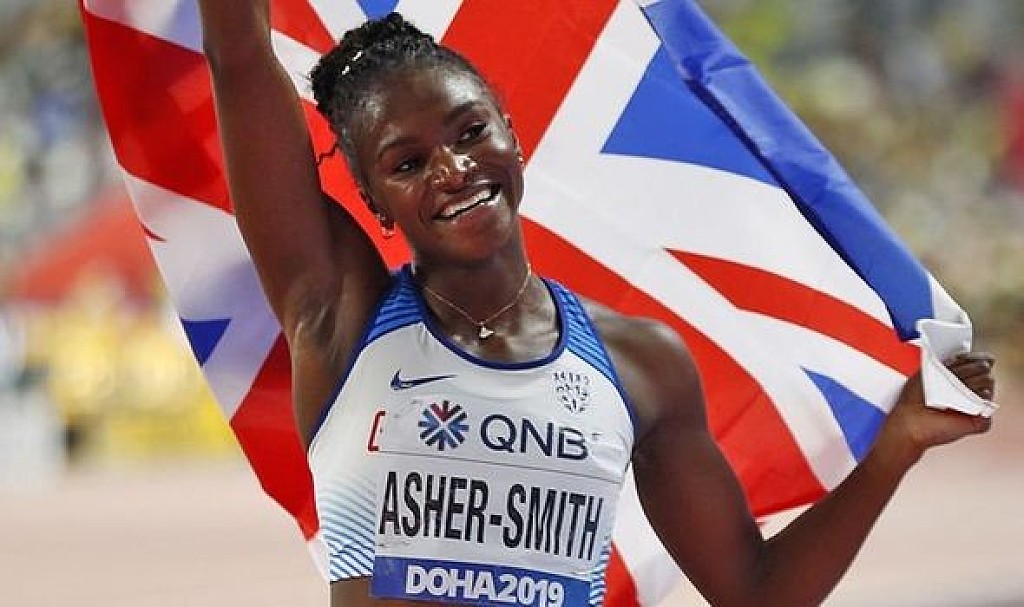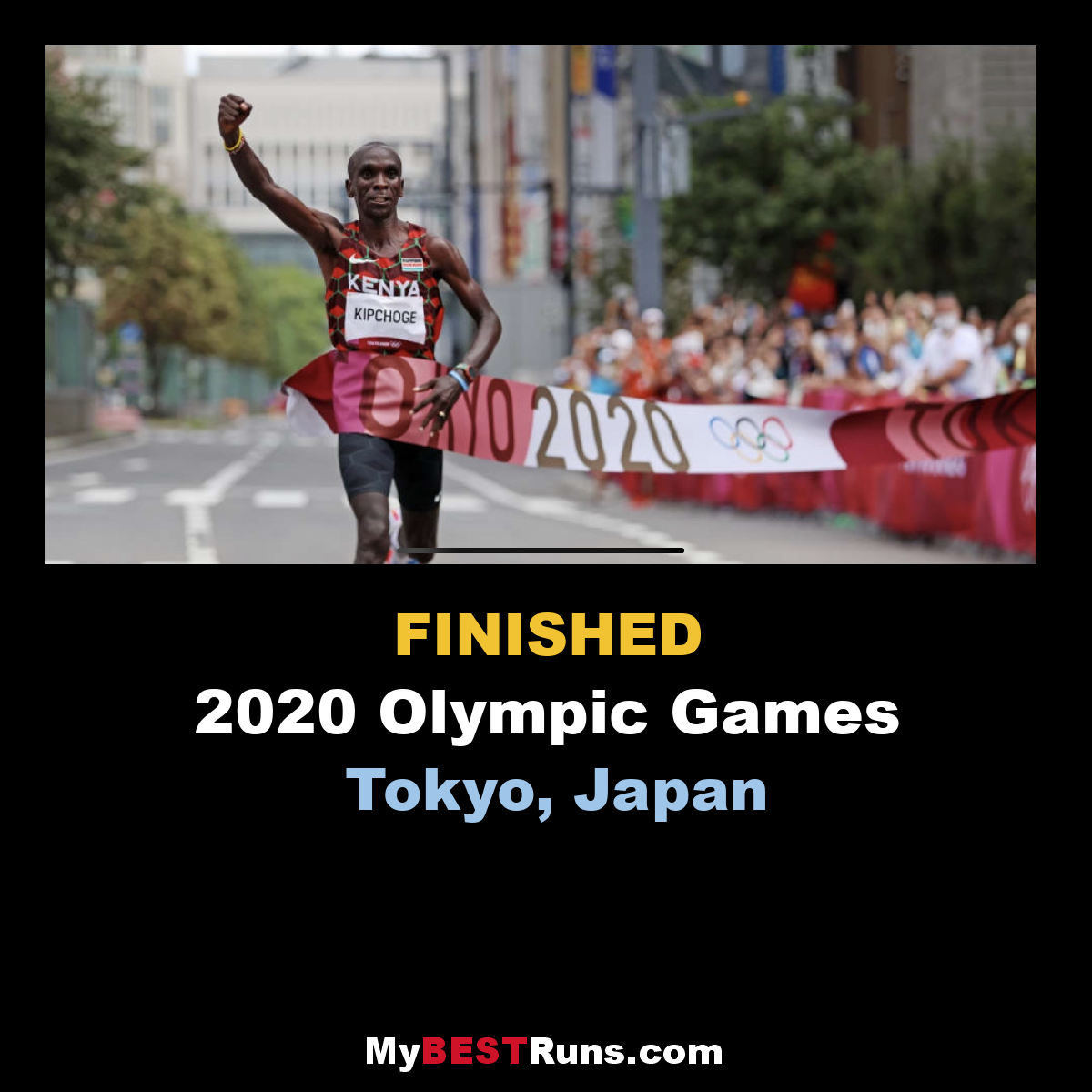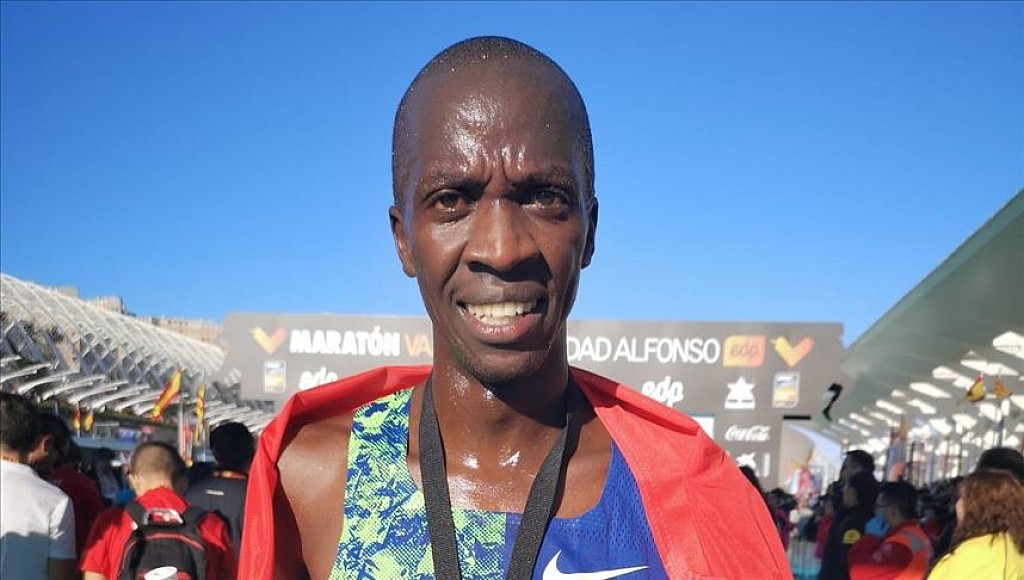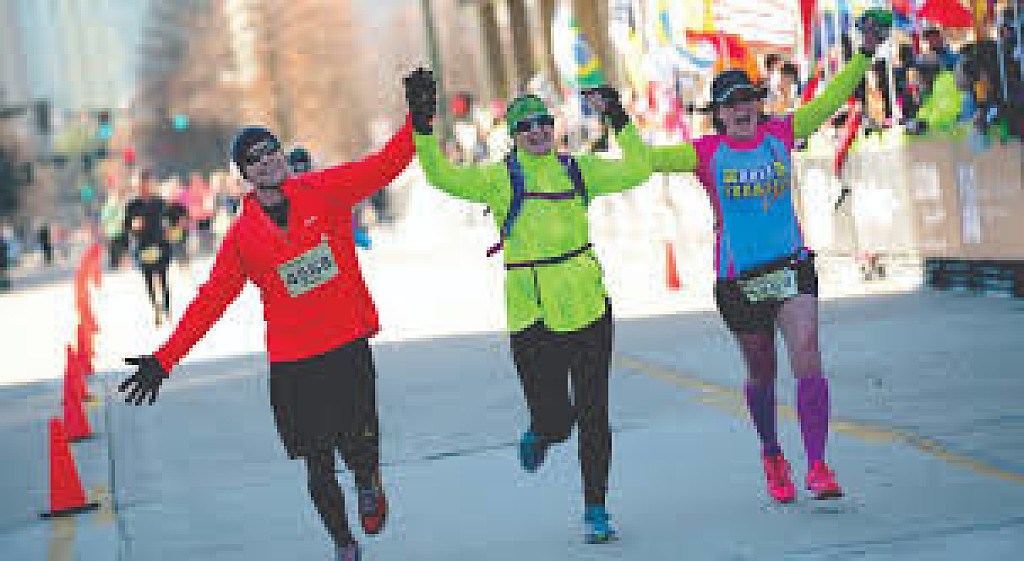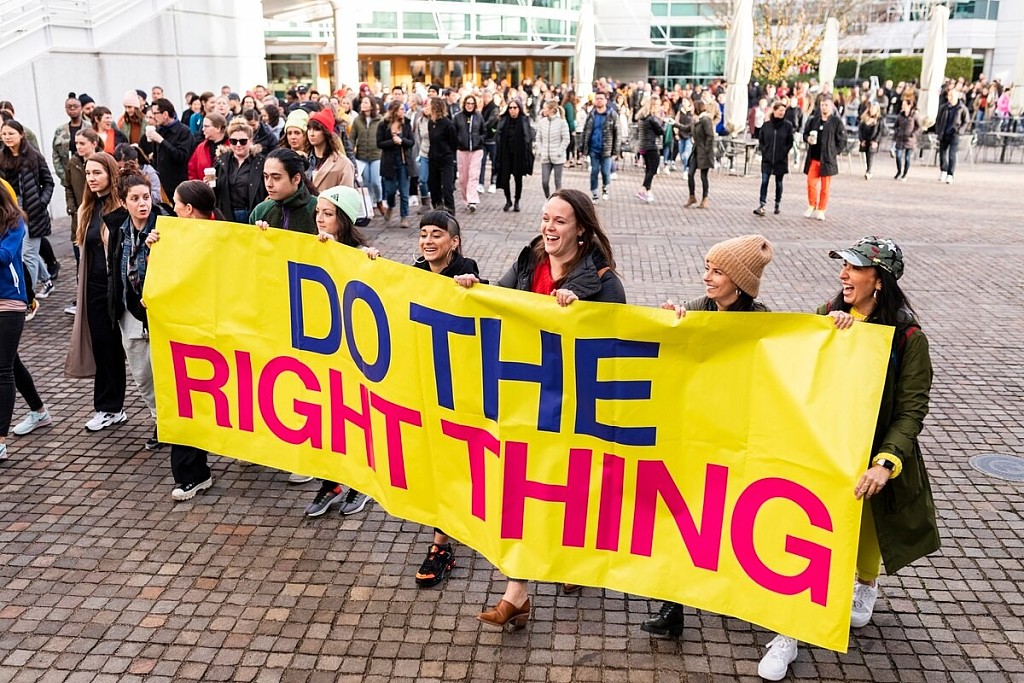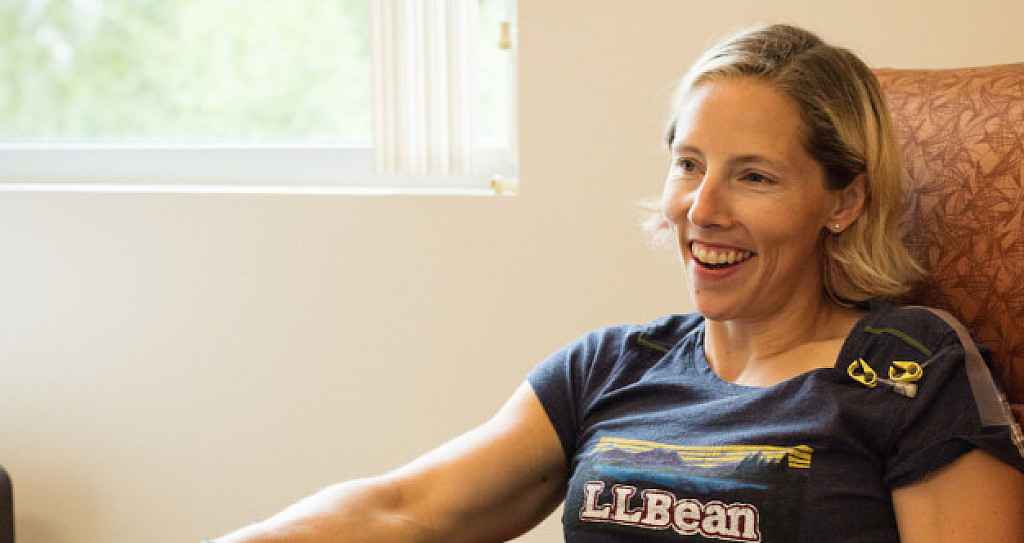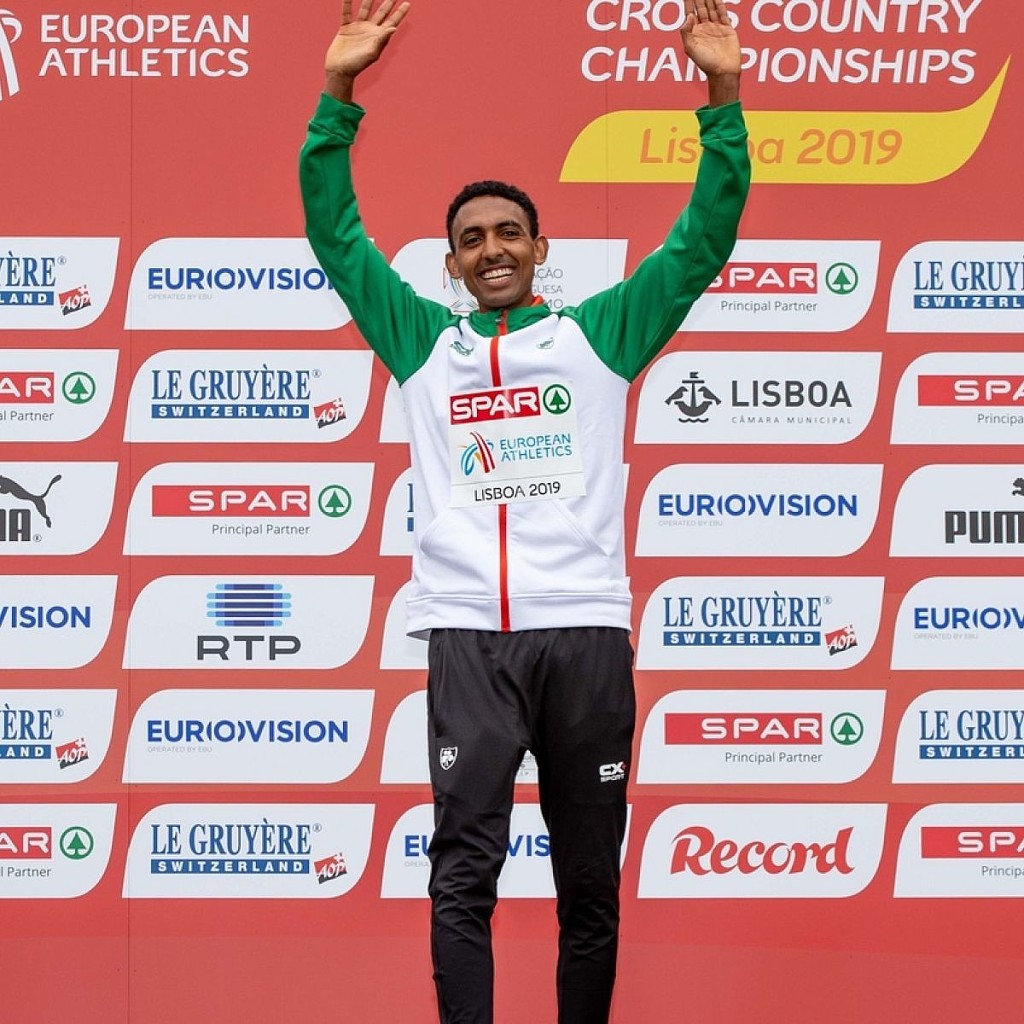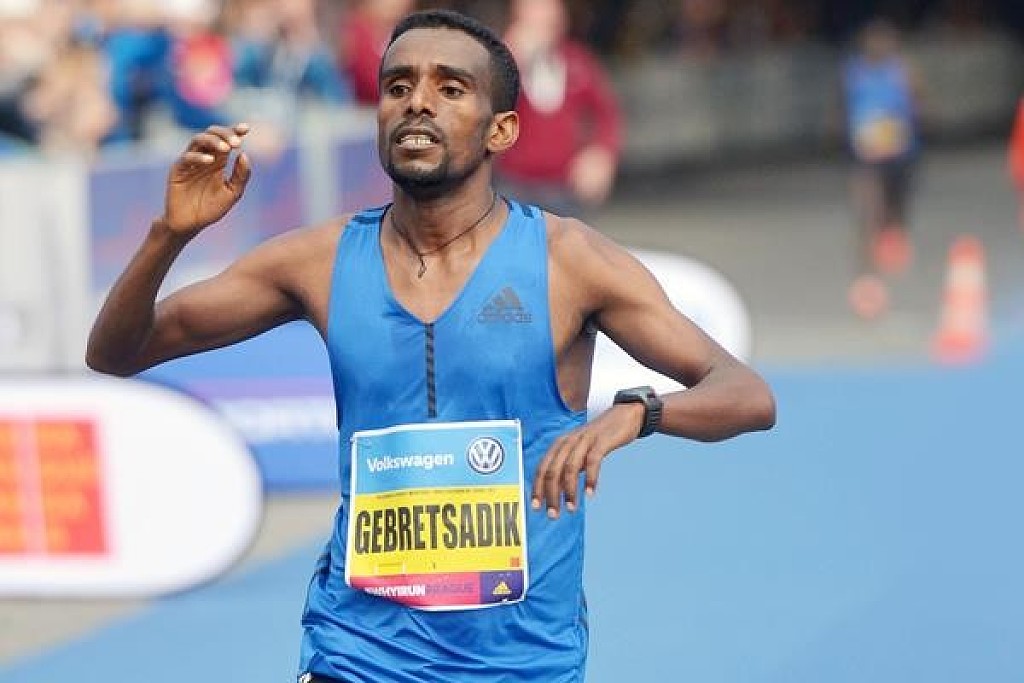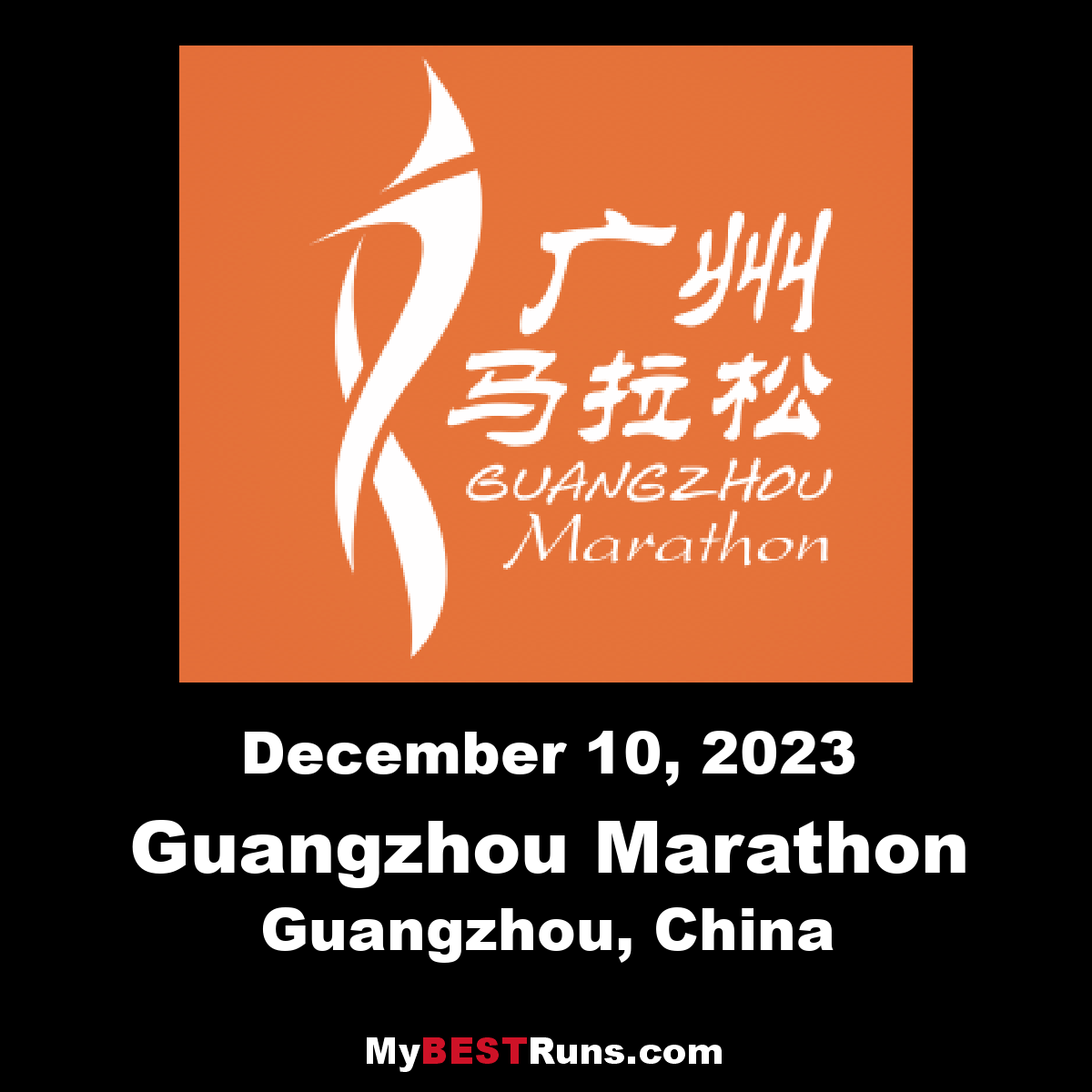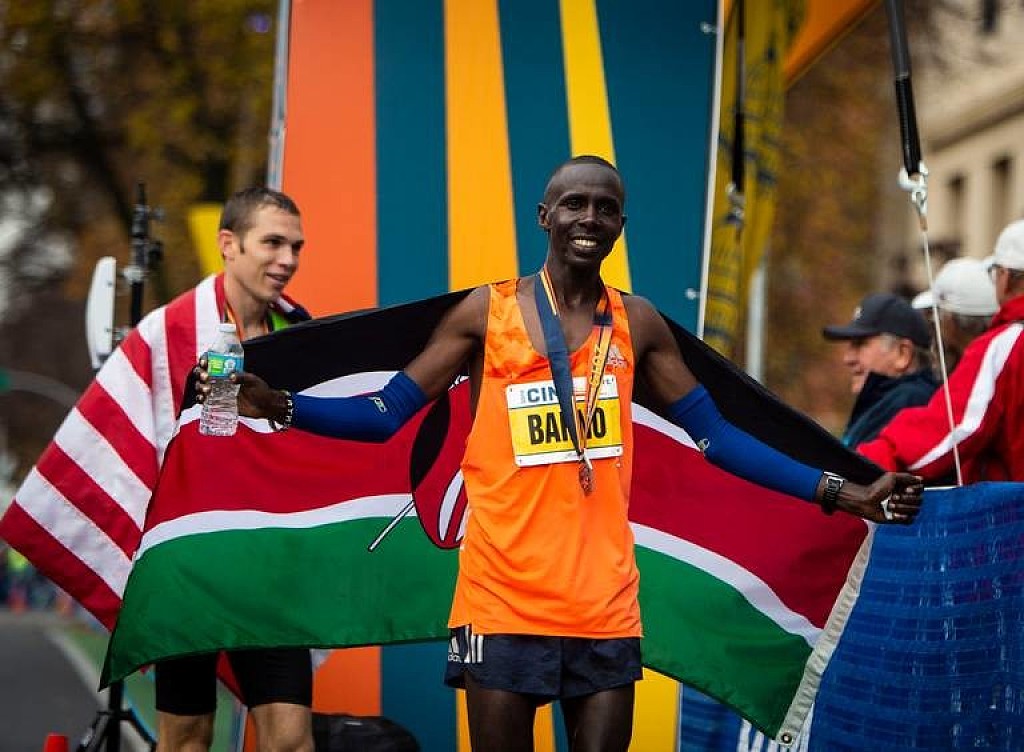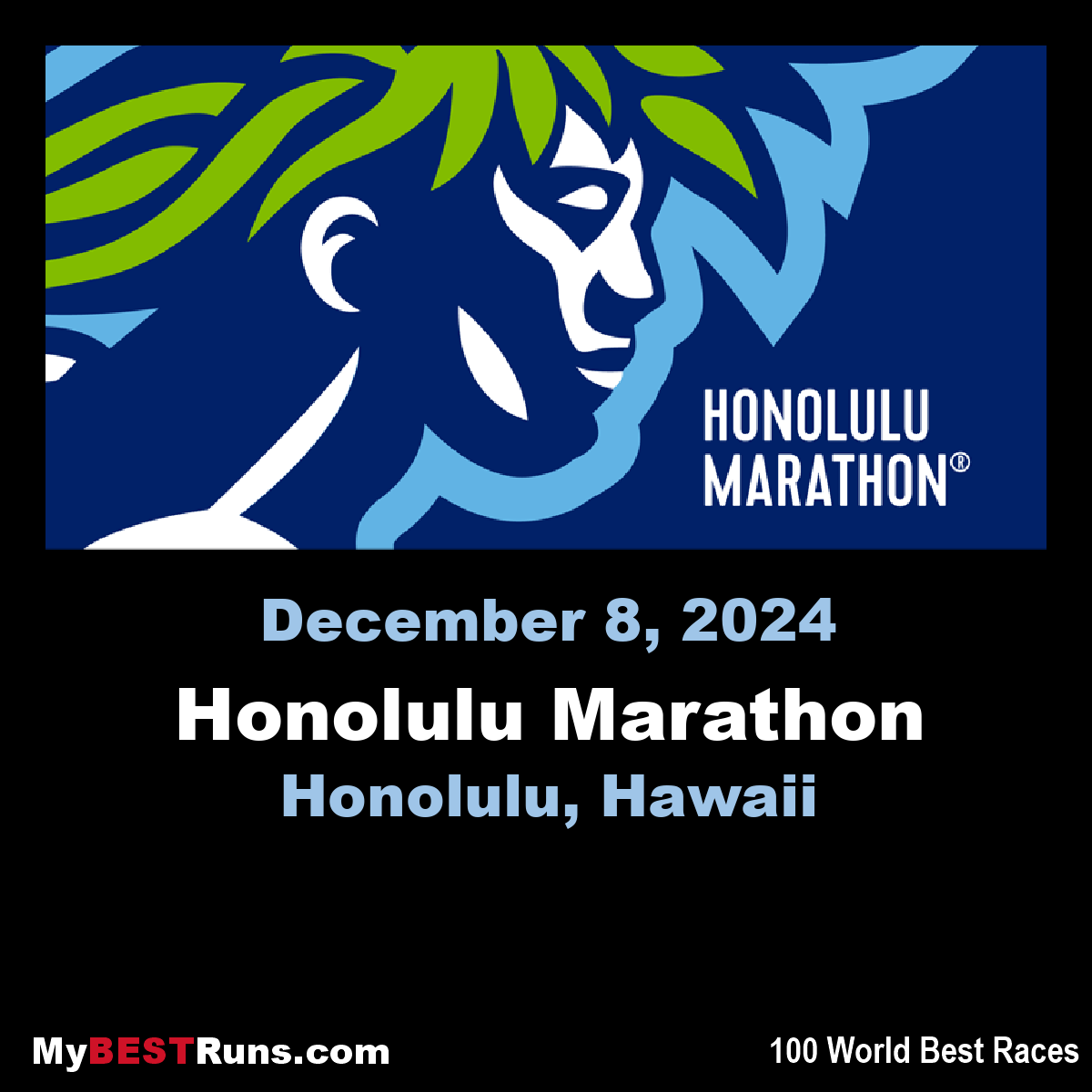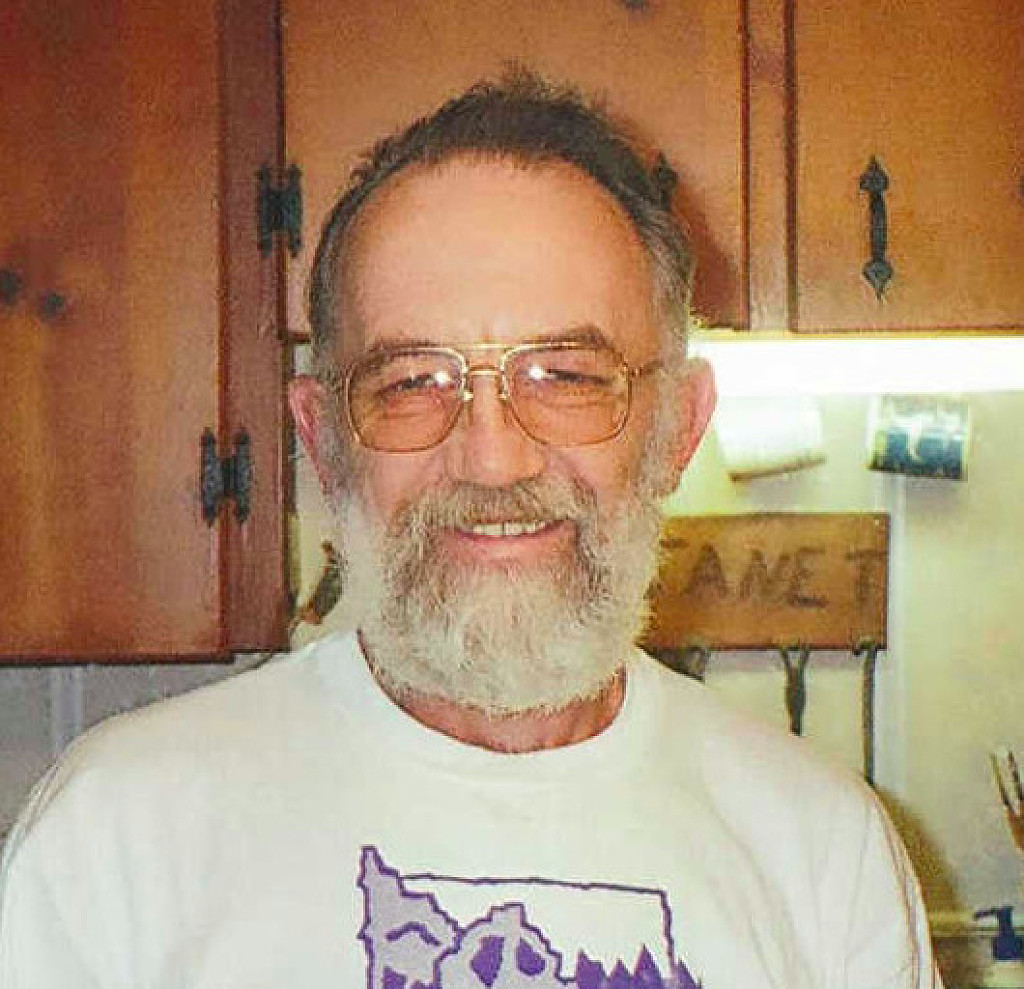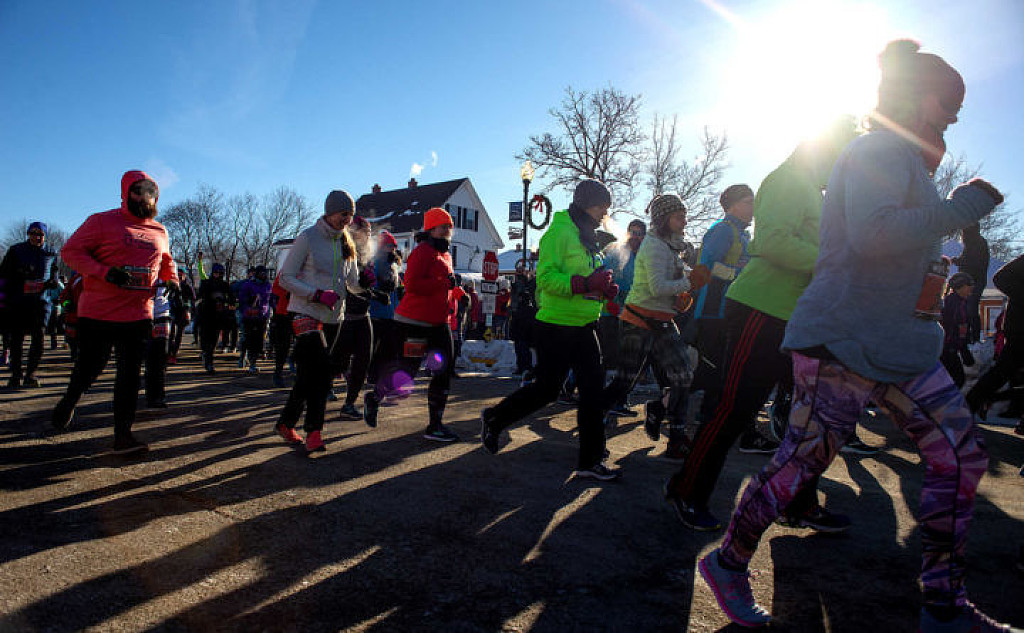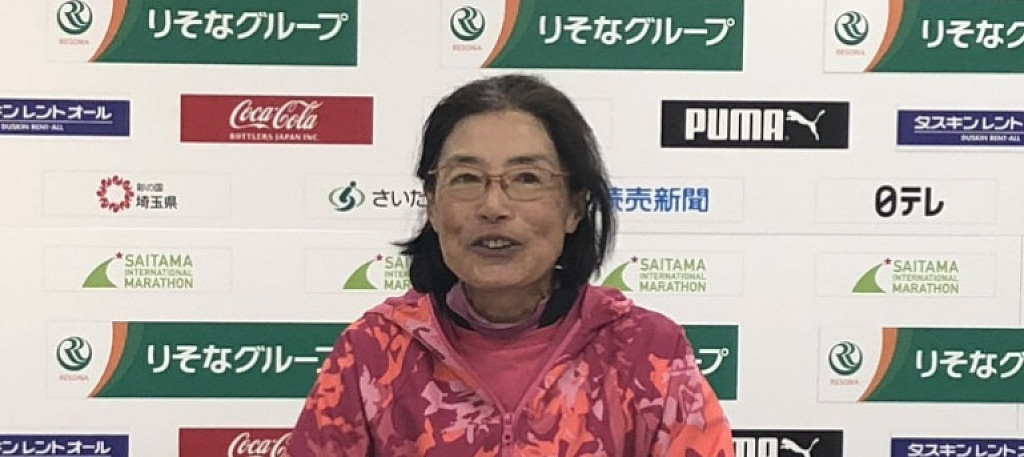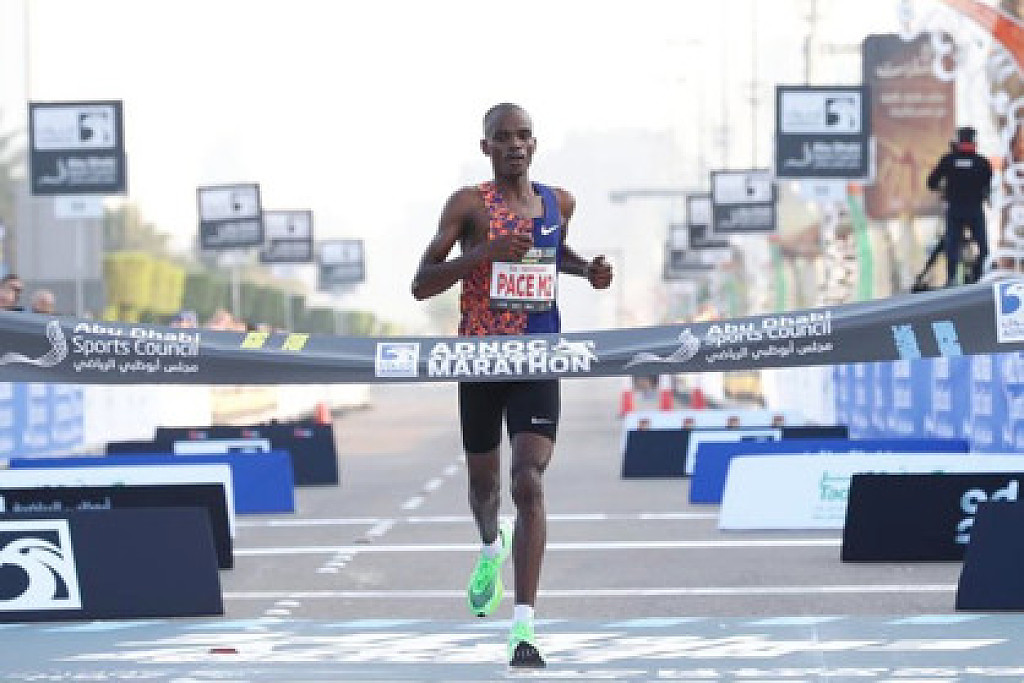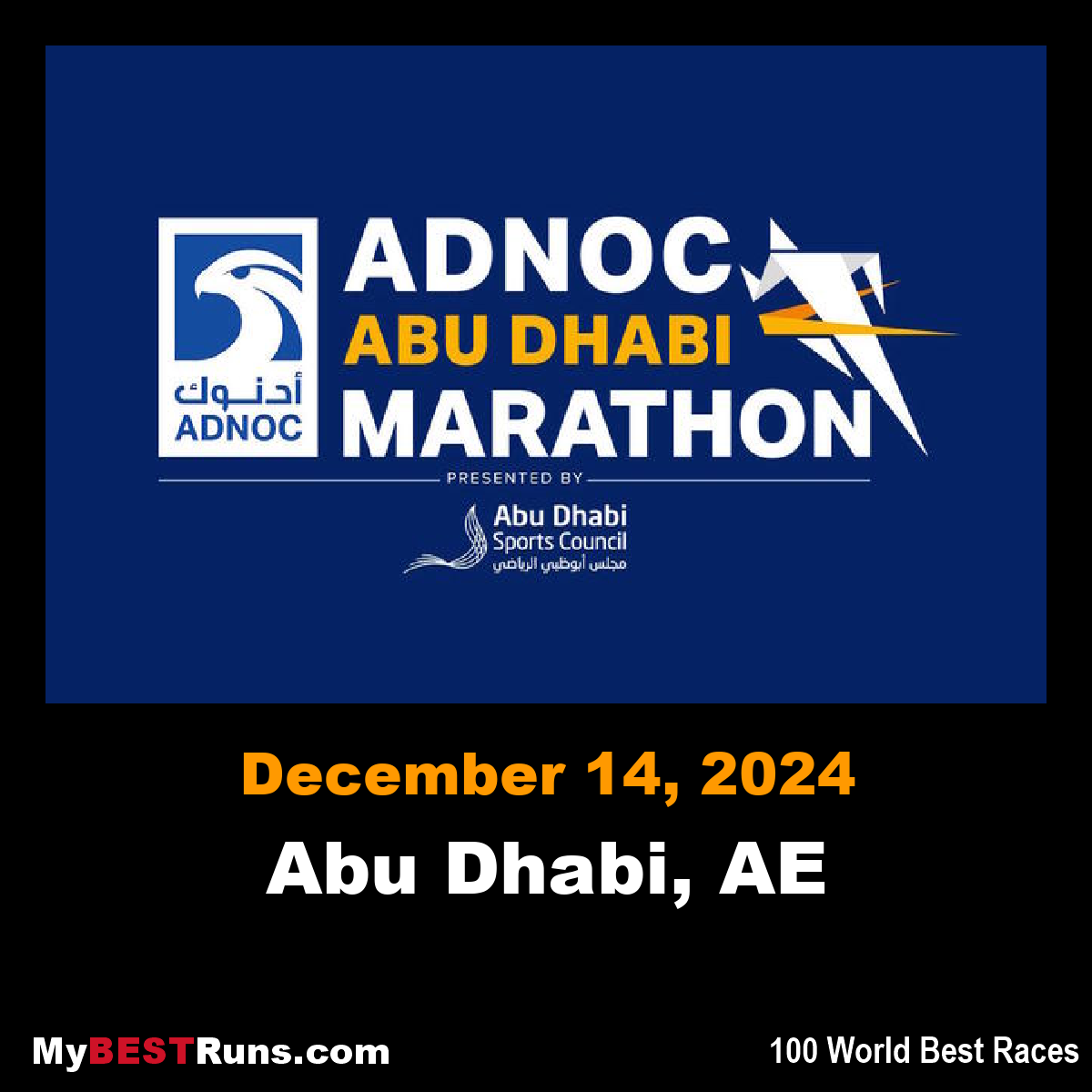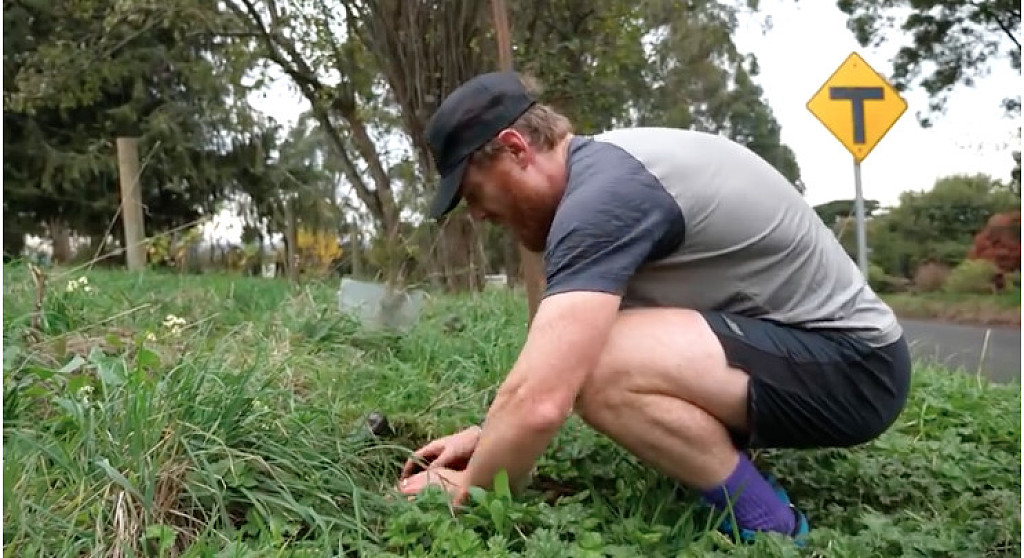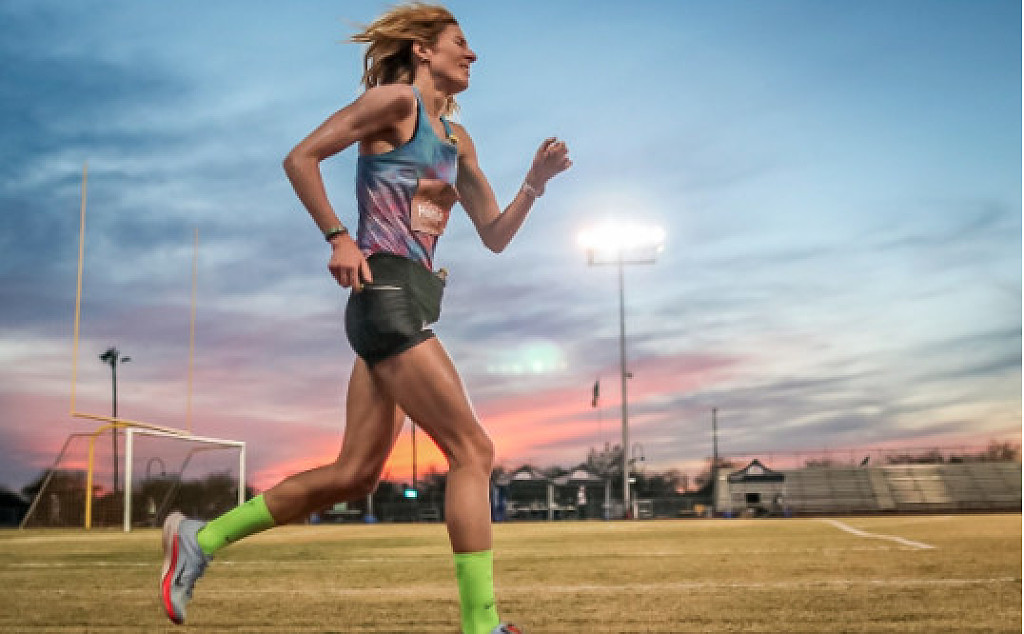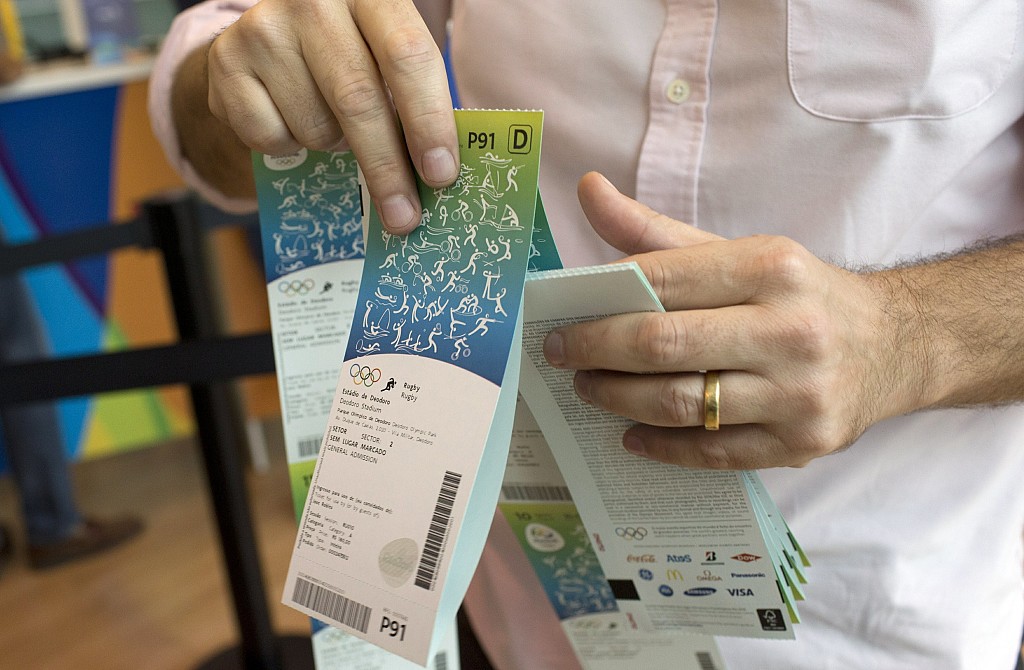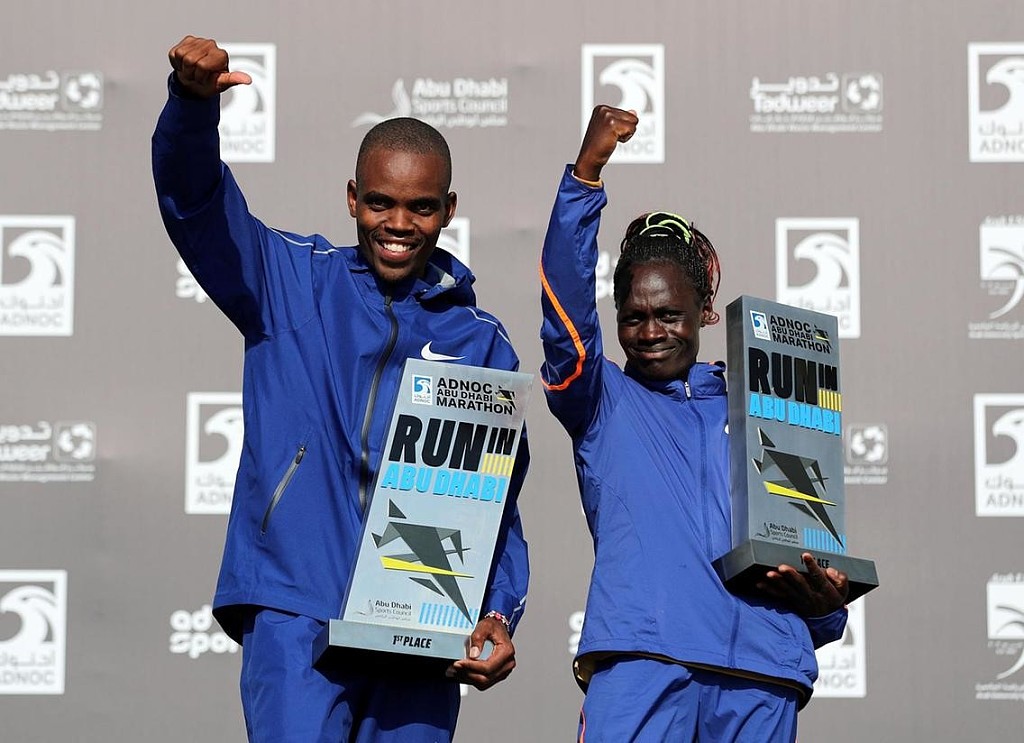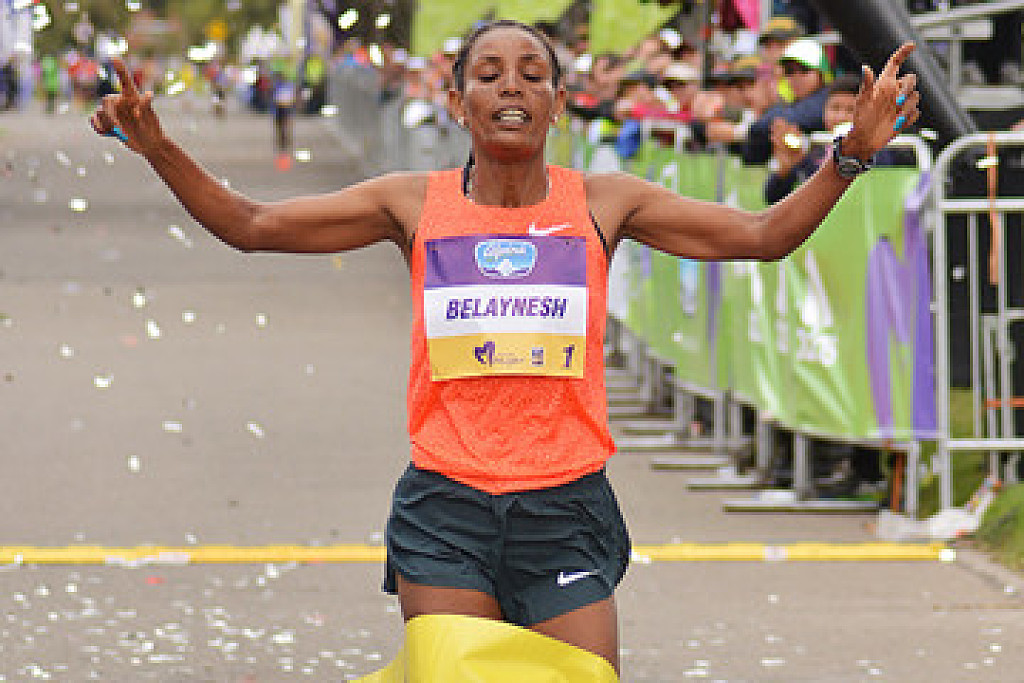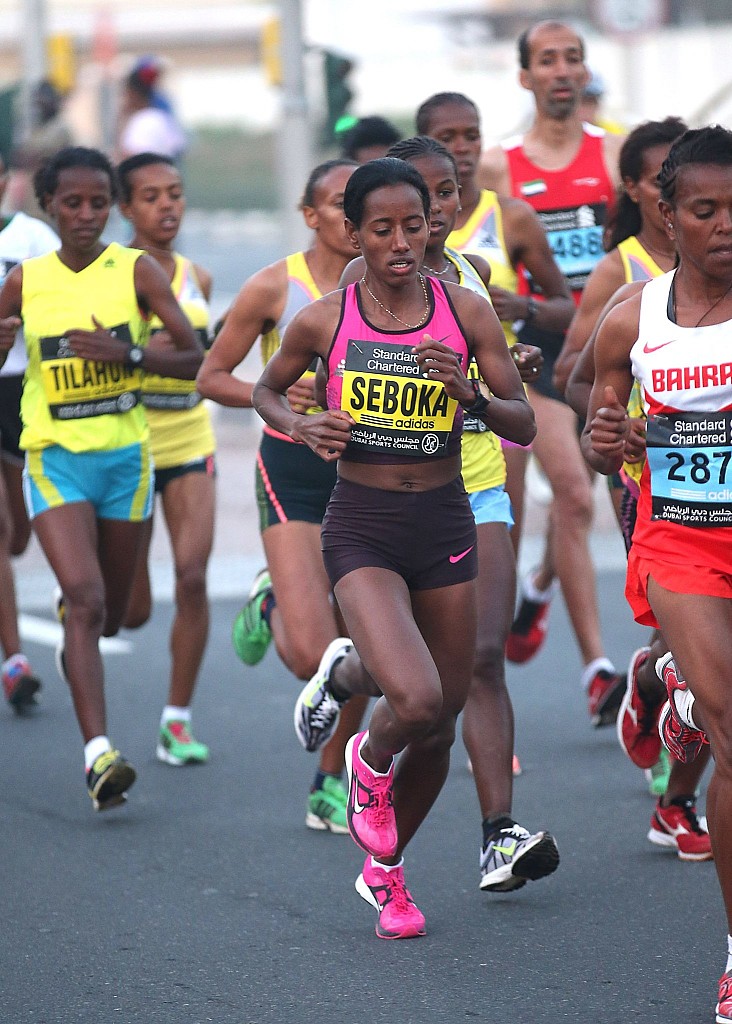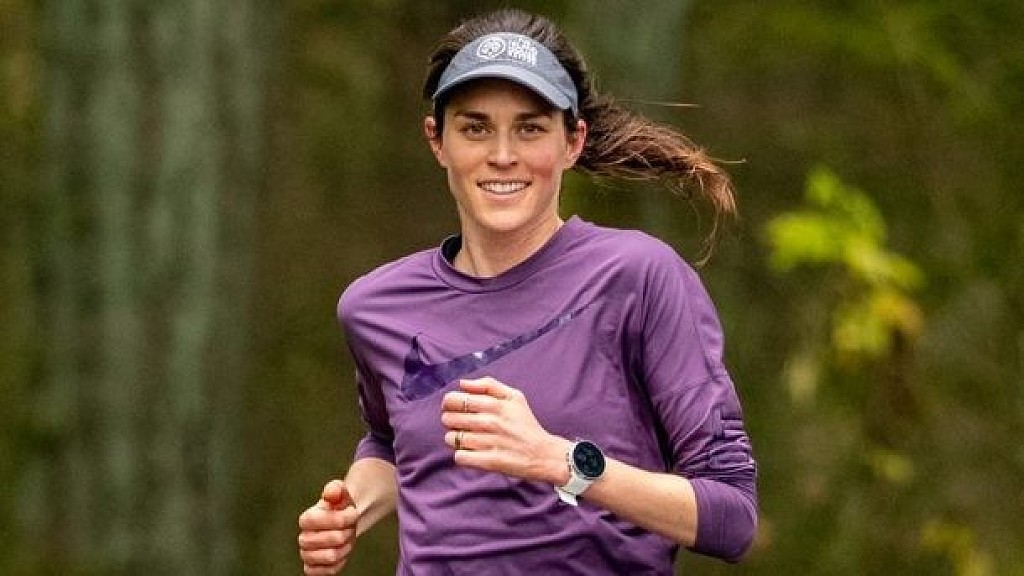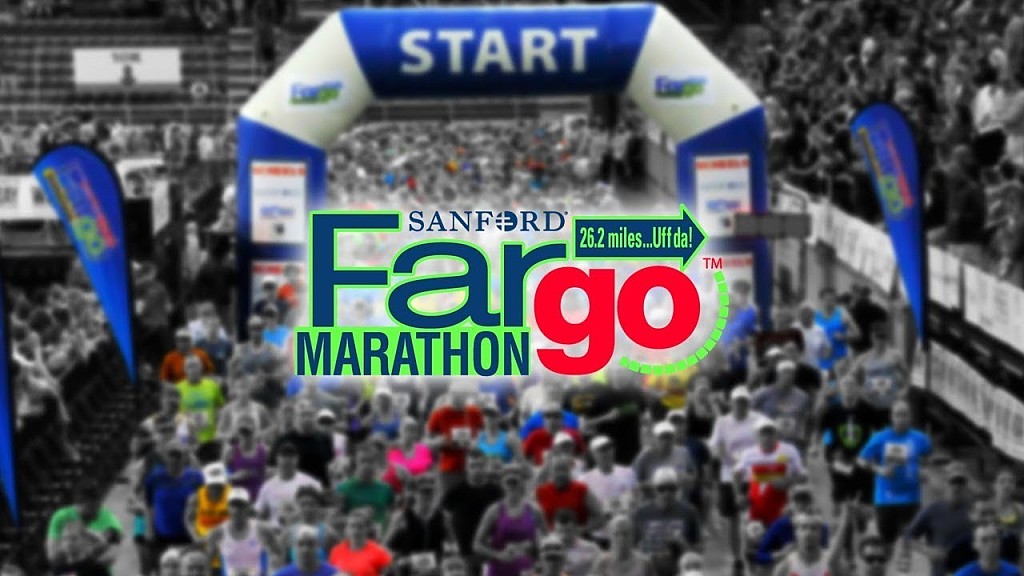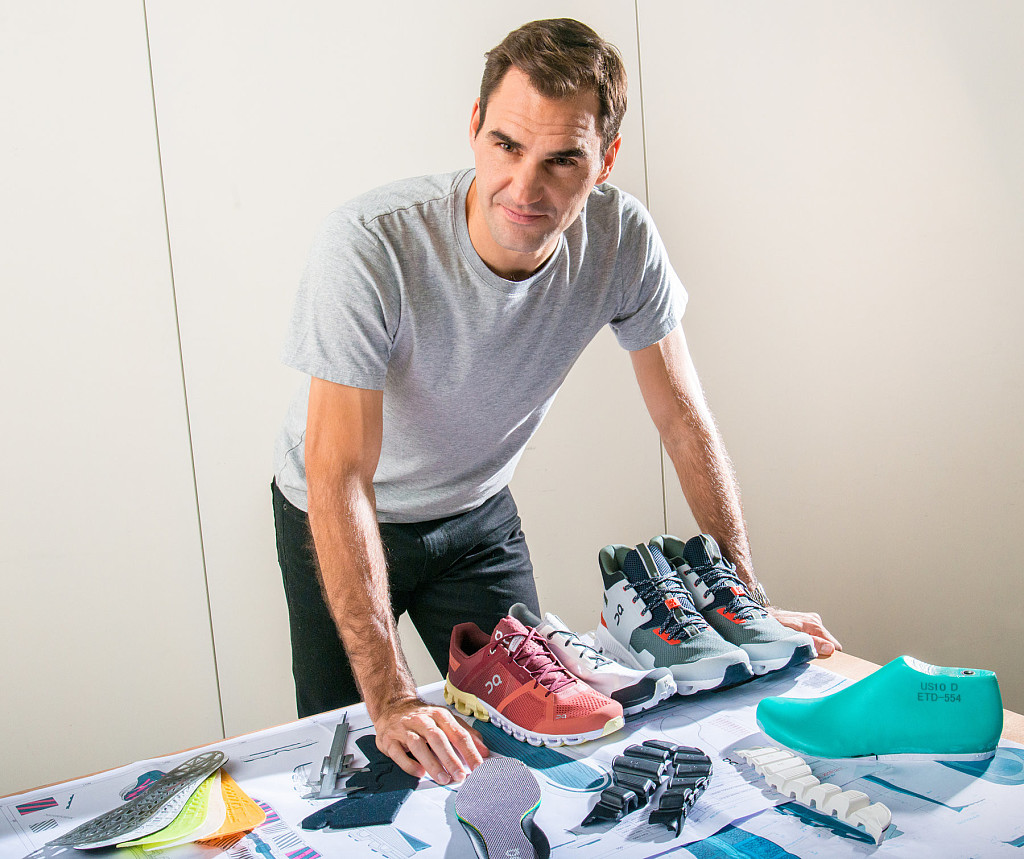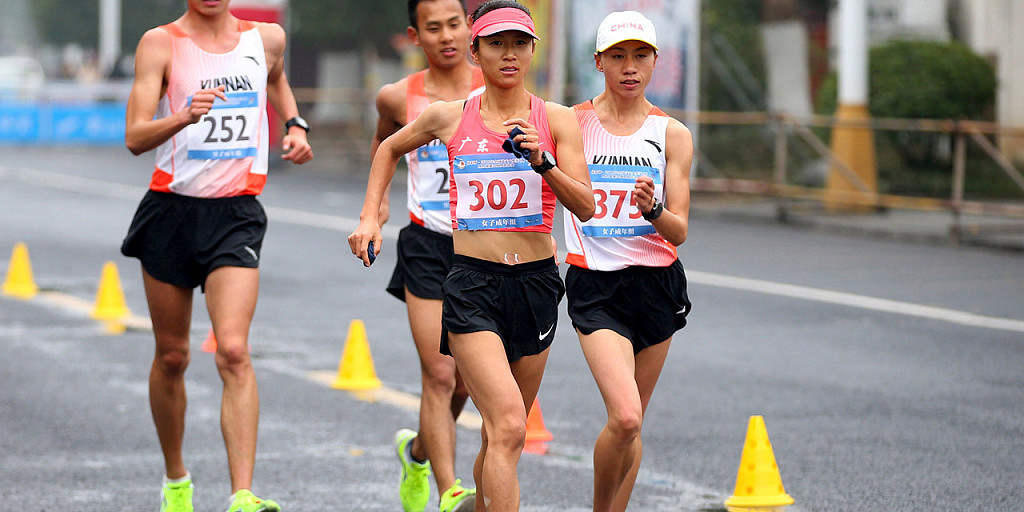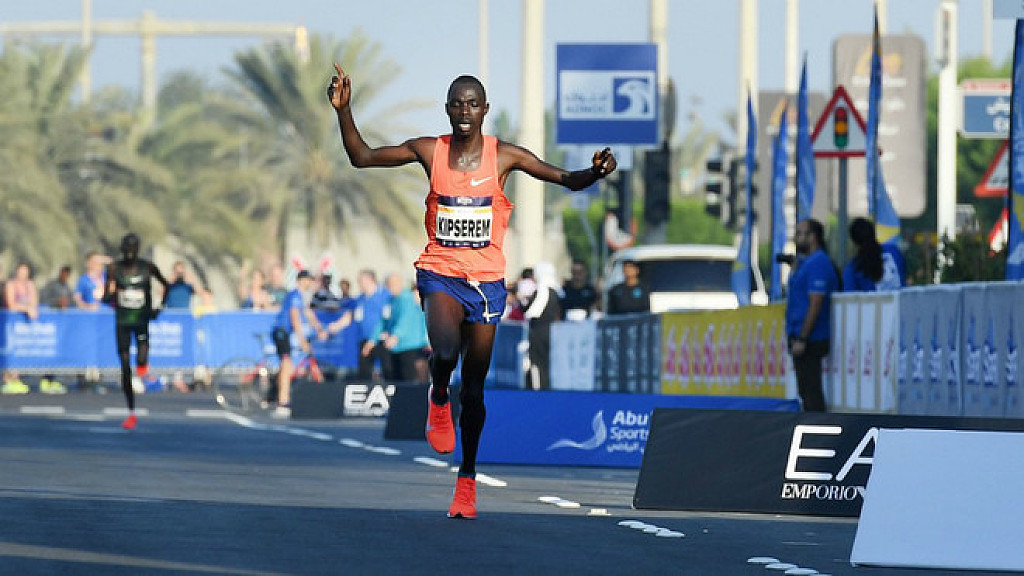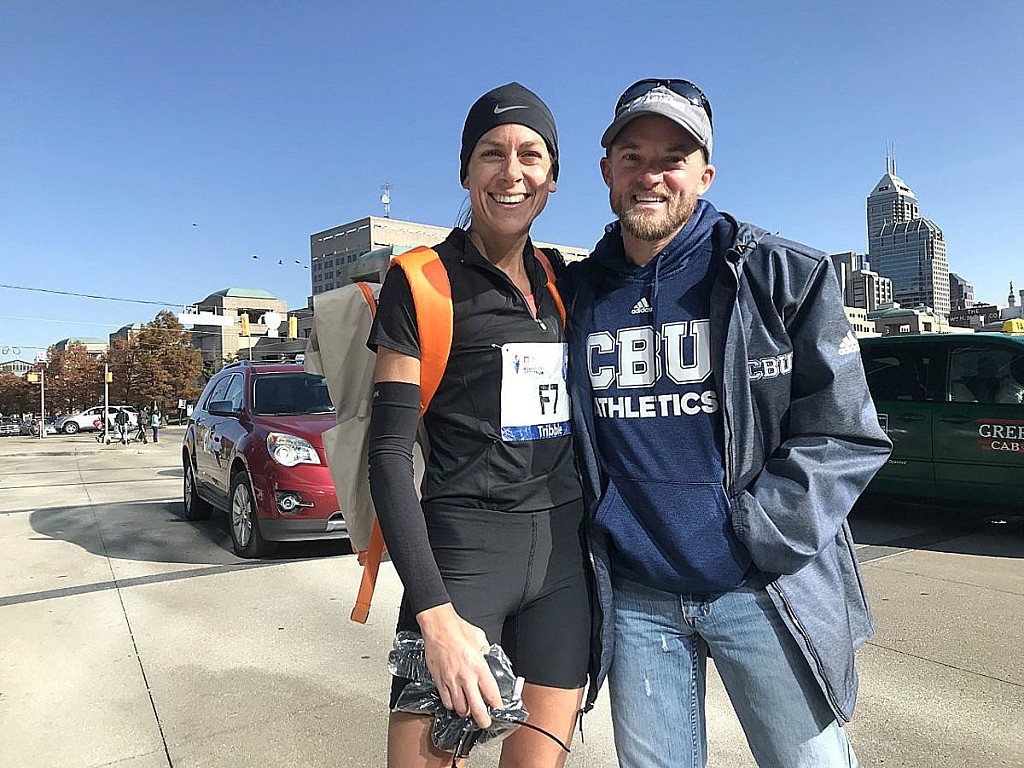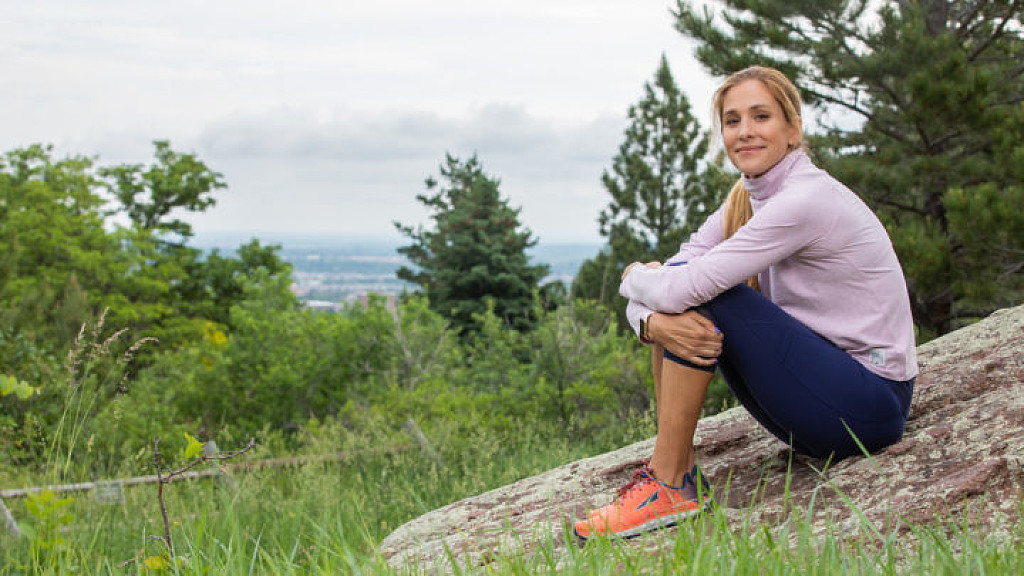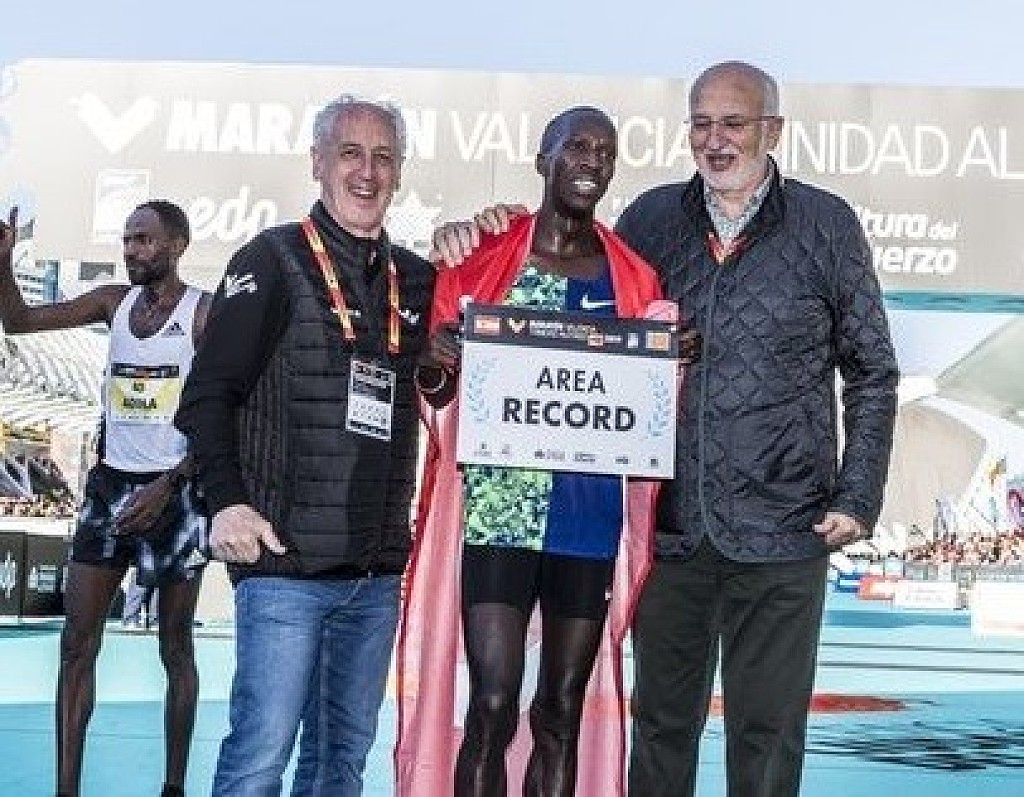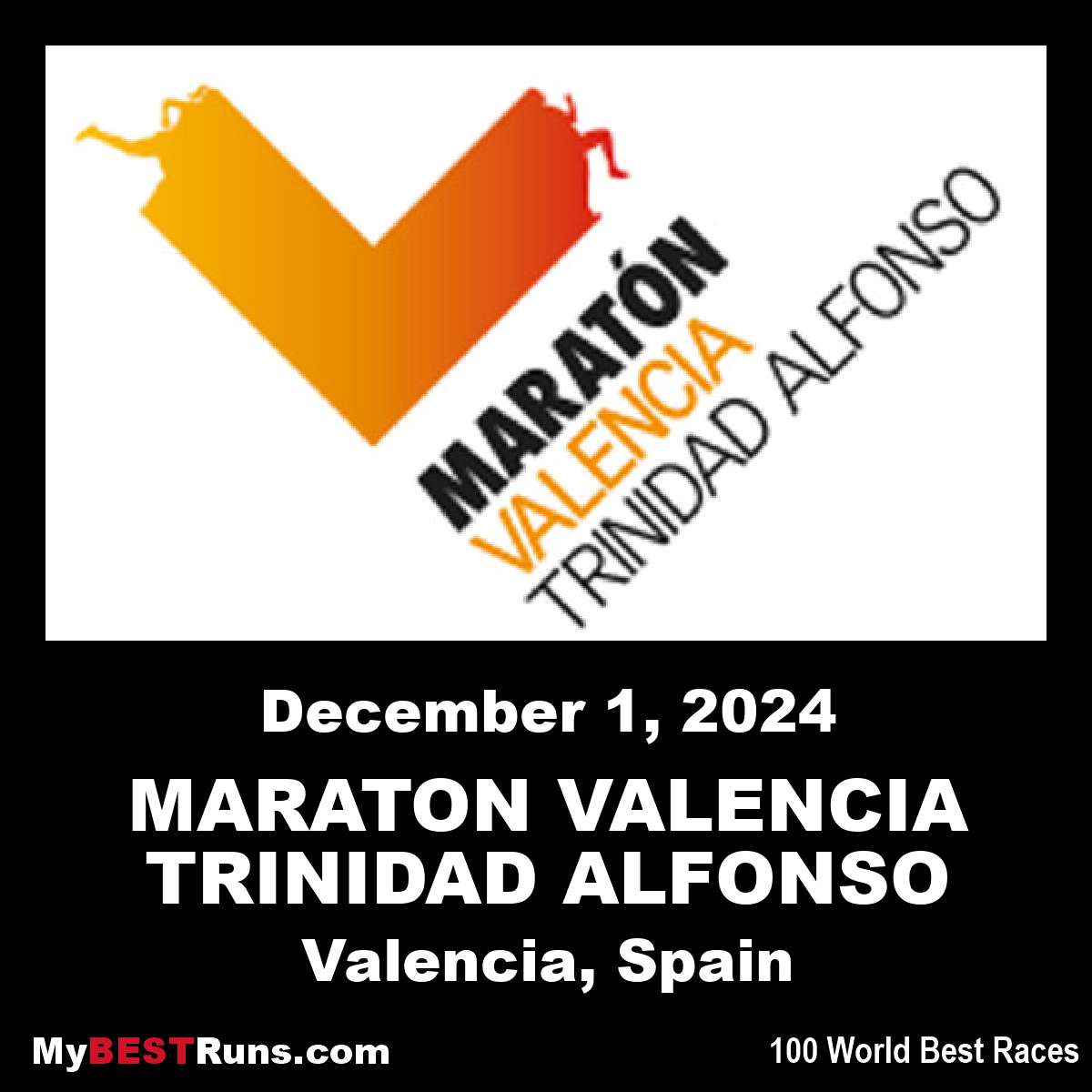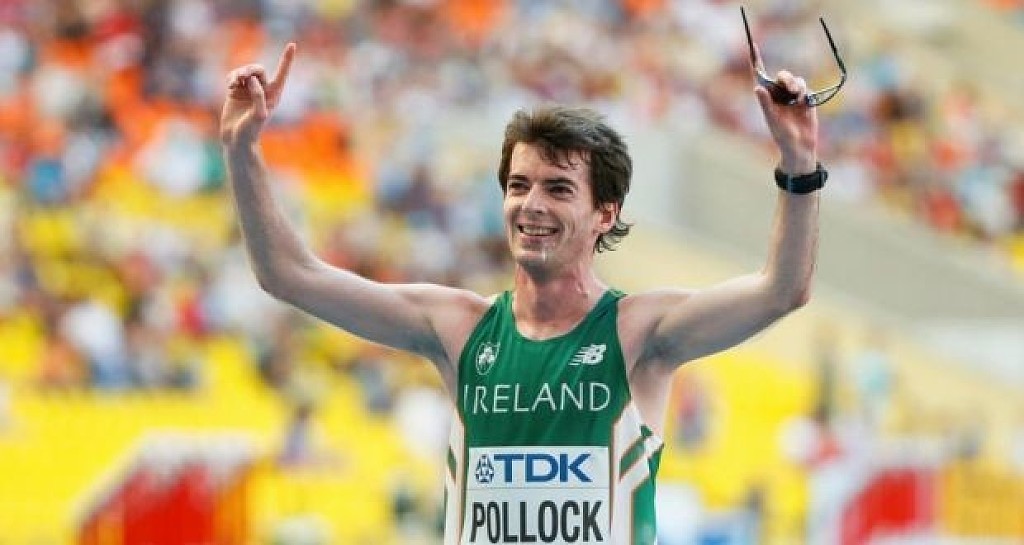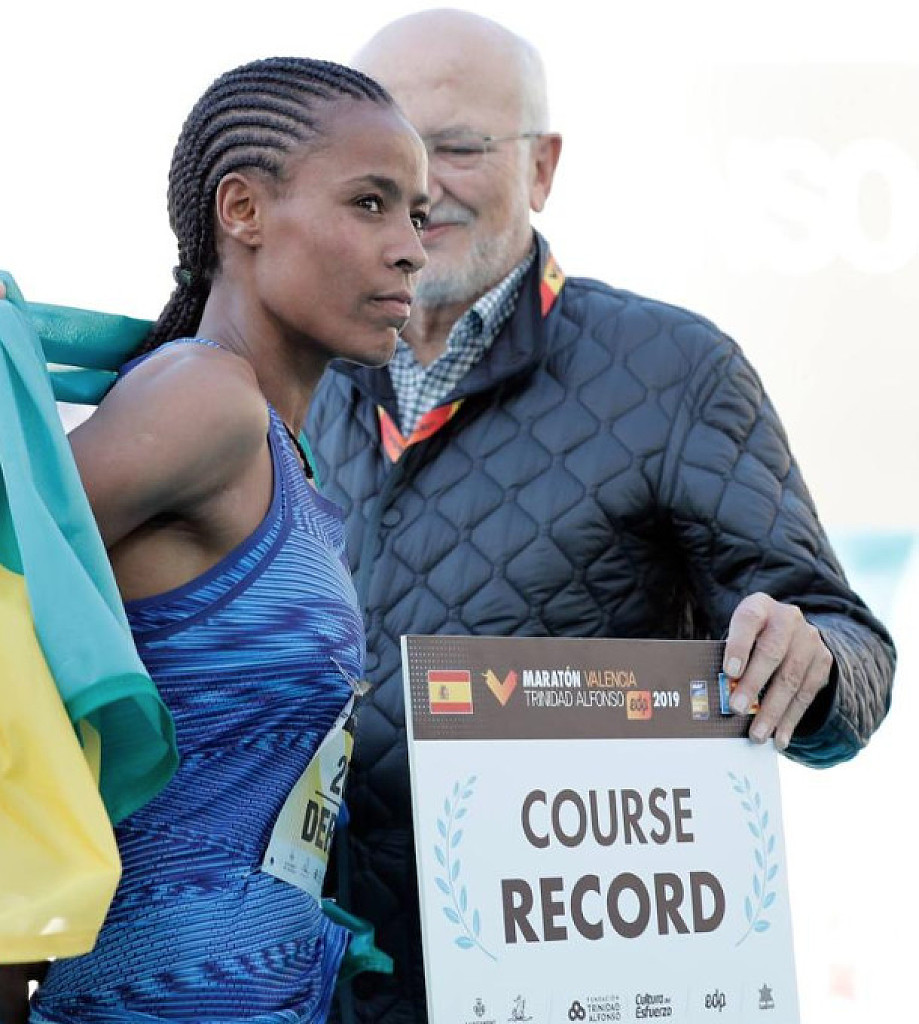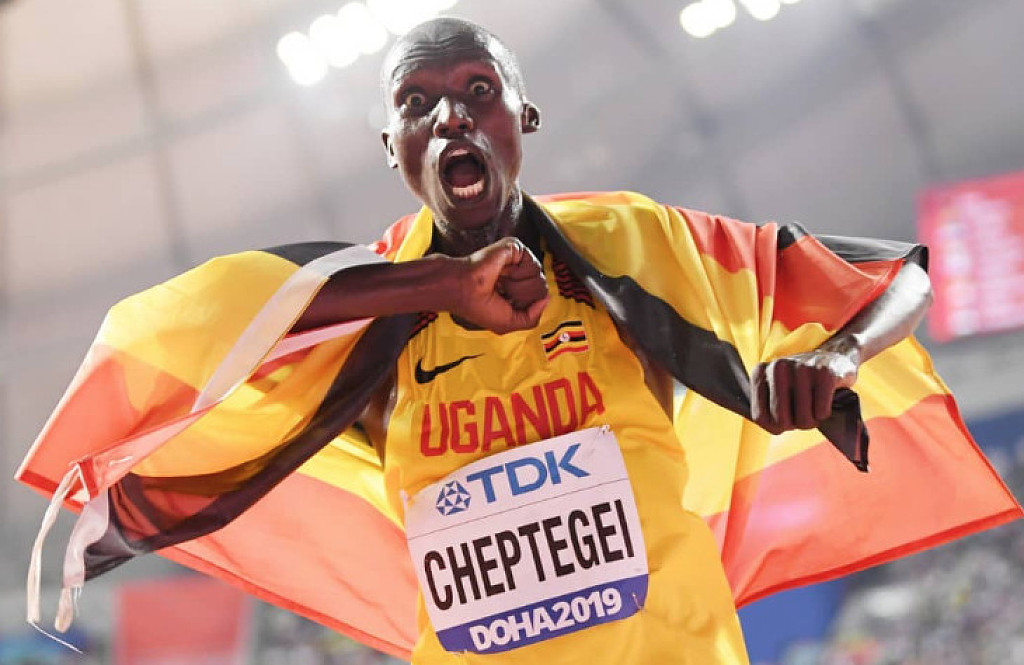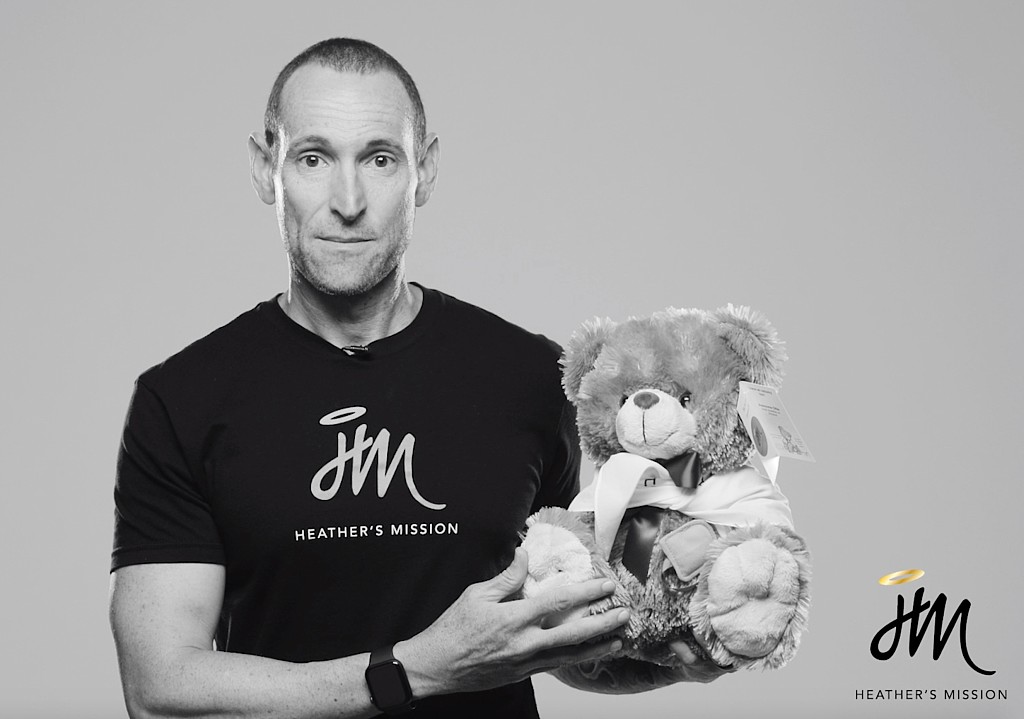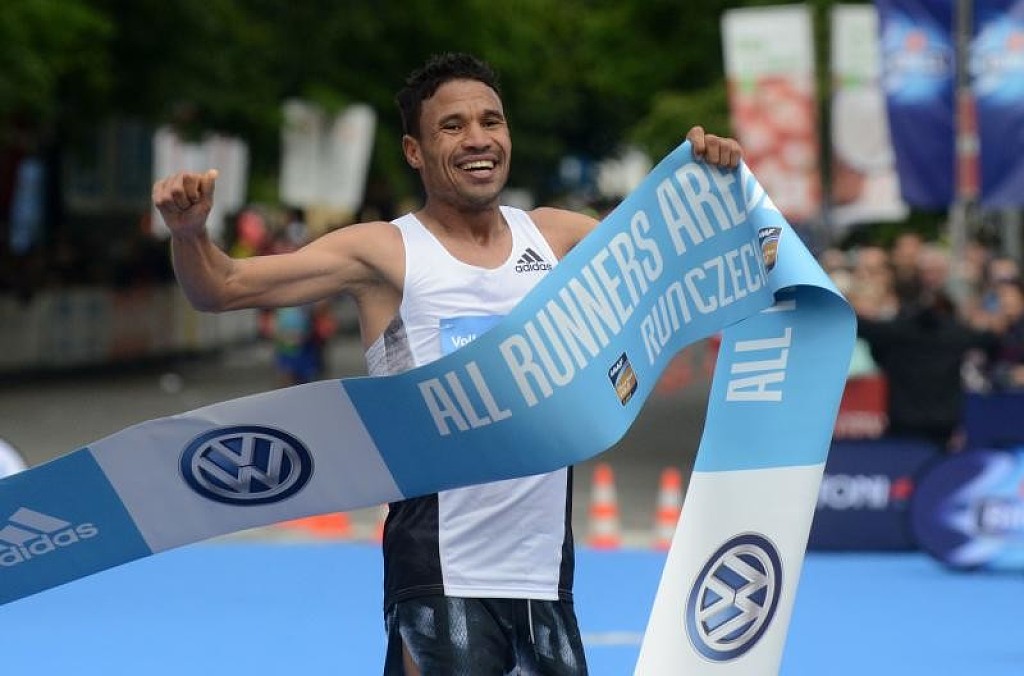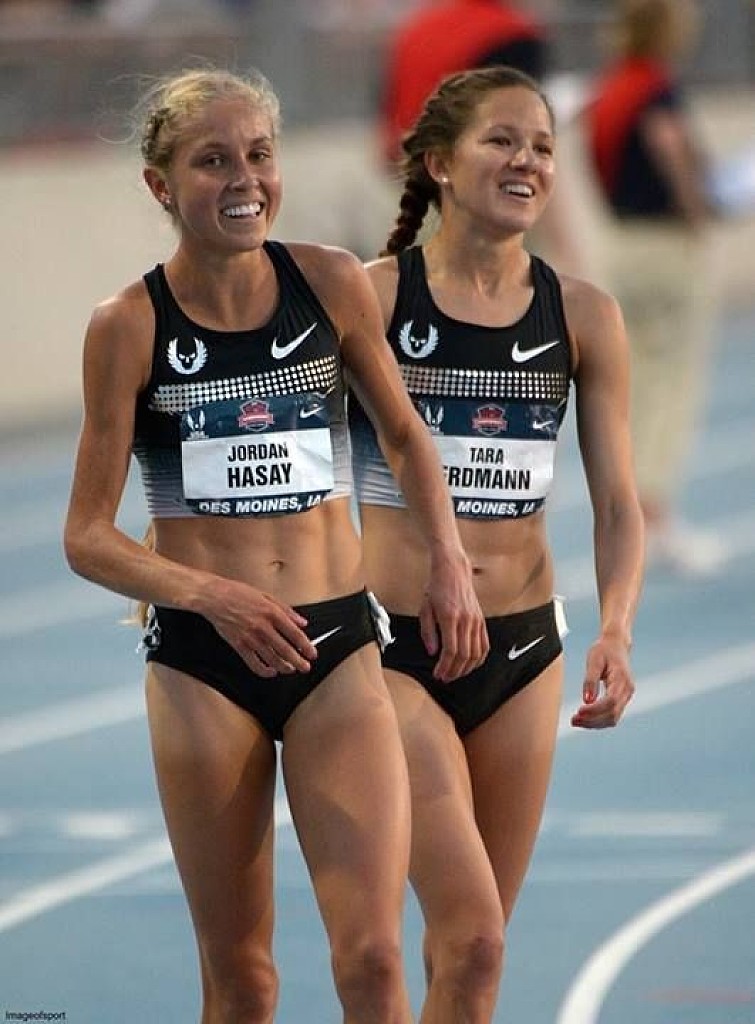Running News Daily
Running News Daily is edited by Bob Anderson in Mountain View, California USA and team in Thika Kenya, La Piedad Mexico, Bend Oregon, Chandler Arizona and Monforte da Beira Portugal. Send your news items to bob@mybestruns.com Advertising opportunities available. Over one million readers and growing. Train the Kenyan Way at KATA Running Retreat Kenya. (Kenyan Athletics Training Academy) in Thika Kenya. Opening in june 2024 KATA Running retreat Portugal. Learn more about Bob Anderson, MBR publisher and KATA director/owner, take a look at A Long Run the movie covering Bob's 50 race challenge.
Index to Daily Posts · Sign Up For Updates · Run The World Feed
Dina Asher-Smith, four-time European gold medallist will race in front of the London Stadium for the final time before going for a first solo Olympic sprint title at Tokyo 2020
Asher-Smith will take on a world class field at the Diamond League event in London, where British fans will get a chance to give their heroes a rousing send-off before they board the plane for Japan.
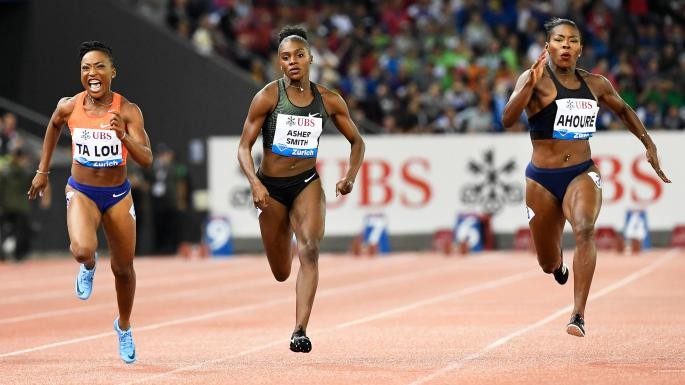
The news follows the recent announcement that Asher-Smith’s British teammate and fellow world champion Katarina Johnson-Thompson will also compete at the Müller Anniversary Games, along with the Müller Indoor Grand Prix Glasgow (February 15) and Müller Grand Prix Gateshead (August 16).
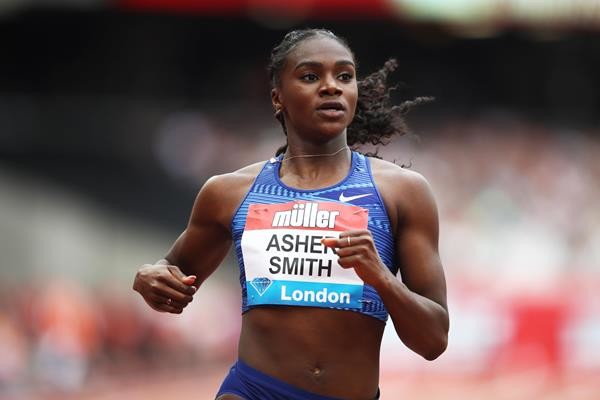
“I’ve always been vocal about my love of competing in front of a home crowd, so to finish my Olympic preparations by competing at the London Stadium will be special and truly is the best send-off I could ask for,” said Asher-Smith.
“2019 has been a whirlwind of a year – the best of my career so far. I hope 2020 can be even better, and to put in a great performance at the Müller Anniversary Games would be a huge boost for me ahead of Tokyo.”
(12/11/2019) ⚡AMPby World Athletics
Tokyo 2020 Olympic Games
Fifty-six years after having organized the Olympic Games, the Japanese capital will be hosting a Summer edition for the second time, originally scheduled from July 24 to August 9, 2020, the games were postponed due to coronavirus outbreak, the postponed Tokyo Olympics will be held from July 23 to August 8 in 2021, according to the International Olympic Committee decision. ...
more...European record-breaking Turkish athlete Kaan Kigen Ozbilen thinks he can run a marathon under 2:04:00 and win a medal in Tokyo
Ozbilen broke Mo Farah’s European record in the Valencia Marathon on Dec. 1, finishing at 2:04:16 mark, nearly a minute better than Farah's 2:05:11.
Ozbilen finished the race at second place, trailing only to Ethiopian debutant Kinde Atanew, who won in a course record of 2:03:51.
"My training partner is the world record-holder Eliud Kipchoge and all my training level was showing under 2:04:00. So, it was an expected result which had to come earlier. But before the world championship in June, l broke a toe and lost six weeks of training and possibly a world medal," Ozbilen told Anadolu Agency on Monday.
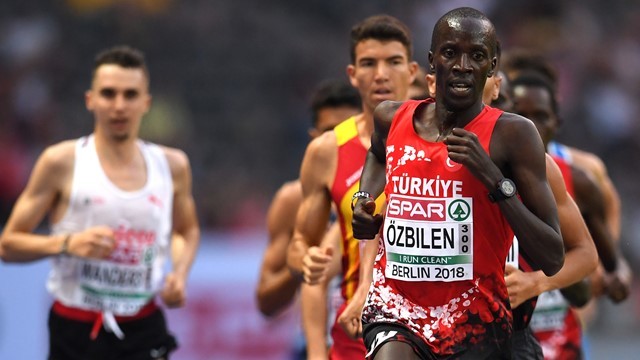
"I am very happy to be a part of European athletic history," Ozbilen said. "My next goal and dream is the Tokyo Olympics medal."
The 33-year-old runner also added that he is planning to run until he is 40.
The athletes have professional family lives and 33 is a mature age, he said, adding that he is also planning to race in the 2024 Olympics.
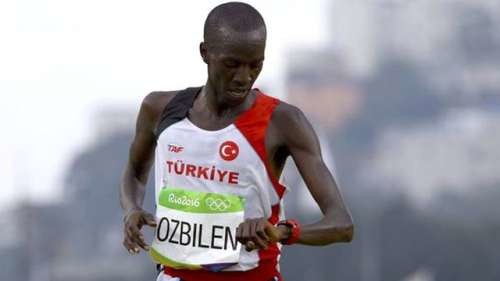
Responding to a question on the secrets of his success, he noted: "The majority of this comes from genetics. It is about choosing the correct discipline, and my results show l chose marathon as the correct discipline for myself."
"What I see in Turkey is a problem in talent selection and very few clubs are supporting athletes at very low incomes.
"You can not expect a young athlete to grow for European record only with 2,000-3,000 Turkish lira ($345-$517) monthly support," Ozbilen stressed.
Noting that a-2:04:16 marathon result is not a one-day result, but it is "a 10 years [long] journey," he said, adding that it starts at young ages with successful middle distance results, such as 3:35-3:37 maximum for 1,500 meters (4,921 feet).
"After the athlete moves to 5,000 m and 10,000 m, you must reach 13-13:10 in 5,000 m and you must run around or under 28 minutes in 10,000 m," he added.
The federation and clubs must give Turkish athletes long term sufficient and individual support to have successful results, he added.
Indicating that breaking the world record would not be easy, he said: "Definitely, I will do my best and develop. I put my goals step by step and now my next step is to run under 2:04 and to get a medal in the Tokyo Olympics."
In response to a question on the reason for running for the Turkish flag as a Kenyan-origin athlete, "I love to run for the Turkish flag. Firstly to clarify, l did not get any money or any promise to be Turkish," he stressed.
"My brother Onder Ozbilen was in Kenya and he was known as a big brother in my region for selecting young talents. It took me a year to convince him that l still have big targets.
"We started to run after our dream. To be the best of Europe in front of Mo Farah's record was a dream that only we believed in and now we will go to our new dream of Olympic or World medal."
(12/11/2019) ⚡AMPby Fatih Erel
Tokyo 2020 Olympic Games
Fifty-six years after having organized the Olympic Games, the Japanese capital will be hosting a Summer edition for the second time, originally scheduled from July 24 to August 9, 2020, the games were postponed due to coronavirus outbreak, the postponed Tokyo Olympics will be held from July 23 to August 8 in 2021, according to the International Olympic Committee decision. ...
more...It may come as a surprise, but Nike's popularity is not growing as fast among Strava users as other brands
The running/cycling/social media platform Strava, which is celebrating its 10th anniversary, has just published its much-anticipated Year in Sport. One of the most striking pieces of information in it, not surprisingly, concerns shoes. The fastest-growing shoe on Strava is not the Nike Vaporfly or NEXT%, as you might expect. In fact, it’s not even close.
That distinction belongs to the HOKA Carbon X, the brand’s carbon-plated racing shoe introduced last summer and worn by two-time Western States champion Jim Walmsley when he set the 50-mile world record in California in May 2019.
The second-fastest growing model is the Adidas Solar Glide, and the third is the Fresh Foam Beacon by New Balance, one of the shoes favored by American ultrarunner and multiple age-group record-holder Gene Dykes.

What the research did show, however, is that among Strava runners who ran the World Major Marathons and logged what shoe they were wearing, Nike NEXT% wearers posted the fastest times. Three guesses as to which shoe was next fastest: that’s right. The Vaporfly.
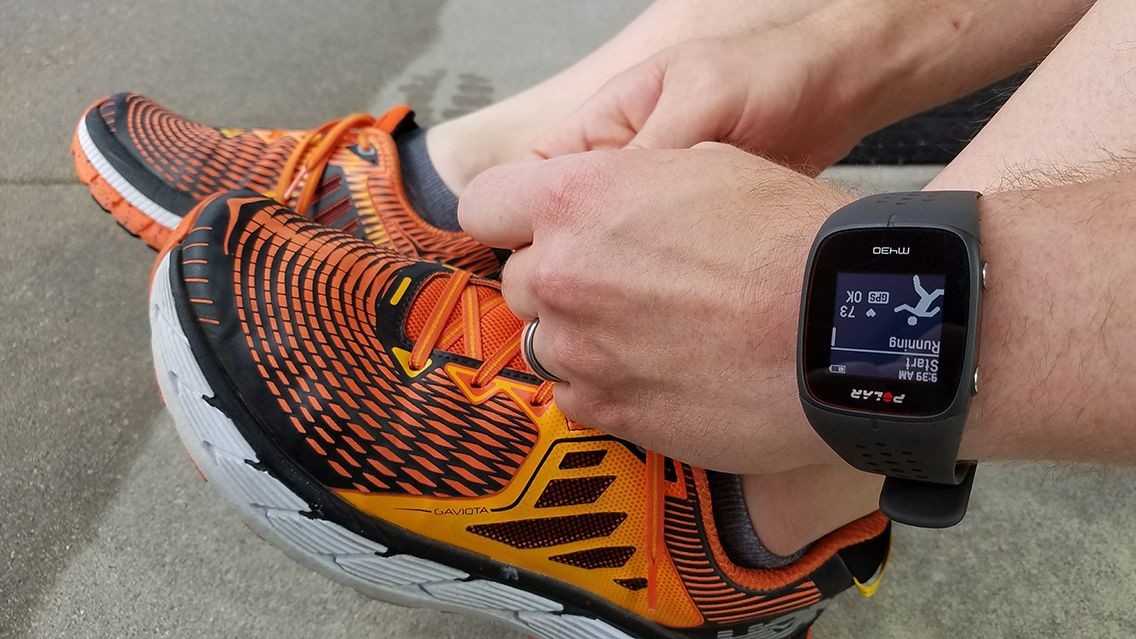
Some other interesting facts emerging from Strava’s research over the past year: we knew that running is hugely popular in Japan, but the Japanese are not stopping at the marathon–according to Strava in 2019, the island nation has more ultramarathoners per capita than any other country in the world.
Further, almost 24 per cent of runners in Japan have completed a marathon or ultra. That’s an increase of 23 per cent over last year, and more than double the percentage of marathoners and ultrarunners in the next most marathon-mad country, France (which had 10.4 per cent). The US was third, with 7.6 per cent.
(12/11/2019) ⚡AMPby Anne Francis
Weather in Louisiana can be unpredictable, but the Louisiana Marathon has avoided any major issues from Mother Nature since its inception in 2012
Even with warm conditions in 2017 and near-freezing temperatures in 2018, the weather has been about as good as can be expected for Baton Rouge runners.
The 2019 Louisiana Marathon might be different, however, as the city is expecting a roller coaster of a weekend.
“We’ve had great weather for the most part for seven years,” Louisiana Marathon race director Jonathan Dziuba said. “Two years ago, it was really warm and runners don’t necessarily like that. We have emergency and contingency plans in place for warm weather as well as for cold weather, as well as dangerous tornadoes, high winds and lightning and things like that.”

Regardless of the weather, Dziuba and the race production team made sure they could accommodate the injuries that might arise from extra cold or warm weather. That won’t change this weekend.
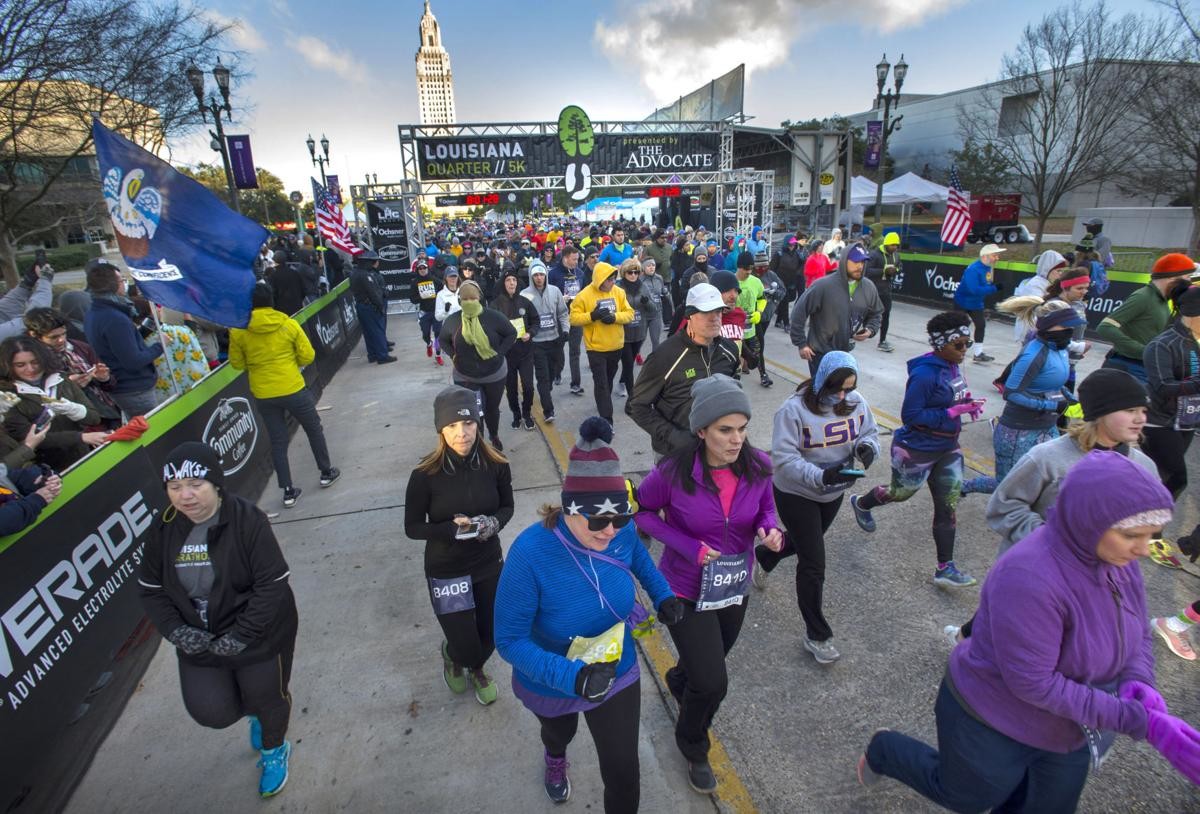
The high of 66 and low of 35 is forecast for Saturday’s Louisiana 5K and quarter-marathon (that's the good part). Consistent rain and thunderstorms are expected during those morning runs, WBRZ chief meteorologist Josh Eachus forecasted.
The weather is set to be clear and sunny Sunday for the half and full marathons, but temperatures will drop between 35 to 40 at race time.
Dziuba said he's confident the race will run smoothly regardless of the weather.
“I keep hearing (about) this terrible weather, but the weather actually looks fantastic,” Dziuba said. “Other than this rain Saturday, after the races are over, I’m not sure what everybody’s talking about. It looks really good and we work very closely with the National Weather Center. We have direct lines to meteorologists and weather agencies in 15-minute increments (during the races).”
The race production crew takes extra precautions to accommodate the various weather outcomes.
Runner safety is paramount to the Louisiana Marathon team, said race communications director Erin Rosetti, and a color-coded event alert system keeps marathon participants aware of the ever-changing weather conditions.
(12/11/2019) ⚡AMP
Louisiana Marathon
Welcome to the Louisiana Marathon Running Festival. Rendezvous with runners from 50 states and over 30 countries who share a passion for Louisiana as they race our fast, flat and festive courses. Stick around for the best Finish Fest on the bayou and enjoy tastes of gumbo, jambalaya, étouffée, duck confit and couch du lait (to name a few dishes...
more...Nike employees protested at the Beaverton, Ore. headquarters on Monday following the reopening of the building named after Alberto Salazar
On Monday, the day that the sportswear giant Nike reopened the Beaverton, Ore. headquarters building named after disgraced coach Alberto Salazar, Nike employees staged a protest regarding its mistreatment of women, and were threatened with termination if they spoke to the media.
The Wall Street Journal reports that, “A flier circulating among employees read, “Join us for a campus walk to celebrate what women bring to sport and to raise awareness of how Nike can support our female athletes and employees.”
There was another flier circulating ahead of the protest–this one was also distributed by Nike employees but had a different tone. It read, “No employee is permitted to speak to news media on any NIKE-related matter either on- or off-the-record, without prior approval from Nike Global Communications.” The policy continues, “Failure to comply with NIKE’s media policy could result in termination of employment.”

Nike spokesperson Greg Rossiter said to The Willamette Weekly that this cautionary flyer was not officially distributed by the company. “We respect and welcome employees’ feedback on matters that are important to them. The flier prepared by some employees was not officially distributed by Nike.”
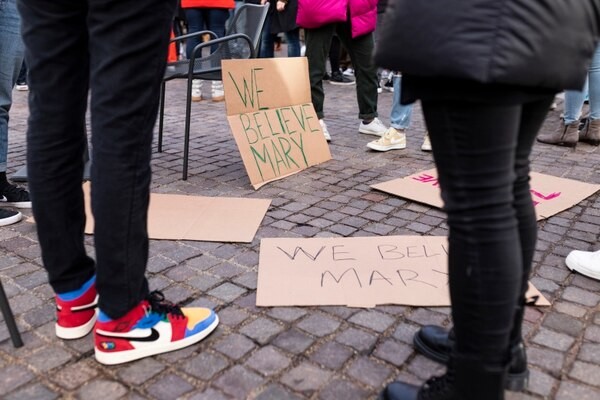
The US Anti-Doping Agency banned Salazar in September for four years following a years-long investigation and secret arbitration case. The details appear in a BBC report and a statement by USADA outlining the specific charges, which include trafficking in testosterone (a banned substance), illegal methods and evidence-tampering at the Nike Oregon Project’s Beaverton, Oregon headquarters. Salazar is former coach to Mo Farah and Kara Goucher and current coach of marathoner Galen Rupp and the newly-crowned 10,000m champion Sifan Hassan, among others.
Nike shut down the NOP training group 11 days later. Salazar’s athletes have since found new coaches and training groups.
Following the dissolution of the NOP, American prodigy Mary Cain came forward and told her story about her experience with the group. According to Cain, the NOP’s “win at all costs” mentality involved Salazar and his assistant coaches (who are not named) pushing her to take birth control pills and diuretics to lose weight, weighing her and verbally abusing her in front of her teammates. Cain’s success on the track came at a huge price: she didn’t have her period for three years, which weakened her bone health so much that she endured five stress fractures. Her success dwindled, and when she left the program, nobody really knew why.
On Monday, protesters signs read, “We believe Mary.”
(12/10/2019) ⚡AMPby Madeleine Kelly
Veteran Olympian and cancer survivor Kikkan Randall, Shares 3 Tips for athletes facing setbacks and Fitness Comeback
As a veteran Olympian, cancer survivor and marathoner-in-the-making, Kikkan Randall has learned a lot along the way about how to thrive on life’s toughest days.
In a series of interviews with Women’s Running, Randall shared her key messages for athletes facing setbacks, be it cancer or injuries, and life after the disease.
1.-Keep moving. Continue to set goals.

Fresh off her Olympic experience and years as an elite athlete, Randall was in great shape when she was diagnosed with breast cancer in June 2018. Even though she faced a rough road ahead, which included surgery, radiation and chemotherapy, Randall was determined to maintain some fitness.
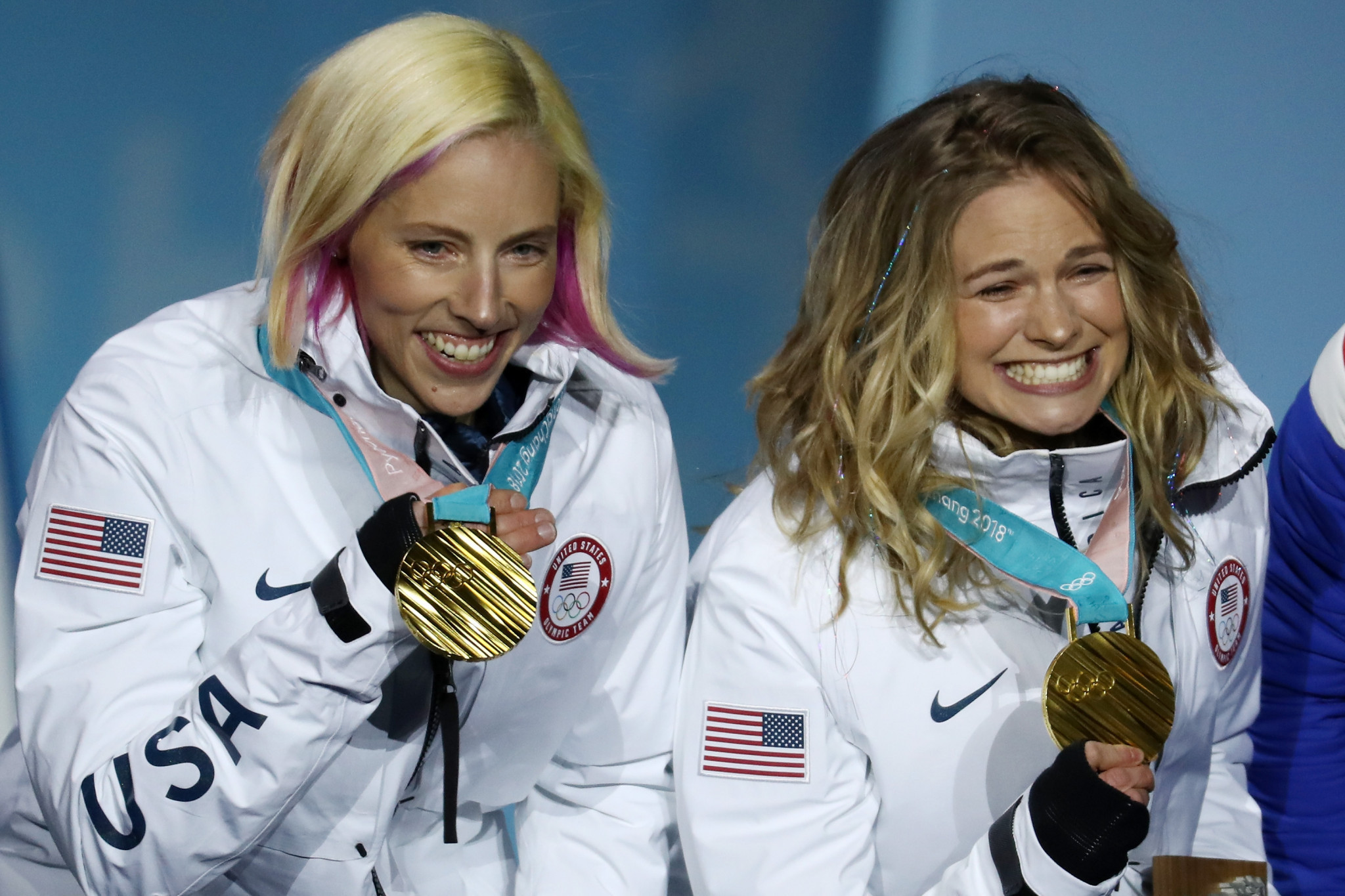
“I made the commitment to stay as physically as active as I could through my treatment, and that was super important,” she says, noting that she did cardio and strength training. “Knowing I could do a workout every day, even at lower level, it felt like a little victory.”
Not only did easy exercise help with fluid retention caused by cancer-fighting drugs, it lifted her mood and gave her a sense of control.
“Be open-minded about what you can do,” Randall says. “Always be willing to try. I had a ten-minute rule for myself. I would go out and try to do something for ten minutes, if it went well I would keep going, and if it was too awful, I would go home and rest.”
2.- Surround yourself with people who give you hope.
Just as Randall needed a powerful support system to get her to five Olympic Games, she leaned on a strong team to get her through cancer treatment.
Her husband, Jeff, kept her focused on her good prognosis, while her toddler son, Breck, provided a much-needed distraction from her worries. Her parents took care of her while she received treatment in Alaska and the list goes on.
Liz Stephen, Randall’s ski buddy, was with her when she received her diagnosis and visited Randall on days when she felt especially terrible.
“Everybody around me was just really proactive and positive, and that encouraged that side of my personality,” Randall says.
She also drew inspiration from Gabe Grunewald, who died in June after a ten-year battle with adenoid cystic carcinoma. Last fall, Randall met Grunewald at an AKTIV Against Cancer event.
“I just finished chemo a week earlier, and she was just congratulating me and was so positive,” Randall says.
In May, Randall ran the Brave Like Gabe 5K as a virtual participant to show support for Grunewald, who was in the hospital at the time, battling complications from cancer. Randall recalls struggling through the solo run.
“I thought, ‘I’m out doing this for Gabe, so I’m not going to quit.’ I came back at the end of that run, and I felt recharged and I sent her a picture,’” she says.
Since Grunewald’s death, Randall says she’s as motivated as ever to run and honor her role model’s memory.
3.-Be patient with your fitness comeback. Celebrate your progress.
Randall says her body bounced back well after the rigors of cancer treatment, but women shouldn’t expect to immediately regain their fitness.
“As soon as you finish treatment, you are so motivated you’re like, ‘I just want to get back to the way I was.’ It takes time,” she says, “And there are some lingering (treatment) effects that take a while to iron out.”
As you gradually build your fitness, remind yourself how far you have come already.
“Celebrate what you can do is my biggest thing,” she says.
Even for Randall, an Olympic champion, marathon training has been a grind, starting with the intense pounding on her legs she didn’t experience in skiing. In addition, she had to adjust to the fact that, unlike in skiing, she can’t use downhills to recover.
“I’m celebrating the fact that my treatment’s been effective, and we have a good, optimistic look forward on being cancer free,” she says. “I’m just really grateful for that.”
(12/10/2019) ⚡AMPby Theresa Juva-Brown
Eritrean born Efren Gidey, went from refugee to U20 podium at Euro Cross
The European Cross Country Championships took place in Lisbon, Portugal on Sunday, with Norway’s Jakob Ingebrigtsen taking home gold in the 6.2K U20 race for the fourth straight year, and by a 38-second margin. Ayetullah Aslanhan of Turkey was second. But most astonishing was Eritrean-born Efrem Gidey, racing for Ireland for the first time, bringing home the bronze medal and contributing to his team’s fourth-place finish.
According to a report by the Irish news outlet RTÉ Sport, Gidey’s participation wasn’t assured until the last minute, due to visa issues. The athlete had spent six months in a refugee camp in Calais with his family before landing in Dublin in March, 2017. He runs with the Clonliffe Harriers, where he didn’t excel right away (small wonder, considering what he had been through, and that he arrived speaking no English), but soon found his niche. Earlier this year Gidey set a national record for Ireland of 14:34.22 in the senior boys’ 5,000m.
In the 10.2K senior men’s race, another Eritrean-born athlete, Robel Fsiha of Sweden, took gold. Aras Kaya of Turkey was second, and Yemaneberhan Crippa of Italy was third. (Julien Wanders, pacer to Eliud Kipchoge at INEOS 1:59, finished just off the podium in fourth place. Filip Ingebrigtsen, last year’s champion, finished 12th. All three Ingebrigtsen brothers also ran as pacers for Kipchoge.)

In the 8.3K senior women’s race, Turkey’s Yasemin Can won gold for the fourth consecutive year. Karoline Bjerkeli Grøvdal of Norway took silver and Samrawit Mengsteab of Sweden won bronze.

In the 4.3K U20 women’s race, Nadia Battocletti of Italy won gold, Klara Lukan of Slovakia took silver and Mariana Machado of Portugal won bronze.
In the 8.3K U23 men’s race, Jimmy Gressier of France won gold, Elzan Bibic of Serbia took silver, and Abdessamad Oukhelfen of Spain took bronze. In the 6.3K U23 women’s race, Anna Emilie Møller of Denmark won gold, Jasmijn Lau of the Netherlands won silver and Stephanie Cotter of Ireland took bronze.
The course, which had a short (500m) loop and a longer 1,500m loop, featured some tight turns and some hills, but although conditions were overcast, it did not appear particularly muddy.
(12/10/2019) ⚡AMPby Anne Francis
Hiwot Gebrekidan and Gebretsadik Abraha took an Ethiopian double at the Guangzhou Marathon, smashing the course records
Hiwot Gebrekidan and Gebretsadik Abraha took an Ethiopian double at the Guangzhou Marathon, smashing the course records at the World Athletics Gold Label road race on Sunday (8).
The 24-year-old Gebrekidan enjoyed a comfortable sole lead before 30km and wrapped up her convincing victory with a lifetime best of 2:23:50, smashing the 2:25:12 course record set by compatriot Rahma Tusa in 2017.
Helped by a pacemaker, the women’s race was soon reduced to a duel between Gebrekidan and Kenya’s Celestine Chepchirchir before the 5km water tables. The duo led side-by-side and when they passed 25km in 1:24:38, they were already nearly five minutes ahead of the chasers and well on track to attack the course record.
After a further two kilometres, the in-form Ethiopian broke clear from Chepchirchir and continued widening the gap until the finish.
It is Gebrekidan’s second title over the classic distance following her victory two years ago at Lake Tiberias where she achieved her previous PB of 2:25:45.
The 23-year-old Chepchirchir, who set her PB of 2:24:48 in Seoul nine months ago, finished second in 2:27:10 while local runner Zhang Meixia finished as a remote third finisher with a career-best time of 2:32:01.
The top six finishers in the men’s race all beat the 2:10:01 course record set by Morocco’s Abdellah Tagharrafet in 2015.
The 27-year-old Abraha emerged victorious from a three-man battle in the last 10 kilometres to take the top honours in 2:08:04, which is the fastest time achieved by the former Prague and Marrakesh marathon winner since 2014.
Abraha, whose personal best of 2:06:23 was registered back in 2012, patiently hid himself in a lead pack of more than 10 runners that passed the 10km mark in 30:27 and 15km in 46:03.
The leaders were trimmed to 10 by 25km in 1:16:11 and further cut to six after another five kilometres in 1:31:38. Abraha then started his powerful charge, with only Kenya’s Mike Kiptum and Emmanuel Naibei managing to keep up with his pace by 32km.
The 27-year-old Kiptum, a 2:06:22 performer, quit the title contest before 40km. Abraha waited for another kilometre to finally pull clear and never looked back before hitting home in style.
Naibei knocked nearly two minutes off his PB to take the second place in 2:08:27. Kiptum held off a strong challenge from Chinese runner Dong Guojian in the last kilometre to notch the third place with a margin of just two seconds in 2:08:58.
(12/09/2019) ⚡AMPby World Athletics
Guangzhou International Marathon
The Guangzhou Marathon was launched in 2012 and certified by CAA as the A level event. From 2014 to 2017,Guangzhou Marathon was recognized as the CAA Gold Medal Race for four consecutive years. The year of 2018 has seen this event was upgraded as IAAF Gold Label Road Race after it was awarded as IAAF Bronze and Silver Label Road...
more...Kenyan Elisha Barno and Kenyan Jane Kibii claimed the top men’s and women’s at the 37th annual California International Marathon
The winners were joined by an estimated 13,000 marathon and marathon relay registered runners who started in Folsom and ran the downhill course to finish in front of the State Capitol in Downtown Sacramento.
Rain was not falling, but clouds were forming as runners took their places in corrals at the starting line. Cool, but mostly dry weather is one of the hallmarks of the annual race.
Barno, of Kenya, finished with the day’s top time of 2:13:36 to take the men’s race, in which the three top finishers pushed one another. When one felt good, he brought the others along.

At the 24th mile, the three were running strong together at a 5:01 per mile pace.

“At 33 kilometers (20.5 miles) I tried to move and I saw, like, these guys, they are very strong,” Barno said. He made his final move in the penultimate mile, he said.
Both race winners, Kibii and Barno, take home $12,000 in prize money, plus performance bonuses.
(12/09/2019) ⚡AMPCalifornia International Marathon
The California International Marathon (CIM) is a marathon organized by runners, for runners! CIM was founded in 1983 by the Sacramento Running Association (SRA), a 501(c)(3) non-profit organization. The SRA Board of Directors is comprised of runners with a combined total of 150+ years of service to the CIM. The same route SRA management created for the 1983 inaugural CIM...
more...Titus Ekiru shatters Honolulu Marathon course record
On Sunday morning, Titus Ekiru of Kenya shattered the Honolulu Marathon course record, running a 2:07:59 to defend his title and win the race by more than five minutes. Second place went to Wilson Chebet in 2:13:13 and third place to Edwin Koech in 2:14:19.
Kenya’s Margaret Murikui was the women’s winner, in 2:31:09. Betsy Saina, who was third at the Toronto Marathon (where she ran her personal best of 2:22), and 10th in Boston this year, was second on Sunday clocking 2:31:51. Third place went to American Renee Metivier in 2:43:17 who, with that time, has secured her spot at the US Olympics Trials.
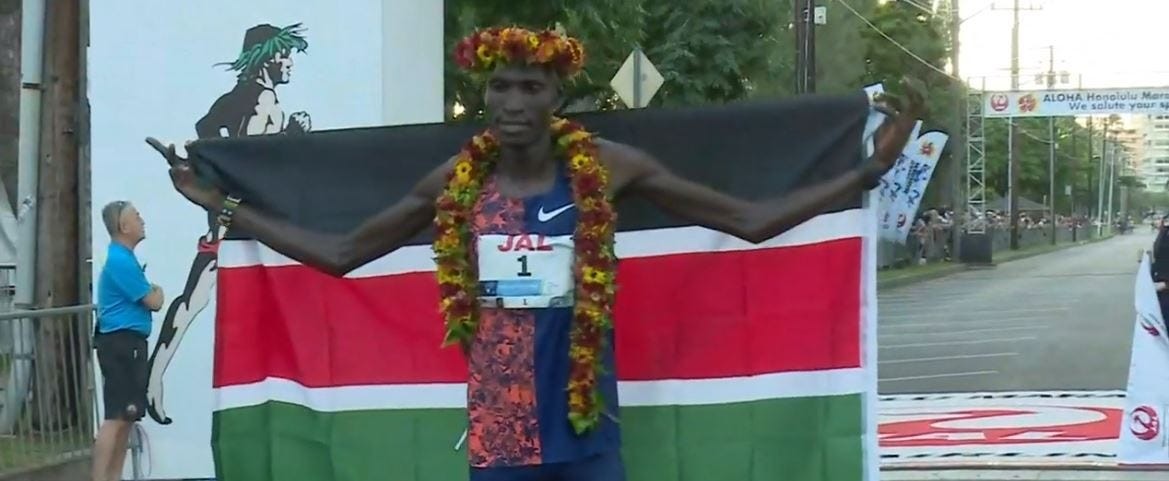
Titus Ekiru of Kenya broke the course record in repeating his victory of last year, winning the 47th Honolulu Marathon.
Ekiru now owns two of the three fastest Honolulu times. The previous record of 2:08:27 was set by Lawerence Cherono two years ago.
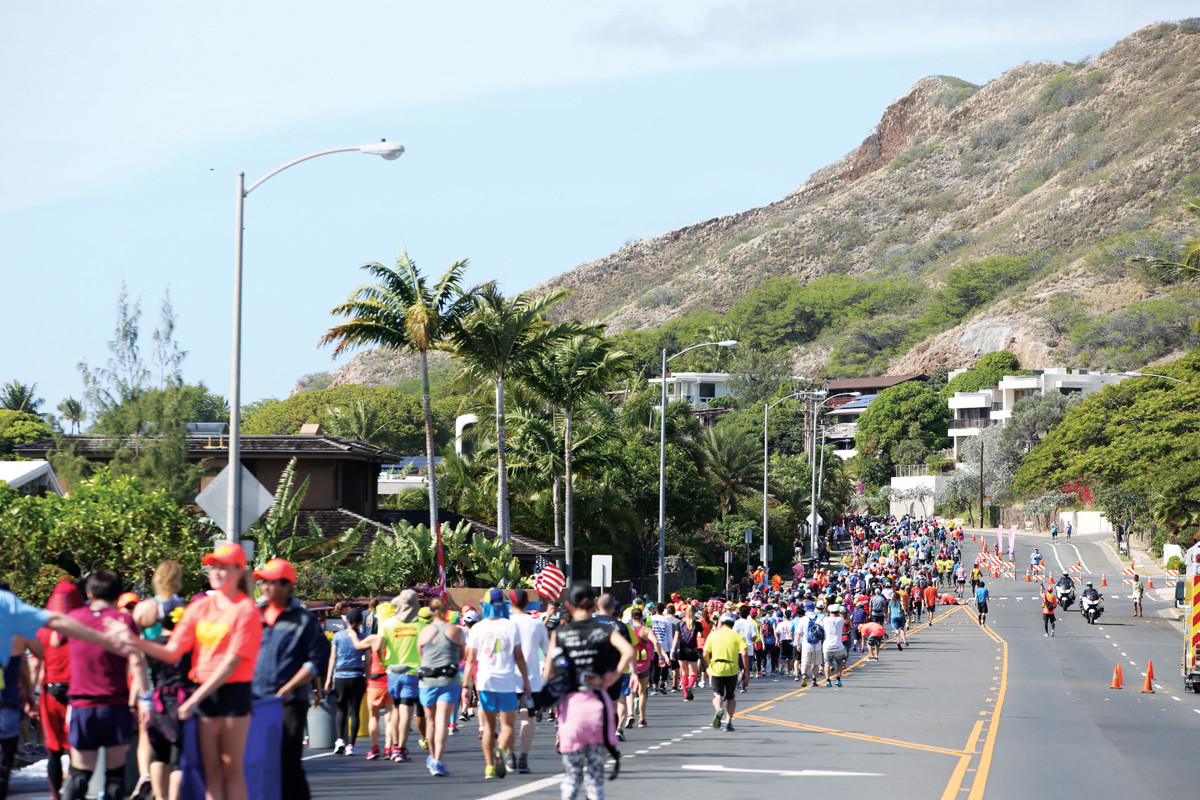
Humberto Baeza (2:36:26) and Polina Carlson (2:57:38) were the top Hawaii male and female resident finishers. Maui’s Matt Holton (2:42:36) and Malia Crouse (3:12:25) claimed the kama‘aina awards for runners born and residing in Hawaii.
In the wheelchair division, Masazumi Soejima won his 13th Honolulu Marathon and seventh in a row with a winning time of 1:35:37. Megan O’Neil won the women’s race in 2:48:08.
Around 19,500 people started this year’s race, with another 5,900 taking part in the “Start to Park” 10k race and another 2,700 participating in the Honolulu Marathon’s “Merrie Mile” run on Saturday.
(12/09/2019) ⚡AMPHonolulu Marathon
The Honolulu Marathon’s scenic course includes spectacular ocean views alongside world-famous Waikiki Beach, and Diamond Head and Koko Head volcanic craters.The terrain is level except for short uphill grades around Diamond Head. ...
more...The man who inspired the Barkley Marathons has died at age 70
Barry Barkley of Shelbyville, Tenn., for whom race director Lazarus Lake (aka Gary Cantrell) named the Barkley Marathons, died on December 5. An obituary in the Shelbyville Times-Gazette says Barkley “loved the outdoors, playing pool, and his animals.”
Trail Running Magazine reach Laz by email. He offered the following on his friend’s passing: “the ultramarathon community lost one of its own this week, with the passing of barry barkley (70). most only know of him indirectly; from the race that bears his name, but he has been a quiet contributor to the sport for the past 42 years. it was always his preference to operate quietly in the background, but he did get enjoyment from the notoriety of his namesake race. since 1979 literally thousands of ultrarunners have met barry at the races. only a handful ever knew who he was. that was how he wanted it. Barry barkley will be sorely missed.”

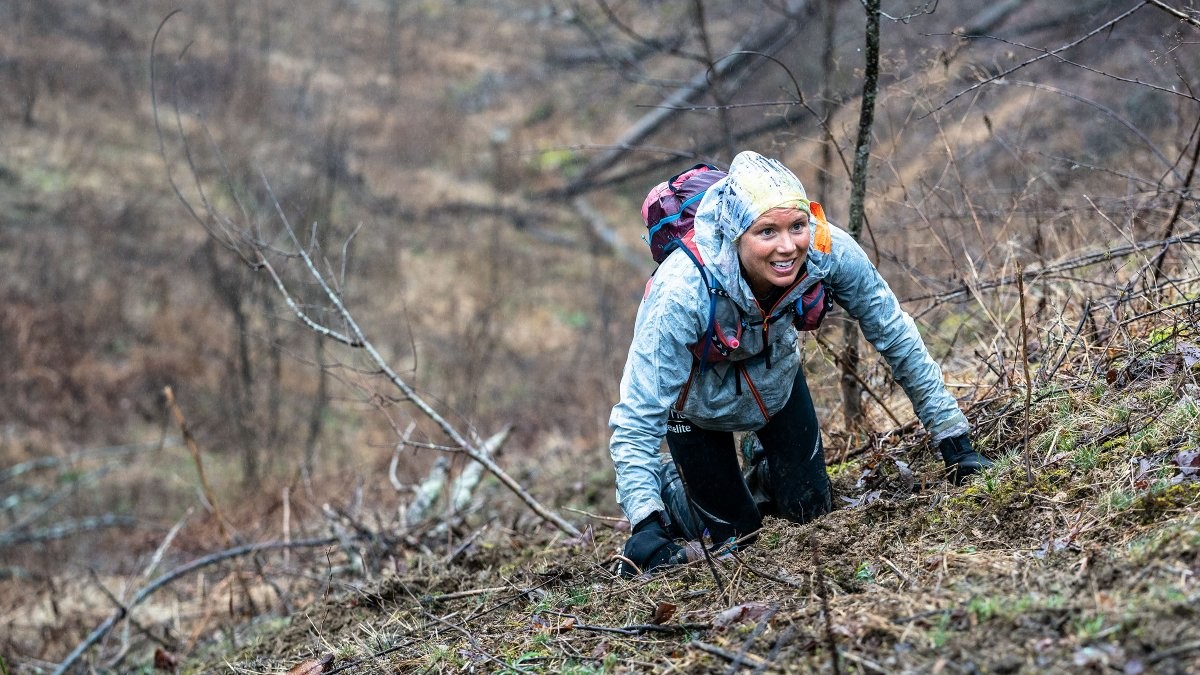
Barkley’s photo shows he bore a marked resemblance to Laz himself, who started the race in 1986 after hearing about the 1977 escape of James Earl Ray (the man who killed Martin Luther King, Jr.) from Brushy State Penitentiary. After more than two days on the lam, Ray had only covered 13 kilometres before being re-captured. The former ultrarunner Laz, who knew the area well, is said to have responded, “I could do at least 100 miles,” and created the race, naming it for his friend, neighbour and running partner. The race course goes through the grounds of Brushy State, which closed in 2009.
The race is a notoriously difficult 100-miler, with a number of quirks that set it apart from any other race on Earth. It involves five laps of a 20-mile loop that many believe is significantly longer than 20 miles, along an unmarked course that changes slightly every year, with huge elevation gains and losses. GPS are not allowed–Laz issues each racer an inexpensive watch that shows only the time, counting down from the 60-hour cutoff. Cheating is impossible, since runners must present specific pages torn from books hidden along the course, in order to start the next lap.
Runners can replenish their water stores at two locations, but otherwise there are no aid stations–they can meet their crews only between loops, back at camp in Wartburg, Tennessee’s Frozen Head State Park.
(12/09/2019) ⚡AMPby Anne Francis
McLaughlin and Coburn confirm their return to the New Balance Indoor Grand Prix in Boston
Sydney McLaughlin and Emma Coburn will return to the New Balance Indoor Grand Prix, the opening leg of the 2020 World Athletics Indoor Tour, in Boston on 25 January.
McLauglin, who'll be returning to the meeting for the third time, is coming off a stellar first season in the professional ranks that saw her win the silver medal over 400m hurdles and gold in the 4x400m relay at the World Athletics Championships Doha 2019. McLaughlin also won the Diamond League title and ended the season with a lifetime best of 52.22 for the 400m hurdles, making her the second-fastest woman in history. In Boston, McLaughlin will compete in the 500m.
Also returning to Boston with a medal from the World Athletics Championships is Emma Coburn, who will be making her sixth appearance. Coburn, won silver in the 3000m steeplechase in Doha, will line up in the two mile.
Great Britain’s top ranked men’s 1500m specialist, Jake Wightman, is also set to come back to the meeting. Wightman won bronze medals over 1500m at both the Commonwealth Games and European Championships in 2018, and finished fifth in the 1500m at the World Championships in a time of 3:31.87, a lifetime best and a new Scottish record. He will race in the 1000m in Boston.
Now in its 25th year, the New Balance Indoor Grand Prix has played host to nine world records and 13 US records.
(12/08/2019) ⚡AMPby World Athletics
Andrew Schoeder of Madison, Wisconsin, and Sarah Mulcahy of Fort Kent were crowned champions of Saturday’s fifth annual Millinocket Marathon
Andrew Schoeder and Sarah Mulcahy won the fifth annual Millinocket Marathon.
Two Bangor, Maine residents, Gabe Coffey and Flori Davis, won the accompanying Millinocket Half-Marathon. Both races were held simultaneously amid temperatures in the low 20s and a light, chilling breeze.
Schroeder, whose wife Angela is a Millinocket, Maine native, was the overall marathon champion with a time of 2 hours, 53 minutes and 23 seconds.
He ran among the leaders throughout the first of two 13.1-mile laps that made up the marathon route, which began and concluded in downtown Millinocket.
The 39-year-old Schroeder then took control during the second lap and finished nearly six minutes ahead of his closest rival, Iain Ridgway of Worcester, Massachusetts. Ridgway was the only other runner to finish in less than three hours with his time of 2:59.13.
“I thought anything under about 3:10 and on a good day a finish in the top 5 would be good,” said Schroeder, who ran a 2:38:13 at this year’s Boston Marathon.
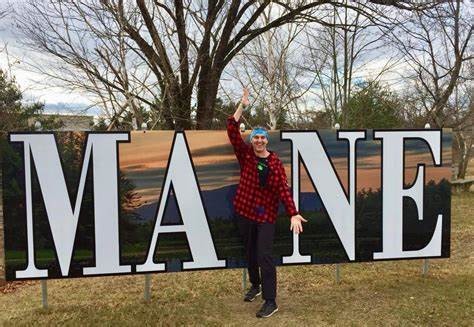
Buster Brown of Lamoine was the top Maine finisher in the marathon, placing third in 3:07:09.
Mulcahy, the only runner to complete all five Millinocket Marathons, used this race as an early training run for the 2020 U.S. Olympic Marathon Trials and won the women’s division for the fourth time with a clocking of 3:08:38. That effort was good for fourth place overall.
Mulcahy will compete in the Olympic Trials next Feb. 29 in Atlanta. She qualified during the 2018 California International Marathon with a time of 2:44:28. Six days later she won the women’s division of last year’s Millinocket Marathon.
“This was a training run for me so I didn’t push anything,” said the 34-year-old Mulcahy, who along with other runners dealt with tricky traction along some portions of the course Saturday due to snow that fell earlier in the week. “There’s no risking injury before February.”
Laura Richard of Fredericton, New Brunswick, was the second-fastest woman in the marathon field and 11th overall in 3:32.49. Jennifer Schott of Nashville, Tennessee, was next, placing 19th overall in 3:46.47.
Coffey, a former Bangor High School distance running standout who now is competing as a freshman at Bates College in Lewiston, won the men’s half-marathon by more than two minutes with his time of 1:19:54.
“It’s the start of indoor track for me so I’m building up mileage,” said the 18-year-old Coffey. “I wouldn’t say I’m in the best shape but I’m in good enough shape to come out here, give it a good run and have some fun.”
Robert Ashby of Brunswick finished second in 1:22:11 with Brewer’s Kris Garcia third in 1:23:26.
Davis, who gave birth to a child on June 18, was surprised with her victory in the women’s half-marathon but she won comfortably with a time of 1:30:32. That was good for 17th place overall.
“I had no idea what the course was like so I went into it completely blind,” said the 32-year-old Davis. “It was a little hillier than I expected and the first half was really hard and I haven’t trained at all through snow or ice so half the time I was just trying not to fall down.
“I was not expecting at all to win. I was just running it for fun.”
Sarah Russell of Cumberland was second in the women’s division in 1:33:19 while Kayla Morrison of Limington placed third in 1:34:25.
More than 2,300 runners pre-registered for the free-to-run races, which were created by entrepreneur and veteran distance runner Gary Allen of Cranberry Island in 2015 in an effort to support Millinocket’s economic rebound from the closing of the Great Northern Paper Co. mill.
“It’s a great race with a lot of support,” Schroeder said. “Everybody’s so positive, it was just a lot of fun. People were cheering the whole way.”
(12/08/2019) ⚡AMPMillinocket Marathon
The Millinocket Marathon & Half has again joined forces with the Mount Desert Island Marathon, Half & Relay to create the Sea to Summit Maine Race Series, featuring two amazing events and a very special finishers medallion! This FREE event was started in 2015 to help a struggling Maine mill town that has been devastated by the closing of their...
more...Mariko Yugeta runs 2:56:54 at the Saitama marathon taking off over two minutes from her previous 60 plus world record
The Japanese 61-year-old runner Mariko Yugeta was the first woman in the world over 60 years to run a marathon in less than 3 hours. On November 3 at the Shimonoseki Kaikyo marathon she clocked 2:59:15. This was three minutes and 35 seconds faster than the previous record set by the French woman Claudine Marchadier in 2007.
Just a month later, Mariko Yugeta improved on her record at the Saitama marathon. Today December 8 she clocked 2:56:54 which means she averaged 4:12 per kilometer.
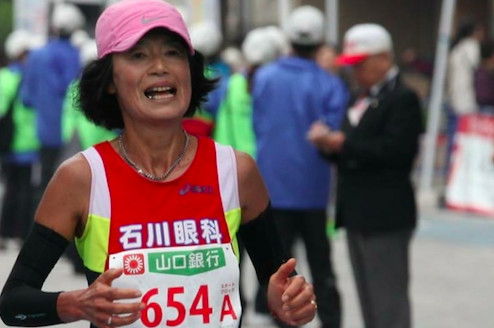
She has run 100 marathons and her PR before today was 2:58:15 set in 2017. But those who knew her, already pointed out that Mariko Yugeta was capable to run 2:57 thanks to her good habits of life and training on the track of Kawagoe.
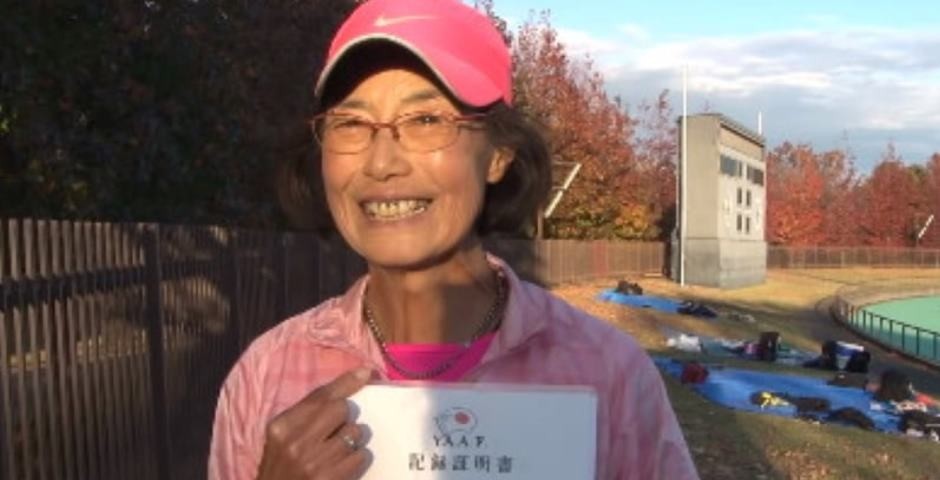
The Saitama International Marathon is a women's marathon held in Saitama, Japan, and has the IAAF Silver Seal. This race replaced the women's marathon that was held from 2009 to 2014 in Yokohama and which in turn was the successor to the international women's marathon held in Tokyo between 1979 and 2008.
Saitama's first international marathon, held on November 15, 2015, also served as a selection for female marathon representatives from Japan for the Rio 2016 Olympic Games.
(12/08/2019) ⚡AMPSaitama International Marathon
The Saitama International Marathon is a women's marathon held in Saitama, Japan, and hosted by Japan Association of Athletics Federations, Saitama Prefecture, Saitama City, Nippon Television Network and the Yomiuri Shimbun. The event is an IAAF Silver Label Road Race. The competition took the place of the Yokohama Women's Marathon which was held in Yokohama from 2009 until 2014 and...
more...Jepchirchir wins Saitama Marathon in near record time
Breaking away from Fatuma Sado with 10km to go at the Saitama Marathon, Peres Jepchirchir, running her first marathon outside of Kenya, won the World Athletics Silver Label road race in 2:23:50.
The Kenyan’s winning mark was the second fastest time at the Saitama Marathon, just 32 seconds shy of the course record of 2:23:18 from 2016. Jepchirchir, the 2016 world half marathon champion and former world record-holder at the distance, was contesting just the third marathon of her career. Her official best for the marathon was a modest – by her standards – 2:46:15 recorded in Eldoret in 2018.
Two pace makers – Stacey Ndiwa and Perine Nemgampi – pushed the race at course record pace with Jepchirchir, Belaynesh Oljira, Sado and Rahma Tusa in tow. Their pace up to 15km (50:36) was consistent and steady, but it dropped slightly before the half-way point, reached in 1:11:31.
At 29km, Oljira was surprisingly the first of the top contenders to fall off the pace, and with the pacemakers exiting the course at 30km, Sado, Tusa and Jepchirchir formed the lead trio, nine seconds ahead of Oljira.
With Jepchichir forcing the pace, Tusa fell behind at 31km and then Sado did likewise one kilometre later, leaving Jepchirchir out in front alone.
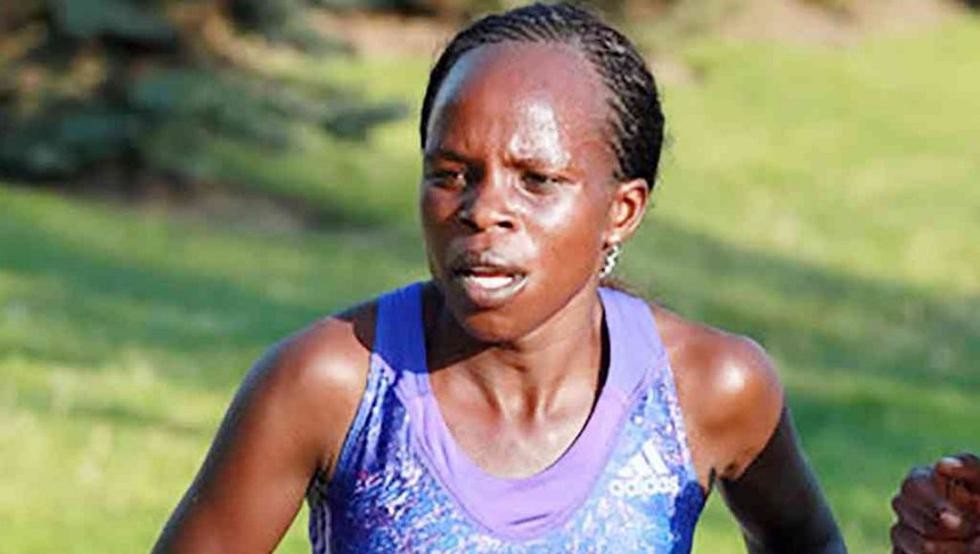
Jepchirchir slowed slightly in the closing stages, but at 40km she had a two-minute lead over Sado. Her margin had grown to almost three minutes by the finish line, which she crossed in 2:23:50.
Sado, who dropped out of last year’s Saitama Marathon before going on to win the Osaka Women’s Marathon one month later, finished second, while Oljira, the fastest woman in the field with a PB of 2:21:53, finished third. Nina Savina of Belarus finished fourth in a PB of 2:28:44, taking 22 seconds off her best set in Warsaw earlier this year.
Kaori Yoshida was the first Japanese finisher, placing sixth. She was aiming to improve on her PB of 2:28:24 and was on pace to do so up until 20km, which she reached in 1:11:13. Her pace dropped in the second half, though, and she fell outside of PB pace, eventually finishing in 2:35:15.
Incidentally, 61-year-old Mariko Yugeta set a world masters’ best for the 60+ age group, clocking 2:56:54. She improved on her previous best – 2:59:15, her first sub-three-hour marathon – recorded last month in Shimonoseki.
(12/08/2019) ⚡AMPSaitama International Marathon
The Saitama International Marathon is a women's marathon held in Saitama, Japan, and hosted by Japan Association of Athletics Federations, Saitama Prefecture, Saitama City, Nippon Television Network and the Yomiuri Shimbun. The event is an IAAF Silver Label Road Race. The competition took the place of the Yokohama Women's Marathon which was held in Yokohama from 2009 until 2014 and...
more...Pacer Wins Abu Dhabi Marathon by 2 Minutes, Takes Home $100,000
Though he was supposed to drop out at 30K, Reuban Kipyego went on to break the tape in 2:04:40.
Reuban Kipyego took his pacing duties an unexpected step further when he won the Abu Dhabi Marathon on Friday, December 6.
As the designated runner who was tasked with pacing the elite field through a specific point in the race, the 23-year-old Kenyan was expected to drop out around 30K. But Kipyego kept running all the way through the finish line, breaking the tape in a time of 2:04:40.
The pacemaker turned champion beat runner-up Joel Kimurer by a minute and 41 seconds. As the marathon champion, Kipyego earned $100,000 in prize money.
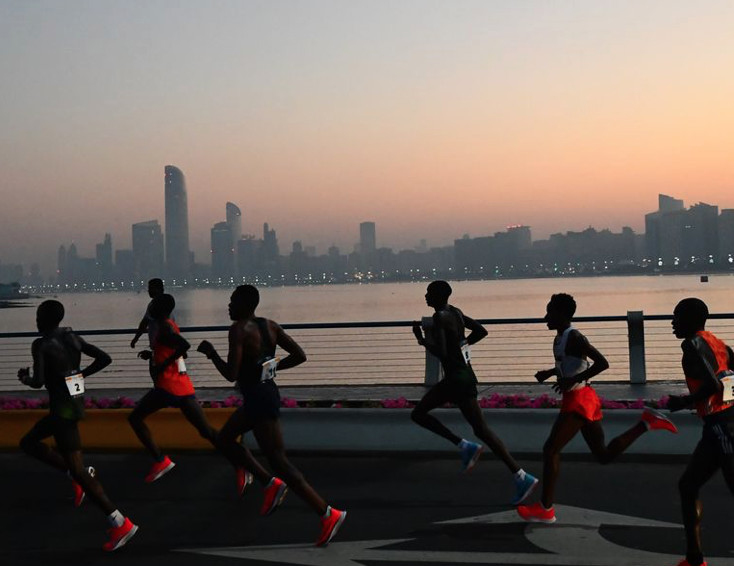
“I was setting the pace for the first 30K feeling very good, and when I turned back to see that the pack was not close behind, I decided that I was going to push to the finish line,” Kipyego told race organizers after his victory.
Kipyego ran faster for the second half of the race after leading the field through 13.1 miles in 1:02:54. The performance improves on his previous personal best of 2:05:18 from a runner-up finish in his debut at the Buenos Aires Marathon on September 22.
Though his action was rare, Kipyego was not the first pacemaker to keep running all the way through the finish line.
In 1994, Paul Pilkington was hired as the rabbit to lead the elite field through 15.5 miles of the Los Angeles Marathon, but he continued on for the entire 26.2, winning the race in 2:12:13. Simon Biwott was supposed to lead the runners through 28K of the 2000 Berlin Marathon, but he ended up leading right through the line, winning in 2:07:42.
In his second pro race, Geoffrey Ronoh upset then-world record-holder Wilson Kipsang at the 2014 Olomouc Half Marathon. Instead of stopping at 10K, the pacemaker won in a course record 1:00:17.
For runners who are on the bubble of winning podium prize money, signing on to be a pacemaker in a large race is an easy way to earn guaranteed payment. While they are expected to drop out before the race ends—and most do—they are allowed to finish the race if they choose to.
“For me, the conditions were ideal and the course was beautiful,” Kipyego told the race organizers. “I’m already looking forward to returning to Abu Dhabi to defend my title.”
(12/07/2019) ⚡AMPADNOC Abu Dhabi Marathon
The Abu Dhabi Marathon is shaping up to being first class marathon for both elite runners and average runners as well. Take in the finest aspects of Abu Dhabi's heritage, modern landmarks and the waters of the Arabian Gulf, at this world-class athletics event, set against the backdrop of the Capital's stunning architecture.The race offered runners of all abilities the...
more...Man Runs a Marathon in 24 Hours While Doing Home Repairs Along the Way
Beau Miles of Great Britain documented his challenge in the film A Mile an Hour.
For many of us, it can be hard to find time to run each day. On some days, we have a spare 30 minutes to squeeze in a few miles; other times, when we’re lucky, we have a full hour to devote to training. Most of the time, running comes second to all of our other obligations. But maybe that doesn’t have to be the case.
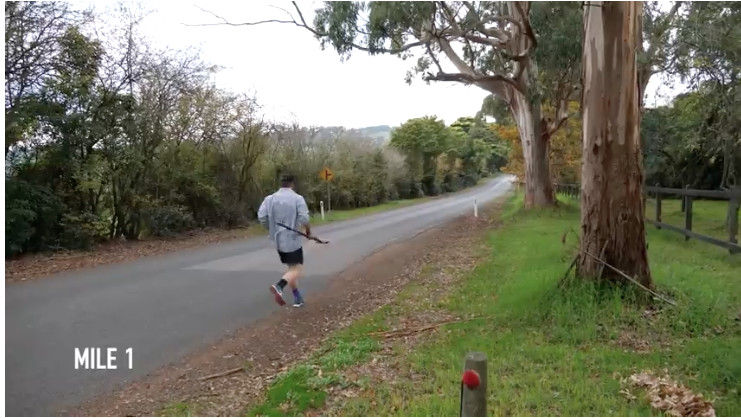
For Beau Miles, a British runner and filmmaker, his chores and other duties are scheduled around his running.
Last year, Miles decided to take on a challenge: in the span of 24 hours, he would run 26.2 miles and also check off various chores around the house. The distance around his property in England was about one mile, so to cover the marathon distance, he would run three laps in the first hour and one lap every hour for the next 23 hours. When he wasn’t running, he planned to finish tasks such as woodworking, gardening, and cooking.
The inspiration behind Miles’s challenge was to have the “ultimate day of running and fixing and being,” he said in A Mile an Hour, the documentary that captured his 24-hour run.
“The marathon itself is not the guts of this project, merely a skeleton,” Miles wrote on his blog. “In between each lap, in the barn, and around the farm, I’ll be keeping busy with a variety of projects.”
Miles, a skilled carpenter as well as an experienced trail runner, began his 24-hour marathon at noon. After he finished his laps, he changed and began tackling his list of chores, which included everything from a two-minute task (fixing a key ring) to a day-long project (building an outdoor table). When his alarm signaled the top of the hour, he laced up and headed out for another mile around his home.
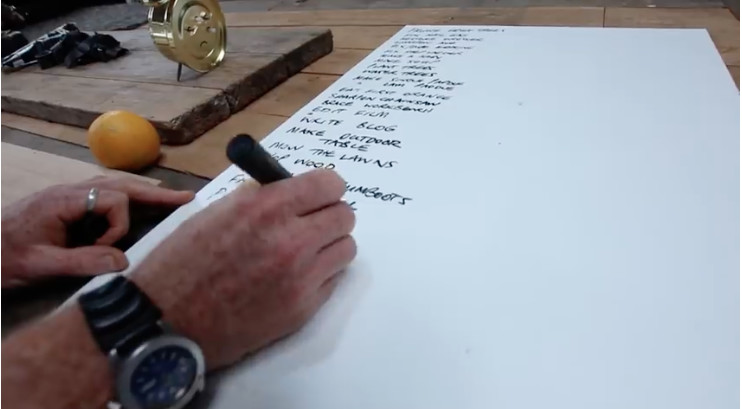
Staying laser-focused on both running and working made Miles extremely productive. By the time he’d finished five miles, he’d also planted six trees, made a canoe paddle, picked up trash along his route, and painted a fence. To fuel his run, he ate licorice each hour. Around dinnertime, he cooked homemade bread and soup for himself and his wife, Helen, then sat down to eat dinner and drink a glass of red wine after mile 11.
Though eating a full meal—plus wine—midway through a marathon sounds like a recipe for disaster, by spacing out the miles, the runner could digest and keep moving. “My body feels fine with all of the resting and eating,” Miles said in the film.
Miles slept for a total of 30 minutes, broken up into two 15-minute increments. Instead of doing chores during the wee hours of the morning, he dozed, rising each hour to do a lap in the dark.
“Getting up is horrible,” he said in the film. “But once you’re up, you’ve started the lap, and there’s no turning back.”
In a blog post later, Miles reflected on his challenge.
“Aside from about 30 minutes of sleep, the 24-hour period was the busiest, most diverse day of my life,” he wrote. “Running, as a circuit breaker each hour, was the perfect way to re-set how I felt, what I would do next, what I was doing (and feeling), and what I’d just done.”
(12/07/2019) ⚡AMPby Runner’s World
Jerry Ogata, 93-year-old, proves that never is too old to run
Competing in a world class race like the Honolulu Marathon can be a life-long dream. And this 93-year-old runner's dream started when he retired.
Completing a marathon has been described as a religious experience. The euphoric feeling of success after enduring 26.2 miles only slightly outweighing the pain.
Being a Marathon Finisher is an accomplishment many runners aim -- for years, setting goals early in their lives.

But when I asked Jerry Ogata -- why he runs marathons -- his answer, may surprise you.
"I enjoy it. That's the only reason I get," he said.
Jerry Ogata is one of the oldest people registered to run the 2019 Honolulu Marathon. At 93-years old, he's been competing in races for 30 years, but admits his desire to become a marathoner came late in life.
"After I retired, I envied other people running. I envied them because whenever there was a race and I saw them running I though gee I wish I was one of them," Ogata said.
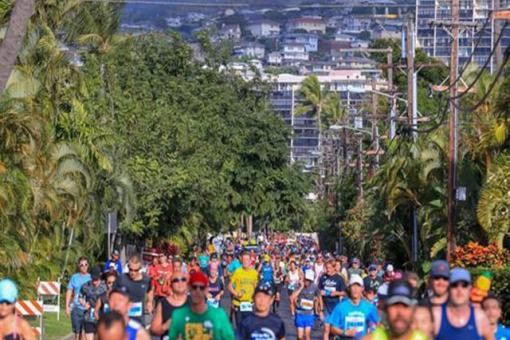
Ogata grew up in the Ewa Plains on a plantation, where he says he ran and hiked as a kid. But his first race came decades later.
"When I was 60 I guess. That was in Honolulu, the Pineapple Run in Wahiawa," Ogata said.
Since then, he was hooked.
"Chicago, New York, Los Angeles, Honolulu -- but different times, Honolulu maybe I ran several times."
He placed in his age division the last time he ran the Honolulu Marathon, finishing in 10 hours and 36 minutes. That's about a 24 minute mile.
And if Jerry's late choice of hobby might surprise you -- he likes surprises. Like the time he kept his wife in the dark about their honeymoon.
"We went to Japan to climb Mount Fuji -- I told her for our honeymoon we're going to Japan. When we got there I told her we're climbing Mount Fuji. That was a surprise for her"
His wife Jean says she'll be with him at the finish line.
(12/07/2019) ⚡AMPby Maleko McDonnell
Honolulu Marathon
The Honolulu Marathon’s scenic course includes spectacular ocean views alongside world-famous Waikiki Beach, and Diamond Head and Koko Head volcanic craters.The terrain is level except for short uphill grades around Diamond Head. ...
more...An insider look at the California International Marathon course - Here's everything you need to know about the course
This weekend is the California International Marathon, an event that attracts many Canadians. Canada Running Series masters champion Allison Drynan is a 2:42 masters marathoner who’s running the race for the fifth time this Sunday. The CIM veteran has shared some of her key course insights for those racing.
For all the Johnny Cash fans out there, this race begins just across the American River from the Folsom State Prison, which Cash sang about in Folsom Prison Blues. The prison was also the location of a live album recording in the 1960s.
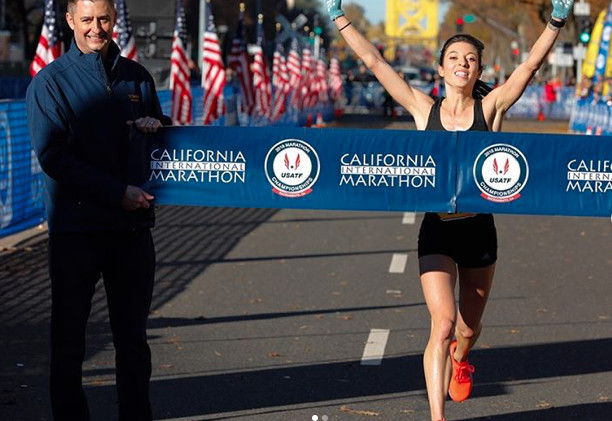
A net downhill course, the first half of the course is rolling, but flattens out over the halfway mark. This sets the stage for some definite personal best potential.
At mile 20, runners will literally hit a wall. There’s a brick wall facade with 10K to go. This reminds you that the race is really getting underway.
At mile 22 runners will pass under a bridge that’s decorated for the race. The banner will say 4.2 miles to go.

The race begins at a prison and ends at the California State Capitol building, which connects with the State Capitol Park. It’s very picturesque and decorated for the holidays. The 42.2K between the two iconic locations is a net downhill course that takes you through lovely countryside and some quaint little towns (Orangevale, Fair Oaks and Carmichael) before you head into the Sacramento city centre.
Unlike most other marathons, there are two different finishing chutes, one for women and one for men. Drynan explains that both finish lines are the exact marathon distance, no athlete has had their choice of finishing chute contested. For the lead females it’s great to not have to worry about a man breaking their tape or ruining their photo opp.
CIM is one of the most popular Boston Qualifiers in the country, with those who’ve achieved their marks presented the opportunity to ring the BQ bell.
This year’s weather forecast is calling for some rain, but pleasant temperatures and low wind.
Following the race, if you’re a wine drinker, you’re in one of the best places to celebrate. Napa, Sonoma and Lodi are all fabulous wine regions within about an hour of Sacramento, so if you get tired of the many craft beers and diverse restaurants available in this university city, you can hit some vineyards after your race in the spirit of re-hydration.
(12/07/2019) ⚡AMPCalifornia International Marathon
The California International Marathon (CIM) is a marathon organized by runners, for runners! CIM was founded in 1983 by the Sacramento Running Association (SRA), a 501(c)(3) non-profit organization. The SRA Board of Directors is comprised of runners with a combined total of 150+ years of service to the CIM. The same route SRA management created for the 1983 inaugural CIM...
more...Hongkonger runs the length of Japan, battling loneliness and becoming ‘the runner of past, present and future’
Wong Ho-fai runs 500km in one week, as part of his trans-Japan run from Wakkanai to Okinawa
Hong Kong ultra runner Wong Ho-fai completed an epic run from the north of Japan to the south, but it was one week in particular that stood out as an incredible feat.
After passing Tokyo, Wong worried that time was against him. So, he ran 500km in seven days.
“There was loneliness from Tokyo to Hiroshima,” he said, “but I let it subside by focusing on myself, and ran about 500km. I didn’t plan it, I just went fast. I was lonely, but I used the time to reflect. I was lonely but I was also afraid time was running out, so I was driven by fear, which made me more alert.”
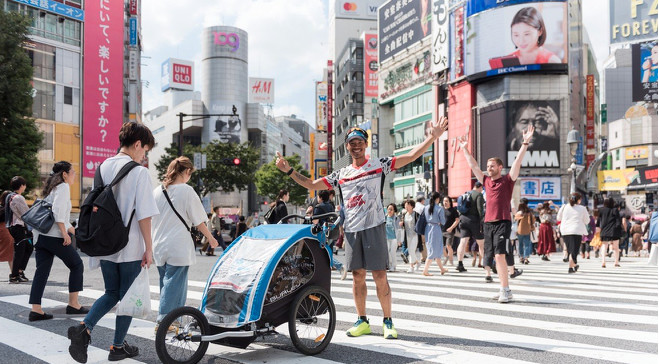
Wong, 35, started his 3,250km run in Wakkanai in northern Japan on August 18 and arrived in Okinawa after 73 days of running at the end of October, and has since been relaxing in Japan and trying to readjust back in Hong Kong.
“I’m living a parallel life,” Wong said. “Part of me is living in the past, in Japan. Part of me is living in the present, in Hong Kong and a third part of me is living in the future, imagining running across America.”
Wong has long dreamed of running from coast to coast across the US, and has been building towards it with a 1,400km run around Taiwan and now across Japan.
Wong is trying to not get ahead of himself by spending time on his own and meditating.
“I try to live moment by moment, just like in Japan,” he said.
The start of the mission in Japan was delayed and so Wong set off too fast and injured himself. He was forced to rest, but the break gave him time to meet one of his heroes, ultra running legend Scott Jurek who told him “there is magic in suffering”.
Since returning from Japan, Wong has been getting rid of a lot of his belongings. He dreams of a life like he had during the run.
“I try to live as simple as I can,” he said. “After throwing away a lot of my stuff, I feel better. I feel much lighter.”
(12/07/2019) ⚡AMP'I puked, fouled myself and collapsed - it was great': Meet the record-breaking ultra marathon runner fuelled by beer and burritos
At the ultra running World Championship, competitors looped a 1,500 metres circuit continuously for 24 hours and, with time running out, American Camille Herron was suffering.
She had thrown up twice, stopped to lie down twice, and had such serious bowel issues the officials had forced her off the course to shower and change her clothes. By the finish Herron had run 168 miles, the equivalent of running 6½ consecutive marathons, each in an average time of 3 hr 44 min.​

She certainly means it when she says: “I want to change what people think is possible. Especially for women.”​
Herron’s feat was a world record, she finished sixth in the race overall (including the men) and moved to third best on the United States all-time list for both genders. To get there she had to endure multiple setbacks.​
“I was trying this new fuelling plan with this new product and it wasn’t going well,” Herron explains. “The race was in France, so most of the rest rooms were squat toilets. For 350 athletes, they only had three normal toilets.”​
On her third bathroom stop in quick succession, she found a queue of athletes so decided to carry on. “But on that lap my bowels sort of unleashed themselves,” she says, laughing about it now. “But this is ultra running. S--- happens. Literally!”​
She switched her food to cups of mashed potato, makeshift burritos and her secret weapon – beer. Her condition did not improve but then a switch flicked in her mind.​
“After puking the second time, with 2½ hours to go, I just said to myself, ‘Let’s drop the hammer, let’s go beast mode’.”​
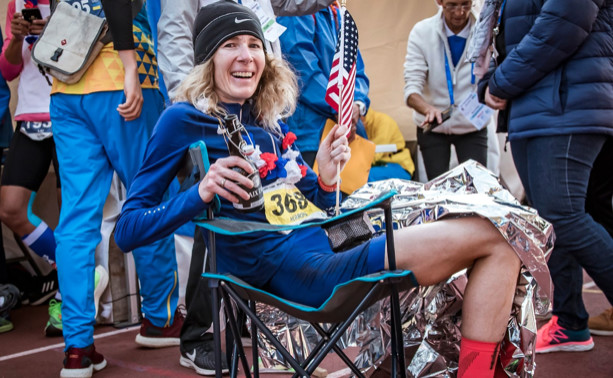
Herron started to fly. “I like to think of myself as a boxer, throwing punches,” she says. “Those last few hours were awesome, the most fun I’ve ever had in a race.”​
Surely she doubted, during the low moments, that it would all come together so spectacularly?​
“No,” she says. “I had already accepted before the race that I would be challenged. So at no point did I feel defeated. It was like ultra chess, we had to brainstorm how to deal with the problems. In the night, that’s the hardest part, because the brain is shutting down, so you’re trying to keep the light on.”​
Herron discovered the benefits of beer by accident. “I was in a trail race, really struggling, sitting in a chair. I’d tried everything and it wasn’t working and my husband just said, ‘You want a beer?’ I popped out of my chair after that. It got my blood flowing again.”​
During her latest world record she downed three Belgian beers along the way. “It settles my gut and helps me focus,” she laughs.​
Herron’s achievements are all the more astonishing as she has had to overcome a lopsided body, re-teaching herself how to run after years of injuries. She was born with her right thigh bone twisted inwards and has an extra bone in her right foot. “There’s something developmentally quirky about how I’m built,” she says. To reduce the strain on her body she re-learnt to run lifting her legs from the ground rather than pushing off. It means she looks like she is roller skating rather than running. “It’s like I’m prancing,” she says. “But I’m light on my feet. As a marathon runner, I had a great engine but I wasn’t fast enough because I wasn’t powerful. But as there’s less impact, for ultras it has turned out to be an advantage.”​
Since readapting her style, Herron has had only one injury, following a serious accident in February in which her car flipped upside down.​
Her steel was instilled from an early age. Herron’s grandfather was shot in both legs in the Second World War and awarded two Purple Heart medals, which are given for members of the US military wounded or killed while serving. He and Herron’s father were also basketball players under tough Olympic coach Henry Iba.​
“You had to be hard-nosed to play for him,” she explains. “My dad told stories of playing for six hours straight without water. So at age seven, I used to play in the yard, without water, until I blacked out. Then I’d get a sandwich and play some more. I was thinking, ‘This is what I got to do, push myself to extremes’. I was training for ultras without realising it.”​
Another formative event came when she was 17 and her whole family were made homeless by the strongest tornado ever recorded.​
“We get tornadoes all the time in Oklahoma,” she recalls, “so when we left the house I didn’t take anything. But it was crazy, four people in our area lost their lives, our house was flattened. But though we lost everything, I thought: ‘I’m still alive.’ At 17, that’s a big thing to realise, the value of your life. It changed my perspective.” From then on she started running on Sundays instead of going to church, to celebrate her life.​
Herron now believes that she can eventually chase down the men’s ultra running world records and she is partly driven by the inequality she feels is rampant in the sport. The normally upbeat Herron turns serious as she recounts her struggles for recognition in ultra running.​
“In my breakout year in 2015 I won two world titles and broke a world record and I thought I should get an agent,” she says, “but he couldn’t find me a sponsor. Then Jim Walmsley [a top male US runner] dropped out of Western States [a big US race] and I caught him in the world 100km championships, and he gets sponsored by Hoka. I was p----d.”​
She fired her agent and joined Walmsley’s agent, who eventually got her a sponsorship deal with Nike. Recently she was left fuming after a race in France offered prize money for the top 20 men, but only the top five women. And the women’s race was half the distance.​
“Sometimes it’s like a throwback to the 1970s,” she says. “I can’t believe it’s 2019 and women are still fighting for equal prize money. While everyone looks at the men like they’re superstars, I see people looking at me and tutting. I’m pretty tall, and I run aggressively and people don’t like it. I hear them saying, ‘She’s going out too fast’. So it’s a big motivation for me to run faster. To beat the men.”​
The way she is going, she might end up leaving them all behind. They can collect up her beer bottles when they come by.
(12/07/2019) ⚡AMPDedicated fundraiser Sue Kessler, receives St. Jude Hero Among Us award during 18th annual St. Jude Memphis Marathon
To help kick off the 18th annual St. Jude Memphis Marathon® Weekend, Sue Kessler was recognized as the recipient of this year's St. Jude Hero Among Us award.
St. Jude Heroes are a nationwide alliance of supporters who help raise funds and awareness for the St. Jude Children's Research Hospital® through fitness events. Since the award was established in 2013, it has been presented annually during the event weekend to a special St. Jude Hero for going the extra mile to support children battling cancer and other life-threatening diseases.
Kessler is no stranger to running or supporting St. Jude. The end of 2019 will signify Kessler running at least one mile every day for the last 20 years, as well as her 100th marathon upon completion of this year's St. Jude Memphis Marathon Weekend.

She began running as a St. Jude Hero in 2016 and has since raised more than $73,000 for the kids of St. Jude. Kessler's energy and passion for the mission led to further involvement as an ambassador, in which she volunteers her time to help raise awareness for the hospital, recruit new St. Jude Heroes, encourage her fellow fundraisers and more.
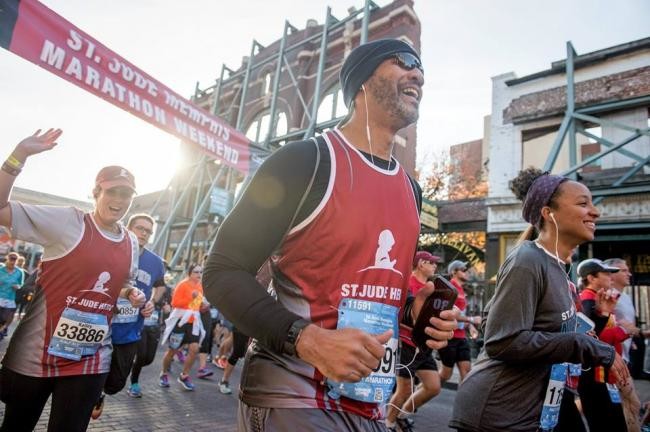
After sharing her fitness journey and St. Jude story during an event weekend press conference, ALSAC President and CEO Richard Shadyac Jr. surprised her with the recognition of this year's St. Jude Hero Among Us award.
"Sue embodies the true spirit of what it means to be a St. Jude Hero Among Us, taking her incredible passion for running and intentionally finding greater purpose by choosing to run, fundraise and be a champion for the patients of St. Jude for years," said Richard Shadyac Jr., President and CEO of ALSAC, the fundraising and awareness organization for St. Jude Children's Research Hospital. "She is an inspiration – not only to those of us in awe of her athletic capability – but also to the kids of St. Jude Children's Research Hospital who are in the fight of their lives."
Kessler shared that she picks up a pebble at the finish line of each marathon. With this in mind, Shadyac also presented her with a pyramid – representing the great city of Memphis – made of 100 pebbles from along the marathon course.
Since its inception in 2002, St. Jude Memphis Marathon Weekend has been Memphis' premier marathon.
(12/07/2019) ⚡AMPSt Jude Memphis Marathon
The St. Jude Memphis Marathon Weekend is more than just a race. It's an action-packed weekend of fun, food and entertainment! Start and finish lines two blocks apart and near a dozen Downtown hotels, lots of restaurants, and Beale Street, the Memphis entertainment district. Dynamic finish in AAA baseball stadium, with use of locker rooms and shower facilities. Wave start,...
more...Heart attack and previous shark attack won't stop Harvey Miller from running the Honolulu Marathon
The Honolulu Marathon is this Sunday, and for one runner, the race is something he thought he couldn't do following a recent health scare.
Harvey Miller suffered a heart attack while on a training run. A few months have passed, and he's been given the "OK" from doctors to run again.
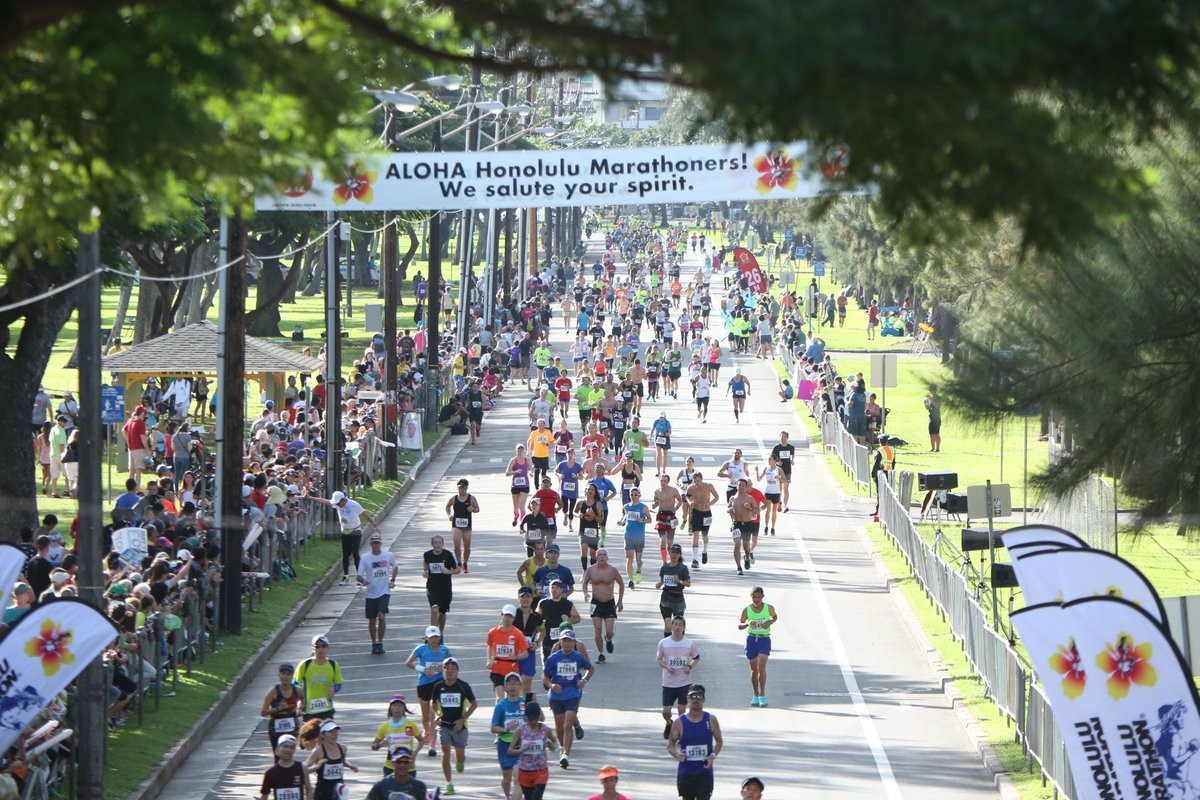
He told KITV4 he'll pay close attention to the signals his body is giving him, because his goal is to cross the finish line on December 8.
"I'm learning a lot, you know, about listening. And you still want to push because we're athletic right? But its also important to stay alive," said Miller.
It’s not the first time Harvey has been determined to defy the odds against him. He nearly lost his leg following a shark attack in 2007.
After recovering from that -- he's run two other marathons.
(12/06/2019) ⚡AMPHonolulu Marathon
The Honolulu Marathon’s scenic course includes spectacular ocean views alongside world-famous Waikiki Beach, and Diamond Head and Koko Head volcanic craters.The terrain is level except for short uphill grades around Diamond Head. ...
more...Tokyo 2020 Games organizing committee will refund anyone who paid to attend the men’s marathon before its relocation from the nation’s capital to Sapporo
Both the men’s and women’s marathon, along with all race walk events, will be staged in Sapporo.
The IOC announced its decision to shift the races in mid-October, but only gained reluctant acceptance from the Tokyo metropolitan government the following month.
Tickets will not be sold for the men’s or women’s marathon in Sapporo, as there will be no fixed seating along the course.

While reimbursement for men’s marathon tickets — sold individually for between ¥2,500 ($23US) and ¥6,000 ($55US) — will be straightforward, the refund method for women’s marathon tickets, which were packaged with other events, is still being worked out.
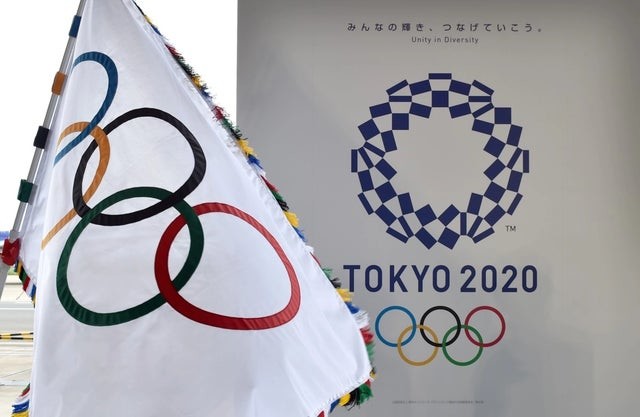
Tickets to the women’s marathon were bundled with those for four other track and field events at the National Stadium, such as the women’s shot put finals and the men’s 400 meters qualifying, for between ¥5,000 ($46US) and ¥30,000 ($276US).
The organizers are considering a range of options including partial refunds covering the marathon portion of the ticket price.
The men’s marathon will be held on the final day of the games.
(12/06/2019) ⚡AMPTokyo 2020 Olympic Games
Fifty-six years after having organized the Olympic Games, the Japanese capital will be hosting a Summer edition for the second time, originally scheduled from July 24 to August 9, 2020, the games were postponed due to coronavirus outbreak, the postponed Tokyo Olympics will be held from July 23 to August 8 in 2021, according to the International Olympic Committee decision. ...
more...Kenyans Vivian Kiplagat and Reuban Kipyego claim victory at Adnoc Abu Dhabi Marathon
Kenya completed the double at the 2019 Adnoc Abu Dhabi Marathon on Friday morning when Reuban Kipyego won the men's title and Vivian Kiplagat claimed her third victory of the year.
Kipyego, 23, set the pace and led all the way to take home the $100,000 (Dh367,000) first prize in a time of 2hrs 04min and 40sec, just outside the time of last year’s inaugural winner of the race Marius Kipserem (2:04:04).
Another Kenyan Joel Kimurer (2:06:21) took second spot ahead of Ethiopian Fikadu Girma Teferi (2:09:16).

Defending champion Kipserem became an early casualty, with the Kenyan pulling out before the halfway mark of the race.
“I’m surprised with the result,” Kipyego said on his first major marathon career success. “My job today was to set the pace but I felt good throughout the entire race and just kept going the distance.”
Kipyego arrived on the back of a runner-up spot and a personal best time of 2:05:02 in the IAAF Bronze Label Buenos Aires Marathon on September 22.
“This was a tough race to win like any other major marathon,” he said. “I am very happy with my own performance and the result.”
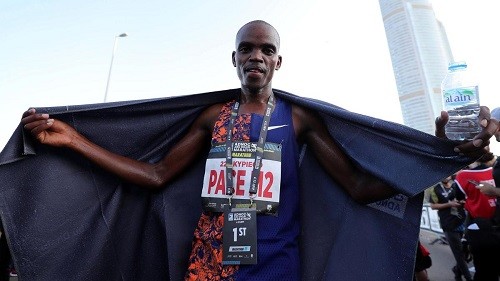
Kiplagat, 28, lived up to her top billing by taking the women’s race in a personal best time of 2:21:11 and with it the $100,000 prize that was on offer.
She broke away from the group straightaway and then maintained her position in the front all the way to the end.
“My objective was to run 2:20 but it was still a personal best time and I’m glad of the day’s work,” Kiplagat, who bettered her previous PB 2:22:25 at the Milan Marathon in April, said.
Joining Kiplagat on the podium were Ethiopians Wude Atalew (2:24:03) and Yeshi Kalayu (2:24:28).
Eunice Chumba, the Kenyan running under the Bahrain flag who was runner up last year, was fourth in 2:26:43, well outside her 2018 time of 2:20:54.
(12/06/2019) ⚡AMPby Amith Passela
ADNOC Abu Dhabi Marathon
The Abu Dhabi Marathon is shaping up to being first class marathon for both elite runners and average runners as well. Take in the finest aspects of Abu Dhabi's heritage, modern landmarks and the waters of the Arabian Gulf, at this world-class athletics event, set against the backdrop of the Capital's stunning architecture.The race offered runners of all abilities the...
more...Ethiopia's Belaynesh Oljira will start as favorite in the fifth Saitama International Marathon, a World Athletics Silver Label road race
The elite field includes eight runners from abroad as well as two Japanese. Oljira is the fastest among them with a 2:21:53 lifetime best set in the 2018 Frankfurt Marathon.
Oljira was a superb track runner, having finished fifth in the 2012 Olympics and third in the 2013 World Championships, both at 10,000m and boasts track bests of 14:42.57 in the 5000m and 30:26.70 in the 10,000m. She's only raced once this year, in a 10km road race in June, so her current fitness is a mystery.
Oljira’s second fastest marathon is 2:24:21 - only two runners in the field have run faster: Ethiopians Rahma Tusa, who clocked 2:23:46 in the 2018 Roma Marathon and Fatuma Sado who ran 2:24:16 in the 2015 Toronto Marathon. Sado was one of the favorite in Saitama last year but failed to finish. She won the Osaka Marathon in January with 2:25:39.
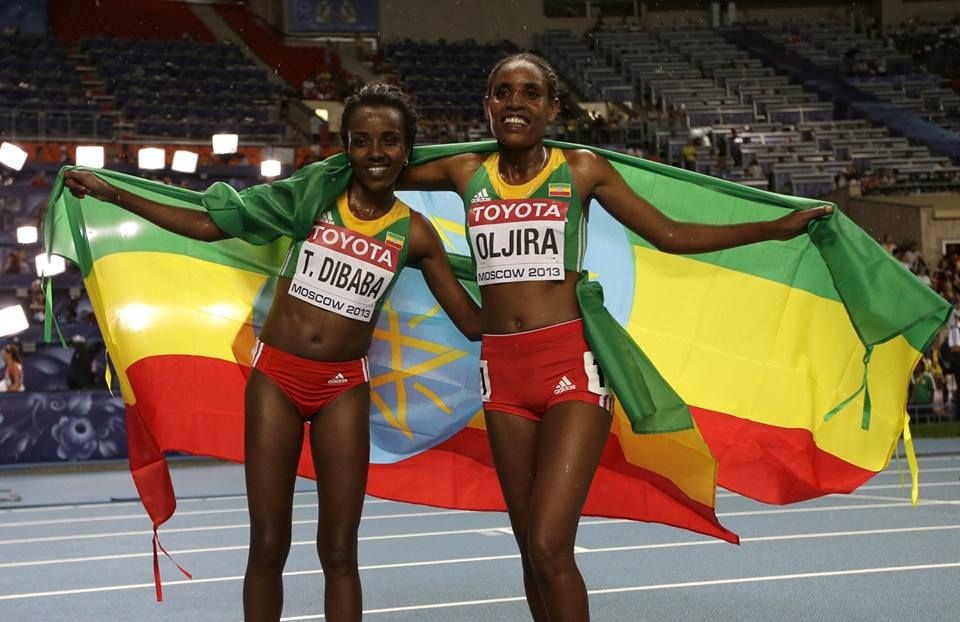
The field also includes Kenyan Paskalia Chepkorir, who has a best of 2:26:04; Zinash Debebe of Ethiopia, who has a 2:27:15 lifetime best; Ethiopia's Zerfie Limeneh, a 2:26:48 runner; and Nina Savina of Belarus, who's clocked 2:29:06.
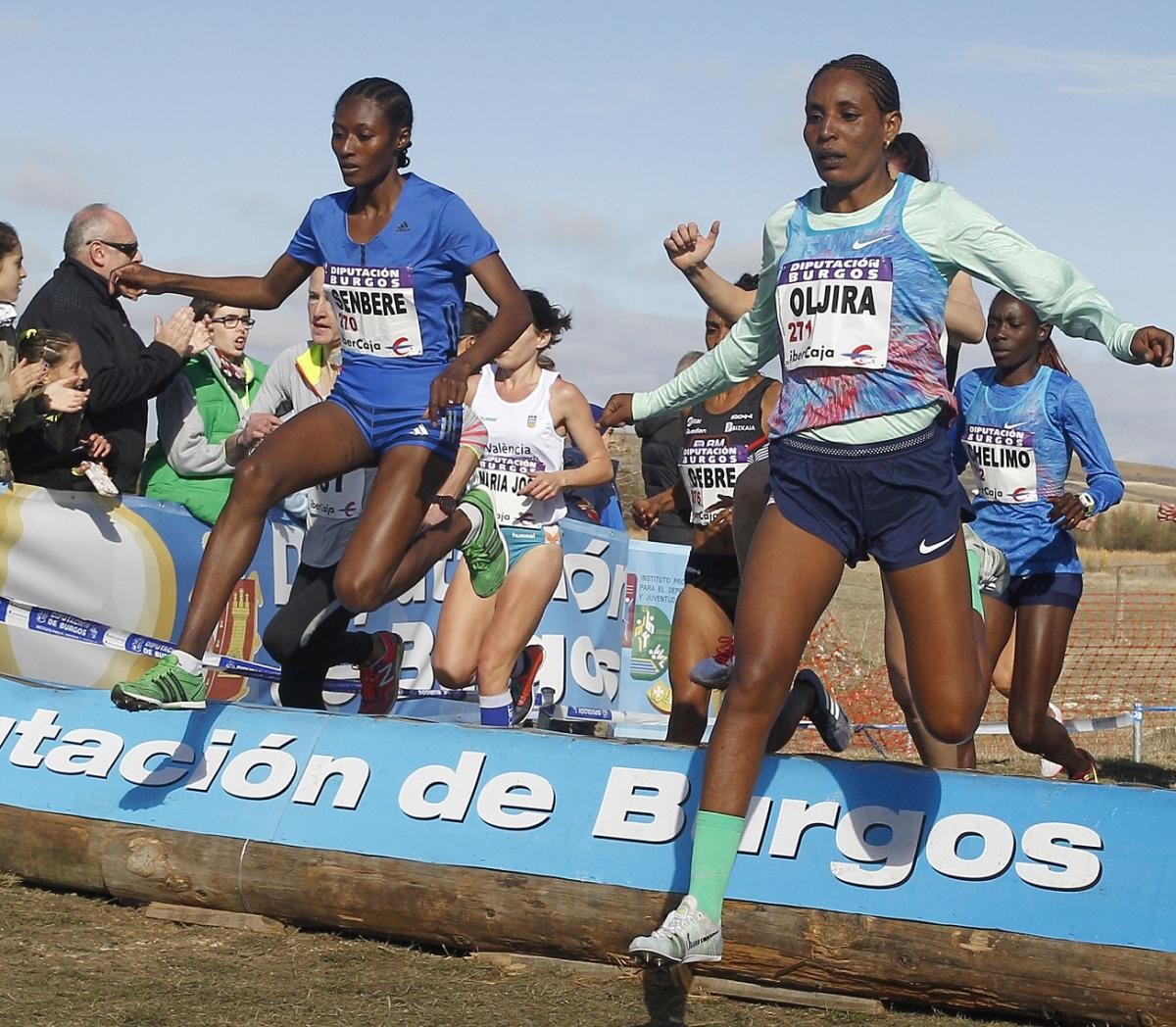
Hiroko Yoshitomi, with a best of 2:30:09 and Kaori Yoshida, who's run 2:28:24, are the Japanese entrants. Their incentive? Any Japanese runner who breaks 2:22:22 will secure the third spot on the 2020 Olympic Marathon team.
The most intriguing runner in the field is Kenyan Peres Jepchirchir, the former world half marathon record holder with a best of 1:05:06 and 2016 world champion over the distance. She's run two marathons in her career, both at altitude in Kenya and both over 2:45. But those performances don't seem indicative of her marathon potential.
Inaugurated in 1979 as the Tokyo Women’s Marathon, the first women-only marathon, it was moved to Yokohama after 30 years where it remained as an elite women-only race. After six editions, it was moved to Saitama where it became a mass race but still only features a women's elite field.
(12/06/2019) ⚡AMPby World Athletics
Saitama International Marathon
The Saitama International Marathon is a women's marathon held in Saitama, Japan, and hosted by Japan Association of Athletics Federations, Saitama Prefecture, Saitama City, Nippon Television Network and the Yomiuri Shimbun. The event is an IAAF Silver Label Road Race. The competition took the place of the Yokohama Women's Marathon which was held in Yokohama from 2009 until 2014 and...
more...Ethiopia’s Mulu Seboka will take on the in-form Celestine Chepchirchir of Kenya at the Guangzhou Marathon, a World Athletics Gold Label road race, on Sunday
The Prolific Ethiopian racer, who will compete in her fifth marathon of the year, owns the fastest personal best in the field at 2:21:56 set in Dubai four years ago. The 35-year-old competed in the southern Chinese city in 2016 and finished second in 2:32:26.
Seboka, a past Dubai Marathon, has a season’s best of 2:27:19 from her four marathons. She will obviously not be running with fresh legs in Guangzhou as her last race was just one week ago in Kunming, where she scored a 2:32:54 victory.
The rising Chepchirchir, 23, is the second fastest but the highest ranked (43) woman toeing the line. She knocked more than two minutes off her PB to finish third in Seoul in 2:24:48 nine months ago and went on to set a course record of 2:26:44 at the Cape Town Marathon in September.
Guangzhou will be her third race of the year and first time competing on Chinese soil.
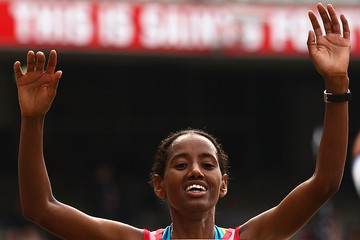
Lilia Fisikovici of Moldova also improved lifetime best this April to 2:27:26 and has been pursuing her second international marathon title following her win in Krakow last April.
Other sub-2:30 runners in the field include two-time Daegu Marathon winner Pamela Rotich of Kenya who has a PB of 2:27:48, Ethiopia’s Hiwot Gebrekidan, who set a winning mark of 2:25:45 in See Genezareth two years ago, as well as Chinese duo Ding Changqin and He Yinli.
The men’s field is led by Kenya’s Eliud Kiptanui. The 30-year-old clocked a PB of 2:05:21 to finish second at the Berlin Marathon four years ago and has managed to run inside 2:10 every year since 2014. But the past winner in Ottawa and Prague has yet to break that barrier in 2019 as he only clocked a mediocre 2:14:15 to finish seventh in Xiamen in January and failed to finish in Taiyuan three months ago.
Kiptanui’s countryman Mike Kiptum took more than three minutes off his career best to finish third at Seoul Marathon in 2:06:22 in March, suggesting that the 27-year-old would be another serious candidate not only to win the title but also to rewrite the 2:10:01 course record set by Morocco’s Abdellah Tagharrafet in 2015.
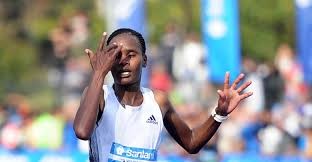
The powerful Kenyan contingent also includes Felix Kirwa, whose PB of 2:06:13 was set in Eindhoven two years ago, and 31-year-old Josphat Letting, winner of the Tallinn Marathon in September.
Ethiopia’s Gebretsadik Abraha could be the biggest threat to the Kenyans. Although the 27-year-old achieved his 2:06:23 PB back in 2012, the consistent Abraha has maintained a high level of competitiveness, earning four podium finishes in his six races since 2017.
(12/06/2019) ⚡AMPby World Athletics
Guangzhou International Marathon
The Guangzhou Marathon was launched in 2012 and certified by CAA as the A level event. From 2014 to 2017,Guangzhou Marathon was recognized as the CAA Gold Medal Race for four consecutive years. The year of 2018 has seen this event was upgraded as IAAF Gold Label Road Race after it was awarded as IAAF Bronze and Silver Label Road...
more...Saucony's new lineup of shoes has something to make every kind of runner feel fast
Saucony has launched its 2020 shoe lineup, including the much-anticipated Endorphin Pro, the company’s carbon-plated racing flat.
Spencer White, VP Human Performance and Innovation Lab at Saucony, says this isn’t a spring-loaded shoe. “It’s not a spring, it’s a rigid roll. There’s a lot of storytelling with these carbon-plated shoes, but the thing you have to understand is that it’s not springing you forward. The shoe is absorbing the energy from a runner’s stride so your body doesn’t have to. This helps you feel better later into a race or the day after training.”
The carbon-plated shoe uses SpeedRoll Geometry to deliver a pop at toe-off to help the runner feel fast. The shoe’s midsole is made of the ultralight PWRRUN PB cushioning that’s 40 per cent lighter than Saucony’s PWRRUN+ (which is used in the Triumph). The S-shaped carbon-plate runs the full length of the shoe. The plate is designed to give a springboard effect at take off.
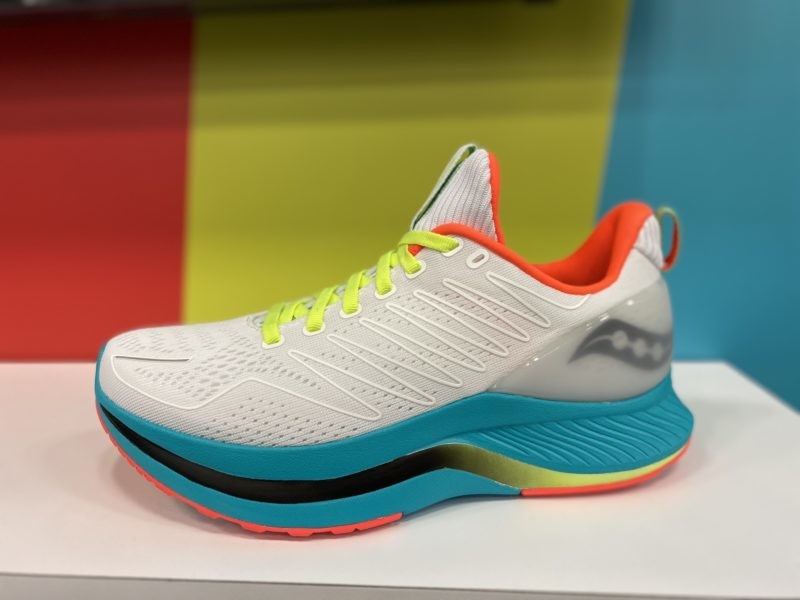
Since this shoe is designed for speed, the upper is inspired by track spikes and uses Saucony’s track technology to wrap the foot in light, performance-oriented materials. The shoe has an 8mm offset and runs light at 212g for a men’s size 9. The shoe retails for $250.00.
The Speed could be a racing shoe or a trainer for your fastest road sessions. The Speed is everything that the Pro is, without the carbon plate. Instead of carbon, there’s a full-length TPU plate which gives a similar feel to the carbon, at a lower price point.
This shoe is just a touch heavier than the Pro, weighing 221g for the men’s size 9, but comes in at $50 less than the Pro, retailing for $200.
Shift is Saucony’s newest trainer, ideal for a hard long run. This neutral-cushioned shoe uses Saucony’s new PWRRUN foam (launched earlier this year) in combination with an extended TPU heel counter that works in unison with the a rubber wrap to support the runner’s foot.
The Shift runs a little heavier than the other models (286g for the men’s shoe), but that’s ok–this is a performance training shoe, not a racing shoe. It retails for $180.
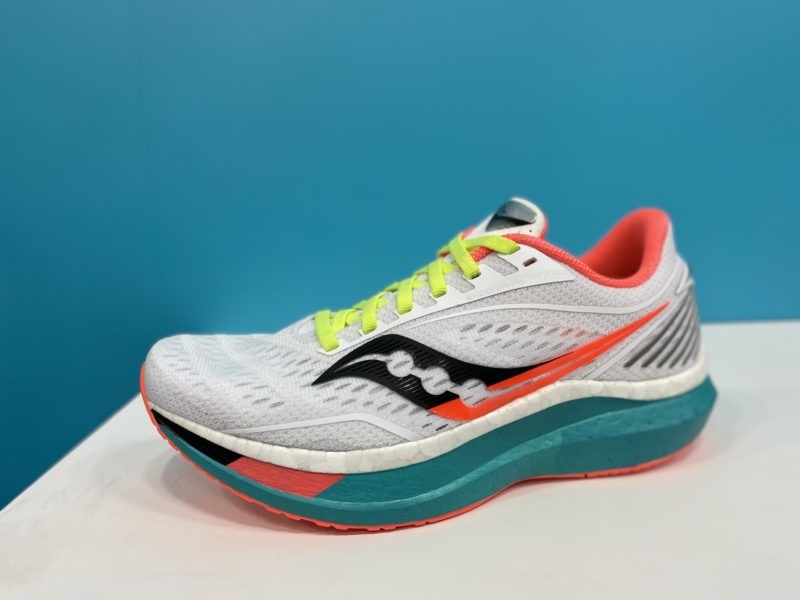
The shoes will be in store by summer.
(12/05/2019) ⚡AMPby Madeleine Kelly
Vivian Kiplagat is confident she can set a new personal best time and win the Adnoc Abu Dhabi Marathon
Vivian Kiplagat, 28, enters the last of her four races in 2019 after a career-best season during which she set a PB of 2:22:25 on April 7 to win the Milan Marathon before two weeks later finishing runner-up at the Eldoret Marathon.
The Kenyan was then victorious in her most recent race, the Mexico City Marathon on August 25 where she set a new race record, and is aiming to maintain her fine form when she competes for the $100,000US first-place prize this weekend.
“My goal is to run this marathon in under 2:20,” she said when asked about her ambitions for the Abu Dhabi Marathon, which offers a flat and fast course.
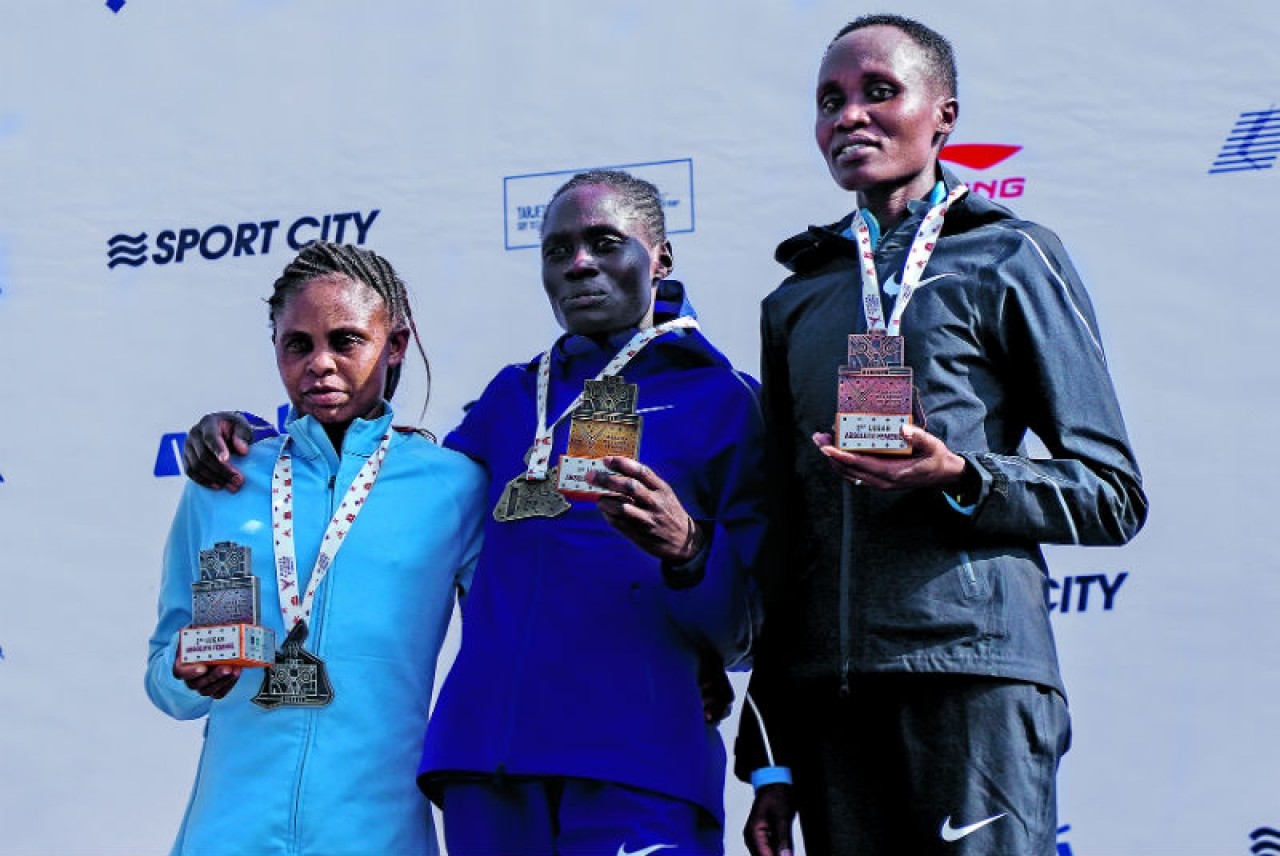
“Of course I want to win. My preparations have been good. My form is good. My confidence is high. I’m familiar with the challengers in this race, and I’m hopeful.”
Kiplagat revealed that she has been preparing for this race for the past three months, ever since she confirmed her place. Four marathons in one season could leave an athlete at the risk of fatigue, but Kiplagat insisted that she has more than enough left in the tank to complete her year on a high.
“I know my abilities,” she said. “I have had a good year so far. I feel I’m in that time of my career where I can improve my performance.”
Like many athletes, Kiplagat’s main objective is to qualify for next summer’s Olympic Games in Tokyo, and she believes a strong result in Abu Dhabi will be an important milestone before choosing her Olympic qualifying race.
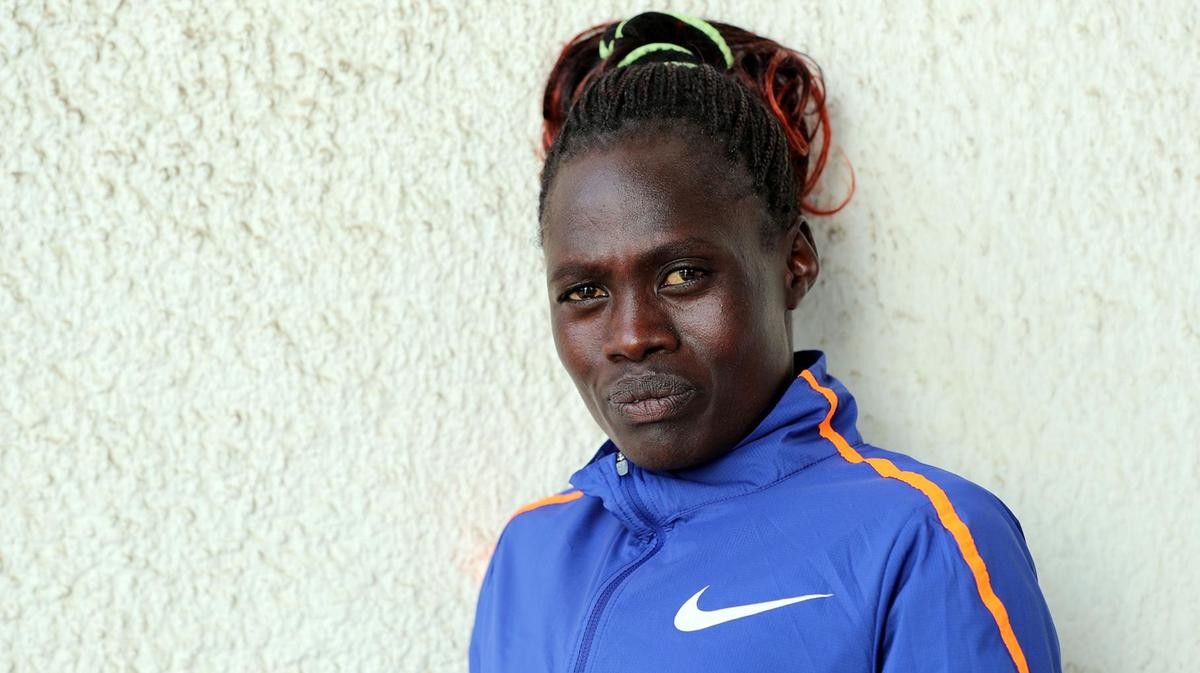
“To run in the Olympics is the dream of every athlete,” she said. “But it’s not easy in Kenya. I feel this is my best chance but for now, I am only focused on Abu Dhabi.
“The decision to run in an Olympic qualifier will be made how I come out of this race. If everything goes well I may be running in one of the major marathons to qualify for the Olympics.”
Kiplagat has trained with Brigid Kosgei, who in October broke Paula Radcliffe’s 16-year-old marathon world record when she ran 2:14:04 at the Chicago Marathon, taking one minute and 19 seconds off the Briton’s time.
“Brigid was one of the women runners in our group of 20 when I first joined a training team four years ago,” said Kiplagat, who is a mother of two to a six-year-old daughter and a four-year-old boy.
“I was born in a town where distance running was a common sight on the roads where I grew up. I joined a team of runners and developed to a decent level. I thought I had the potential to start a full time career five years ago.
“Then, later I joined a team trained by a former marathon runner. We had about 20 in the group including four or five women including Brigid. That’s how my journey began.
“I have a lot of aspirations. Olympics is one of them. I also want to win a few big city marathons. Abu Dhabi is one of them.”
(12/05/2019) ⚡AMPby Chris Whiteoak
ADNOC Abu Dhabi Marathon
The Abu Dhabi Marathon is shaping up to being first class marathon for both elite runners and average runners as well. Take in the finest aspects of Abu Dhabi's heritage, modern landmarks and the waters of the Arabian Gulf, at this world-class athletics event, set against the backdrop of the Capital's stunning architecture.The race offered runners of all abilities the...
more...Gwen Jorgensen announces move to track for 2020
The 2020 US. Olympic Marathon Trials on Feb. 29 were marked on Gwen Jorgensen’s calendar since her Nov. 2017 announcement that she was leaving the triathlon to pursue running full time in hopes of winning the 2020 Olympic gold medal in the marathon.
But now, less than three months out from the event, Jorgensen announced that she will not run the U.S. Olympic Marathon Trials and instead focus on making the U.S. team for the Summer Games on the track in the 10,000 meters.
“It’s a multitude of emotions,” Jorgensen, 33, says. “I’m disappointed. At the same time, I’m also excited. I’m at a point where I’m running 70 miles per week and training is going well. I just know that if I went to the trials, running 70 miles per week, I’d be hoping that I made a team. That’s not what I want to do at an Olympic Trials.
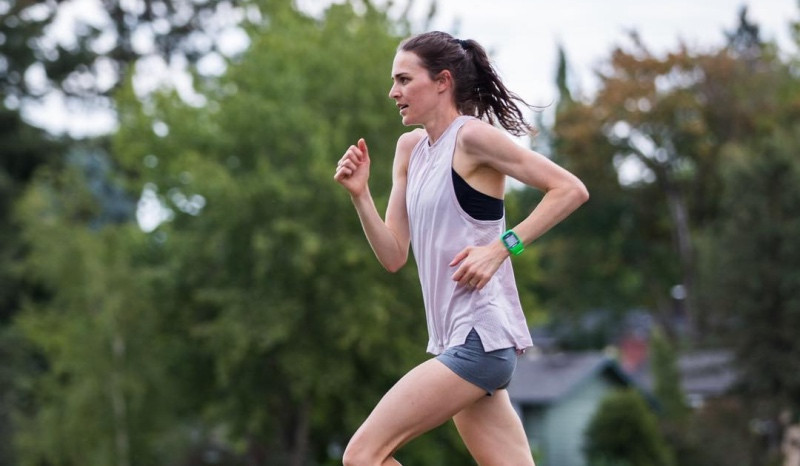
I want to go in confident and knowing that I have the ability to make a team. My goals in the marathon aren’t changing. My timeline is.”
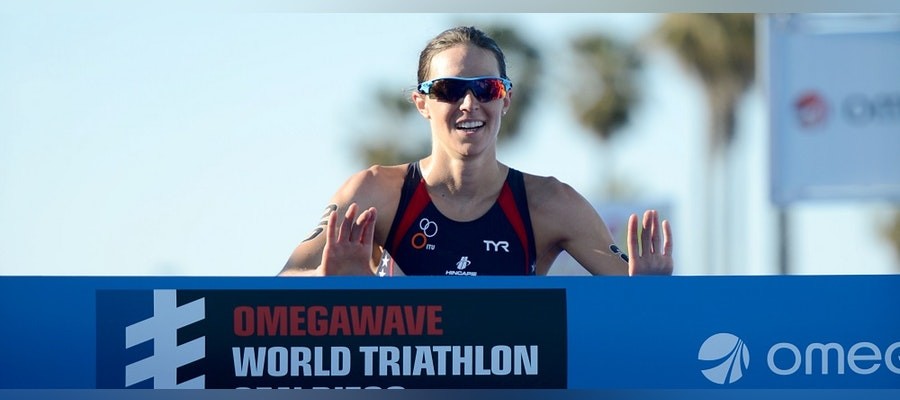
Heel surgery forced Jorgensen, who converted to distance running after winning the Rio Olympic triathlon, to pass up the Feb. 29 U.S. Olympic Marathon Trials and focus on the track and field trials in June in the 10,000m and, probably, the 5000m.
She made the decision after recent talks with her coach, Jerry Schumacher, following a difficult recovery from late May surgery to correct Haglund’s deformity.
“I could get bent out of shape and sad about it, but at the end of the day, I’m excited because I know this path that I’m on will not only be a successful route, but I also think it will lead to success long term in the marathon," she says. "I’m confident in my abilities on the track."
Jorgensen’s goal was a lofty one from the onset. No American woman has won gold in the marathon at the Olympics since Joan Benoit Samuelson’s victory in the 1984 inaugural running. The 2020 trials, where the top three finishers qualify for Tokyo, are shaping up to be one of the most competitive races of the year, as American women’s distance running is at its highest level with recent World Marathon Major victories by Shalane Flanagan at the 2017 New York City Marathon and Desiree Linden at the 2018 Boston Marathon.
Even after giving birth to her son Stanley in Aug. 2017, Jorgensen could have returned to the triathlon and arguably been a contender to become the first woman to win back-to-back Olympic gold medals. But she and her family decided to move to Portland, Ore., and once settled there, Jorgensen signed a professional running contract with Nike and joined the Bowerman Track Club.
Jorgensen worked her way to the marathon by racing on the track in the spring of 2018 and ran a few U.S.A. Track and Field road race championships. She says her training went well, nailing all but one workout in 12 weeks. But in the three days before she was set to compete in the Chicago Marathon, Jorgesen battled a fever and underestimated the effects of running while sick. She finished in a disappointing 2:36:23 in her professional marathon debut.
Now fully healed, healthy and recovered, Jorgensen is working her way back to train with her Bowerman teammates. Her day sometimes includes a hill sprints, a track workout, pelvic floor therapist treatment, physical therapy exercises for her achilles and then an evening workout before returning to her family.
“I think it’s important not to be afraid when you need to admit that your goal needs to change,” Jorgensen says. “I’m not going to say that I’m failing because I still want to have my marathon goals, but the timeline has changed. It’s still important to have big goals and to share those goals. It holds everyone accountable.”
(12/05/2019) ⚡AMPby Chris Cahvez
2024 US Olympic Trials Marathon
Most countries around the world use a selection committee to choose their Olympic Team Members, but not the USA. Prior to 1968, a series of races were used to select the USA Olympic Marathon team, but beginning in 1968 the format was changed to a single race on a single day with the top three finishers selected to be part...
more...The Fargo Marathon has been sold, Rugged Races has purchased the marathon
The Sanford Fargo Marathon has been sold. Rugged Races has purchased the marathon from founder Mark Knutson.


The company, with offices in Chicago and Boston, says it doesn't plan to change any aspects of the marathon and will help streamline operations, improve quality and attract more runners. Knutson will remain as race director. Rugged Races runs marathons and other events around the country.
The marathon started in 2005 with about 2,600 people taking part. Five years later, there were nearly 20,000 participants.
Next year's marathon is scheduled for May 9.
(12/04/2019) ⚡AMPby Paul Jurgens
Fargo Marathon
The Fargo Marathon is a week full of events, The Fargo Marathon is bound to have something for everyone. From the Cyclothon, Furgo Dog Run, Largest Kid's Race, 5K Walk/Run, 10K, Half Marathon, Full Marathon and Relays, there is a distance for all! Start and Finish inside the Fargo Dome - ...
more...Roger Federer is getting into running shoe design, he has partnered with the Swiss running company On
Roger Federer, who holds the record for most Grand Slam men’s singles Championships, has signed a shoe deal with the Swiss running company, On. The tennis legend told the Canadian Sporting Goods Association that since he didn’t have a shoe deal, he was able to take a meeting with the company based out of his home country.
Federer’s role with On will have three facets: as an ambassador, investor and designer. He told the New York Times that the company has become ubiquitous in Switzerland. “They were impossible to ignore because everyone had them, people on the street, my friends, my wife,” he told The Times. “At first, I thought that they were a little strange to look at, then I realized I actually really liked the design.”
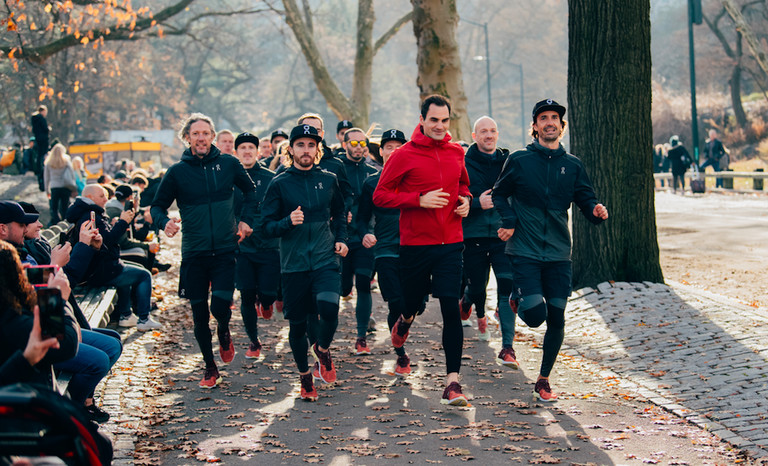
With Federer’s extensive sports background and eye for design, he will undoubtedly be an asset to the relatively new company. On Running explains that the choice to bring Federer on was about much more than sponsorship. “Roger brings unique insight as one of the most influential and admired athletes at the top of world sport. Together, we are looking to create unique products and experiences for On fans around the world.”

Federer’s first line of shoes will be released summer 2020. Up next for the tennis player are the Tokyo 2020 Olympics and the Laver Cup.
In other Federer news, he became the first living person to be featured on Swiss coins on Tuesday. Safe to say it’s been a pretty good week for the tennis player.
(12/04/2019) ⚡AMPby Madeleine Kelly
Women's Olympic marathon and all race walks rescheduled at Tokyo 2020 Olympic Games
The women's marathon and all race walks at the Tokyo 2020 Olympics have been rescheduled following an earlier decision to relocate them to Sapporo.
Organisers have changed the dates to assist athletes who must now travel 500 miles north of Tokyo to compete.
The women's marathon has moved from 2 August to 8 August. The men's marathon will still take place on the final day of the Games, as is tradition.

Events were relocated from Tokyo, where peak summer temperatures can reach 30C.
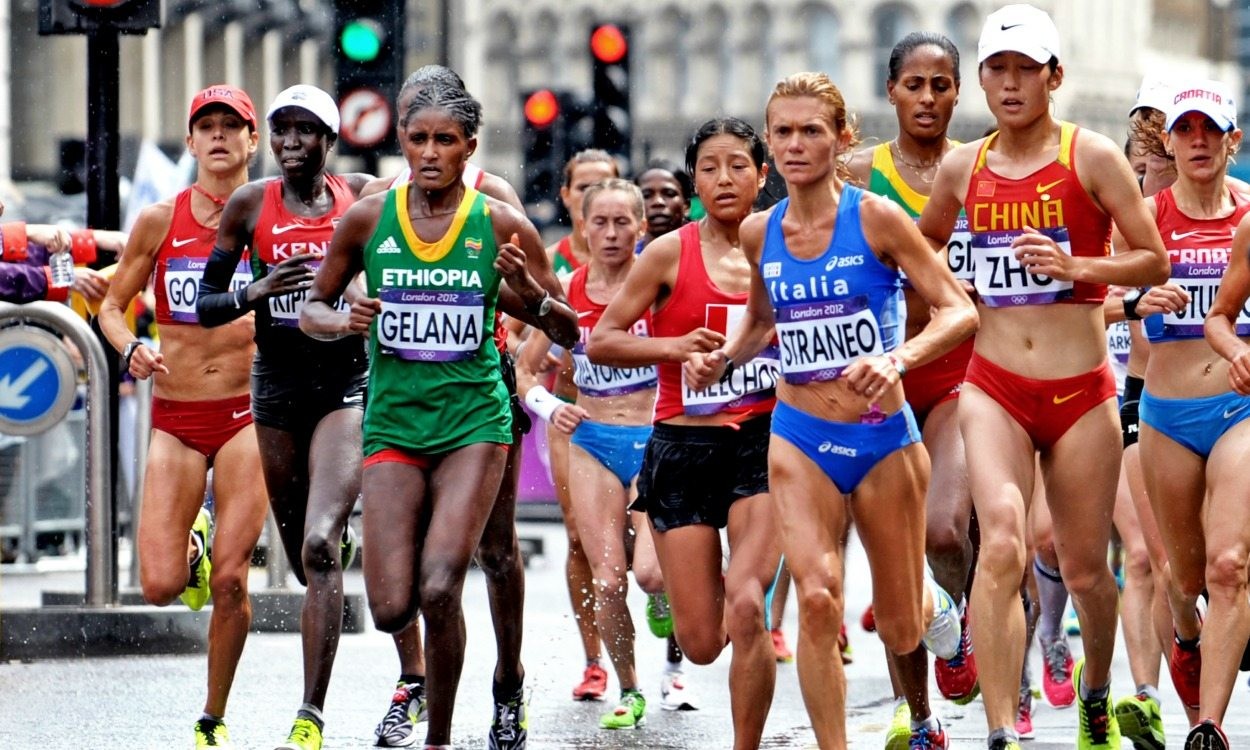
The rescheduled races will take place on four consecutive days from 6-9 August, following consultations between Tokyo 2020 organisers the International Olympic Committee and World Athletics.
Both marathons will start at 07:00 local time (22:00 GMT).
The women's marathon at the recent World Championships in Doha saw 28 of the 68 starters withdraw, despite the race being run at midnight in a bid to negate the hot and humid conditions.
The men's 20km race walk will take place on 6 August, and the 50km event and women's 20km event on 7 August.
(12/04/2019) ⚡AMPTokyo 2020 Olympic Games
Fifty-six years after having organized the Olympic Games, the Japanese capital will be hosting a Summer edition for the second time, originally scheduled from July 24 to August 9, 2020, the games were postponed due to coronavirus outbreak, the postponed Tokyo Olympics will be held from July 23 to August 8 in 2021, according to the International Olympic Committee decision. ...
more...Eliud Kipchoge, has told Reuters he will defend his Olympic title in Tokyo next year, if he is selected
Eliud Kipchoge, the greatest marathon runner in history, the world record holder and only man to go under two hours for the distance, has told Reuters he will defend his Olympic title in Tokyo next year – if selected.
It should be reasonably safe to assume, even taking into account the often chaotic and inexplicable selection procedures that have long dogged Kenyan athletics, that Kipchoge will be given the chance to run next August.
“If selected I will be there.” he told Reuters in an exclusive interview in Nairobi on Tuesday. “It (Tokyo) is at the front of my mind, and I trust and believe that when the time comes I will be on the starting line.”
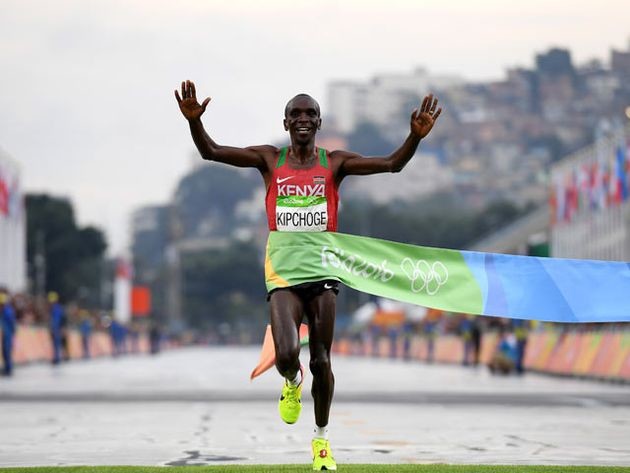
That line will now be in the northern city of Sapporo, where the marathons and walking events have been moved by the International Olympic Committee (IOC) in a bid to avoid the worst of the debilitating heat and humidity of the Tokyo area.
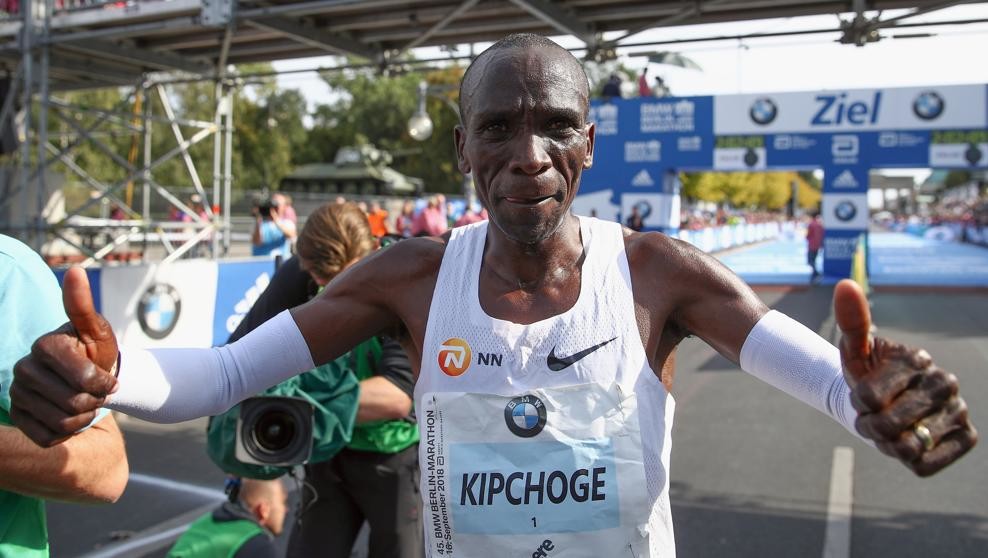
But Kipchoge, as ever, was careful not to voice a strong opinion on the issue.
“I think the medals are the same,” he said. “I will be among the competitors, I don’t complain, I’m in the hands of the IOC and anywhere they decide, I will go with it.”
That will be music to the ears of the organisers, especially in marathon-mad Japan, where the 35-year-old will be treated to the sort of adulation last seen when sprinter Usain Bolt was sweeping all before him.
Kipchoge has won 11 of his 12 official marathons, including the 2016 Rio Olympics, and with the world record and the sub-two hour mark under his belt, along with a string of lucrative big-city races he is a colossus of his sport.
(12/04/2019) ⚡AMPTokyo 2020 Olympic Games
Fifty-six years after having organized the Olympic Games, the Japanese capital will be hosting a Summer edition for the second time, originally scheduled from July 24 to August 9, 2020, the games were postponed due to coronavirus outbreak, the postponed Tokyo Olympics will be held from July 23 to August 8 in 2021, according to the International Olympic Committee decision. ...
more...Kenya's Marius Kipserem will face his compatriot Dickson Chumba in his quest to defend Abu Dhabi marathon title
Kenya's Marius Kipserem believes nothing will stop him in his bid to retain the Abu Dhabi Marathon on Friday.
The women's race will invoke a teammate rivalry as Kenya's Vivian Kiplagat (2:22:25) and Bahrain's Eunice Chumba (2:24:27), who is 10,000m silver medalist of Asian Athletics Championships in Wuhan, China.
However, unlike last year during the inaugural race, Kipserem will have to dig deeper if he has to keep at bay his rivals led by compatriot and former Chicago and Tokyo Marathon winner Dickson Chumba.

"I have done well in training and am focused on the race in Abu Dhabi. I have no pressure whatsoever because I know what work, I have put in and what is expected.

There are other runners with a higher pedigree and records, but the reality on the race day is how prepared one is in the mind and fitness," Kipserem said on Tuesday.
Kipserem won the 2018 Rotterdam in 2:06:11 in April and improved that record to 2:4:12 in Abu Dhabi in December.
"I am going to defend my title and hopefully with a better time than last year," Kipserem added. In winning the inaugural race in Abu Dhabi, Kipserem stopped the clock at 2:04:12.
He is hoping to shave off two minutes to join the elusive club of marathon runners who have hit the two hours and two minutes' mark, currently held by just around four runners - Kenenisa Bekele (2:01.42), Eliud Kipchoge (2:01.39), Birhanu Legese and Dennis Kimetto.
"Everyone wants to compete in the big city marathons and after Abu Dhabi, I believe London will be the next stage, which I consider a good trial for the Tokyo Olympics. London is very important for me because a good result can earn me a spot in Kenya's four-member marathon team at the Olympics," he added.
Kipserem made the Kipchoge's INEOS 1:59 Challenge. He was part of the 31 pacesetters, who were contracted to help Olympic marathon champion Eliud Kipchoge to accomplish his task to become the first man to run the 42km distance in less than two hours. Kipchoge stopped the clock at 1:59.40.
Chumba (2:04:32), who will provide the challenge to Kipserem, has not had a good season. He failed to defend his Tokyo marathon title and was seventh at the Chicago marathon in October.
"I feel strong after the Chicago race. In Tokyo, it was wet and slippery and I had to slow down to avoid injury. I have not raced since then and will be happy to go to Abu Dhabi and win against the strong athletes lined up," Chumba said.
(12/03/2019) ⚡AMPADNOC Abu Dhabi Marathon
The Abu Dhabi Marathon is shaping up to being first class marathon for both elite runners and average runners as well. Take in the finest aspects of Abu Dhabi's heritage, modern landmarks and the waters of the Arabian Gulf, at this world-class athletics event, set against the backdrop of the Capital's stunning architecture.The race offered runners of all abilities the...
more...Tokyo’s new National Stadium is ready for action
Eight months before the 2020 Olympic Games in Tokyo begin on July 24, construction on the new 60,000-seat stadium for the Games is complete, and it is an impressive sight. Several organizations tweeted photos of the facility yesterday where the Games’ opening and closing ceremonies, track and field events, soccer and the Paralympic Games will take place.
The stadium, which is to be called simply National Stadium, is located in Shinjuku City, one of the busiest and most densely populated parts of Tokyo. The structure, which began construction in December 2016, is said to have cost close to CAD $2 billion. It will be owned and operated by Japan Sport Council.
The building, which replaces the previous National Stadium, which was built for the 1964 Olympics, was designed by architect Kengo Kuma and design firm Azusa Sekkei Co. and built by Taisei Corp.

The facility’s 60,000 seats (fewer when the stadium is configured for the Paralympics, which will replace some seating with space for wheelchairs) are in a random pattern of greens and earth tones. According to a story in The Japan Times, it’s designed to resemble “a mosaic representing sunbeams filtering through a forest.”
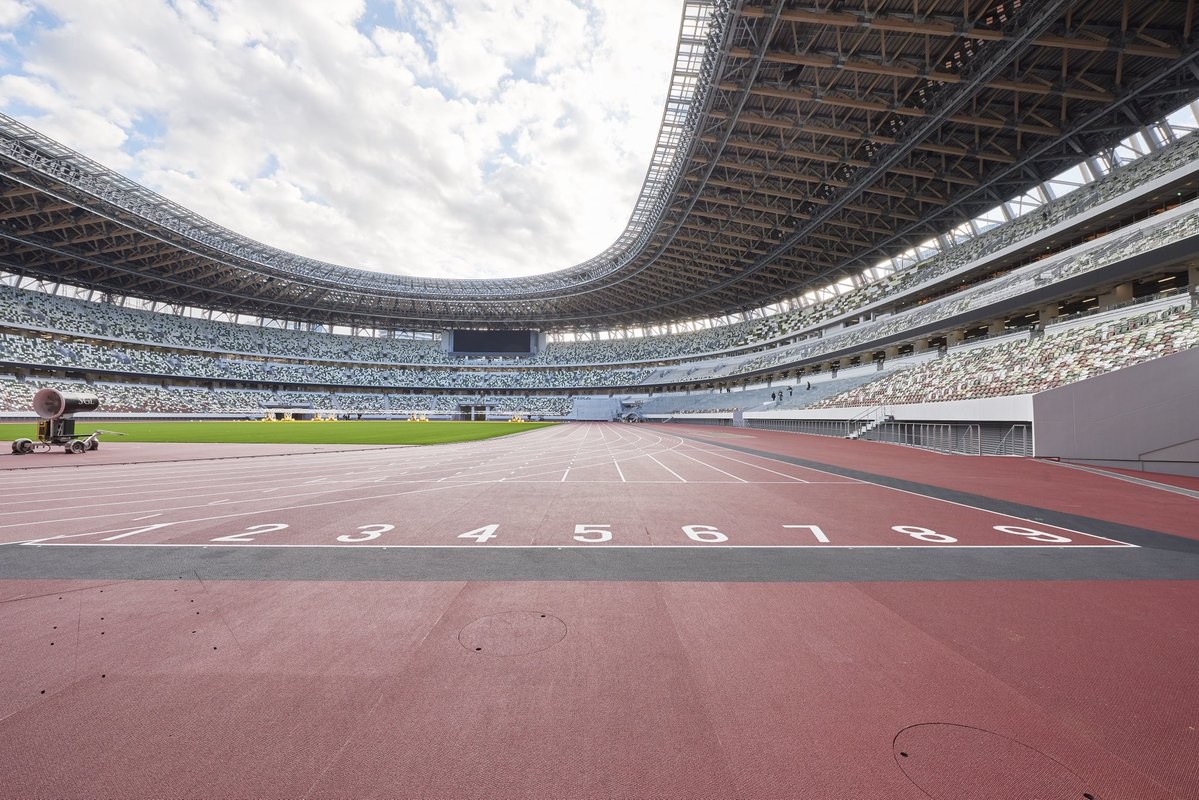
To mitigate the extreme heat and humidity expected next summer, 185 fans will cool athletes and spectators in the stadium, along with eight mist-cooling devices.
The stadium is just one of numerous venues that will be used for the Olympics. The Ariaki Gymnastics Center and the Olympic Aquatics Center are both still under construction. The men’s and women’s Olympic marathon and 50K race walk will be held in Sapporo, 800 kilometers north of Tokyo.
Stay tuned for the grand opening ceremony of the stadium on December 21, at which Usain Bolt is expected to appear. The final game of Japan’s national soccer cup tournament, the Emperor’s Cup, will take place on January 1.
(12/03/2019) ⚡AMP
by Anne Francis
Tokyo 2020 Olympic Games
Fifty-six years after having organized the Olympic Games, the Japanese capital will be hosting a Summer edition for the second time, originally scheduled from July 24 to August 9, 2020, the games were postponed due to coronavirus outbreak, the postponed Tokyo Olympics will be held from July 23 to August 8 in 2021, according to the International Olympic Committee decision. ...
more...Meredith Tribble, a Davis graduated qualifies for Olympic Trials in women's marathon
Meredith Tribble sets no limits on her demanding lifestyle. Married and mother of two young children, a full-time job, involved in her church, and all with the years steadily creeping up.
There’s room in there for more, she felt, as long as the day starts a little earlier.
So before 5 o’clock most mornings, the former Davis standout heads out her front door to run in the dark. The sun will rise at some point, maybe halfway through a hard 14-mile tempo run, but she’ll be back home in time to get the rest of the family up and going.
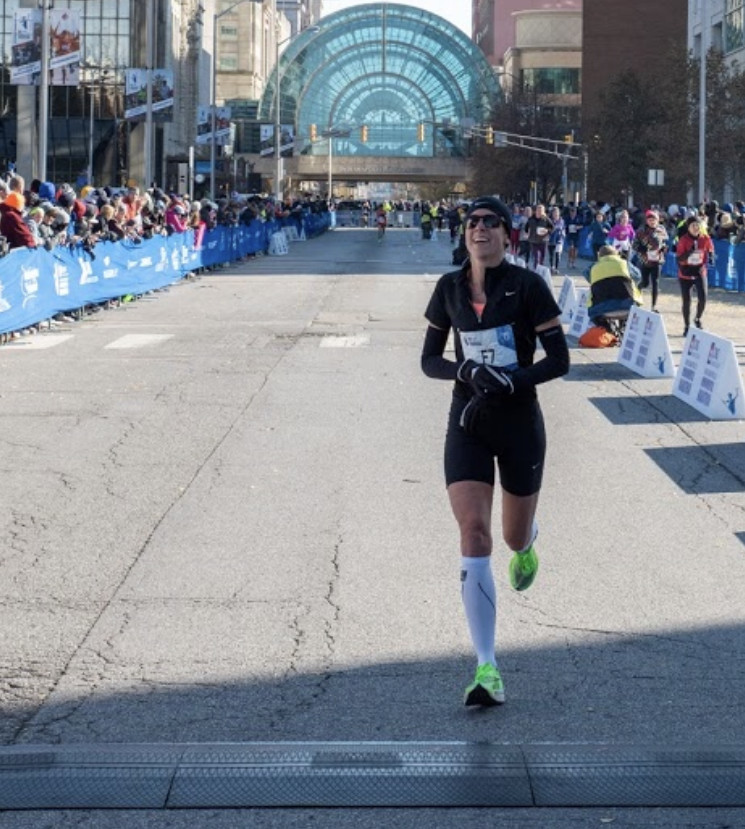
It’s out there on the trails and roads in the small hours of the day that Tribble found her purest form of joy in running. It’s worth it, she believes, to add this challenge on top of so many others because of the rewards to be found.
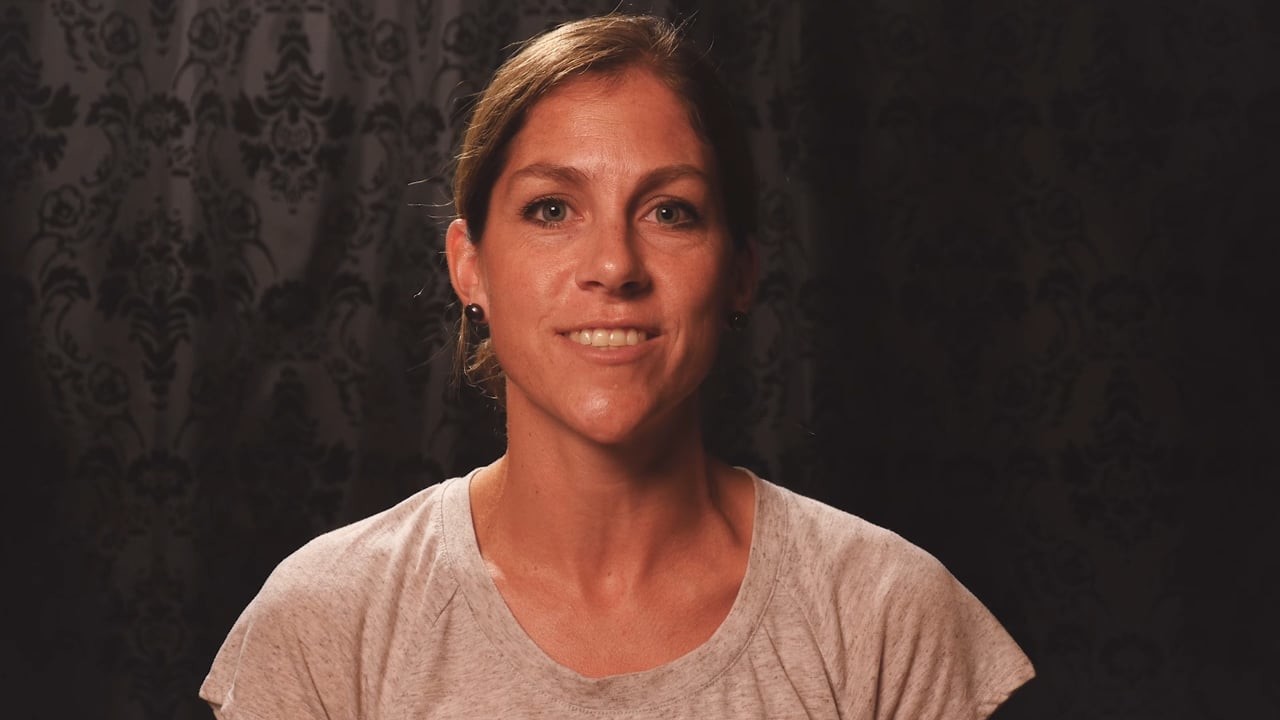
In just her third marathon last month, Tribble qualified for the U.S. Olympic Trials next year, winning her age group while placing ninth overall at the Indianapolis Marathon with a time of 2 hours, 42 minutes, 41 seconds.
“It was a goal and I’m just so proud of accomplishing it,” she said from her home in Riverside, Calif. “It wasn’t so much the time that motivated me but the drive to push myself to new limits. Just to power through physically, emotionally and mentally. It was very much a spirit-led journey.”
In her debut effort, just to test the legs at the 26.2-mile distance, Meredith ran 2:58 in early spring of 2018. That was easy enough, so she ramped up training and three months later she clocked 2:45:19, just missing the Trials standard by 19 seconds.
Meredith did, however, qualify for the USATF Marathon Championships in Sacramento in early December. Her fitness was solid, as evidenced by a 1:15 half marathon in October, but on the day of the race she backed out feeling ill. She soon discovered she was pregnant, but less than a month later she miscarried.
“Emotionally it was a very difficult time,” she said. “I had to give my body a long time to recover.”
The next step comes on Feb. 29 when Meredith will join the fastest women’s marathoners in the country in Atlanta for the U.S. Olympic Trials. At the front, this race will determine the three qualifiers for the 2020 Summer Olympics in Tokyo. For the rest, as with the men on the same day, it’s an opportunity to compete in what is essentially a national championship.
(12/03/2019) ⚡AMPby Scott Spruill
2024 US Olympic Trials Marathon
Most countries around the world use a selection committee to choose their Olympic Team Members, but not the USA. Prior to 1968, a series of races were used to select the USA Olympic Marathon team, but beginning in 1968 the format was changed to a single race on a single day with the top three finishers selected to be part...
more...Brit Darren McClintock Loses 266lbs, then Runs Half Marathon With His Trainer
A morbidly obese fast food addict who was given a “diet or die” ultimatum from his doctors not only lost 266 pounds, he also completed a half marathon with his personal trainer.
Twenty-eight-year-old Brit Darren McClintock, nicknamed “Dibsy,” weighed 560 pounds (approx. 254 kg) in 2018. Doctors warned Dibsy that his junk food habit may very well send him to an early grave, and the shocking revelation spurred the young man into action.
Personal trainer Mike Hind, notorious for his practice of taking on one pro bono client every year, noticed Dibsy and his mom outside his healthy diner one day and offered the overweight man his assistance. It was the boost Dibsy needed to get started on his formidable weight loss journey.
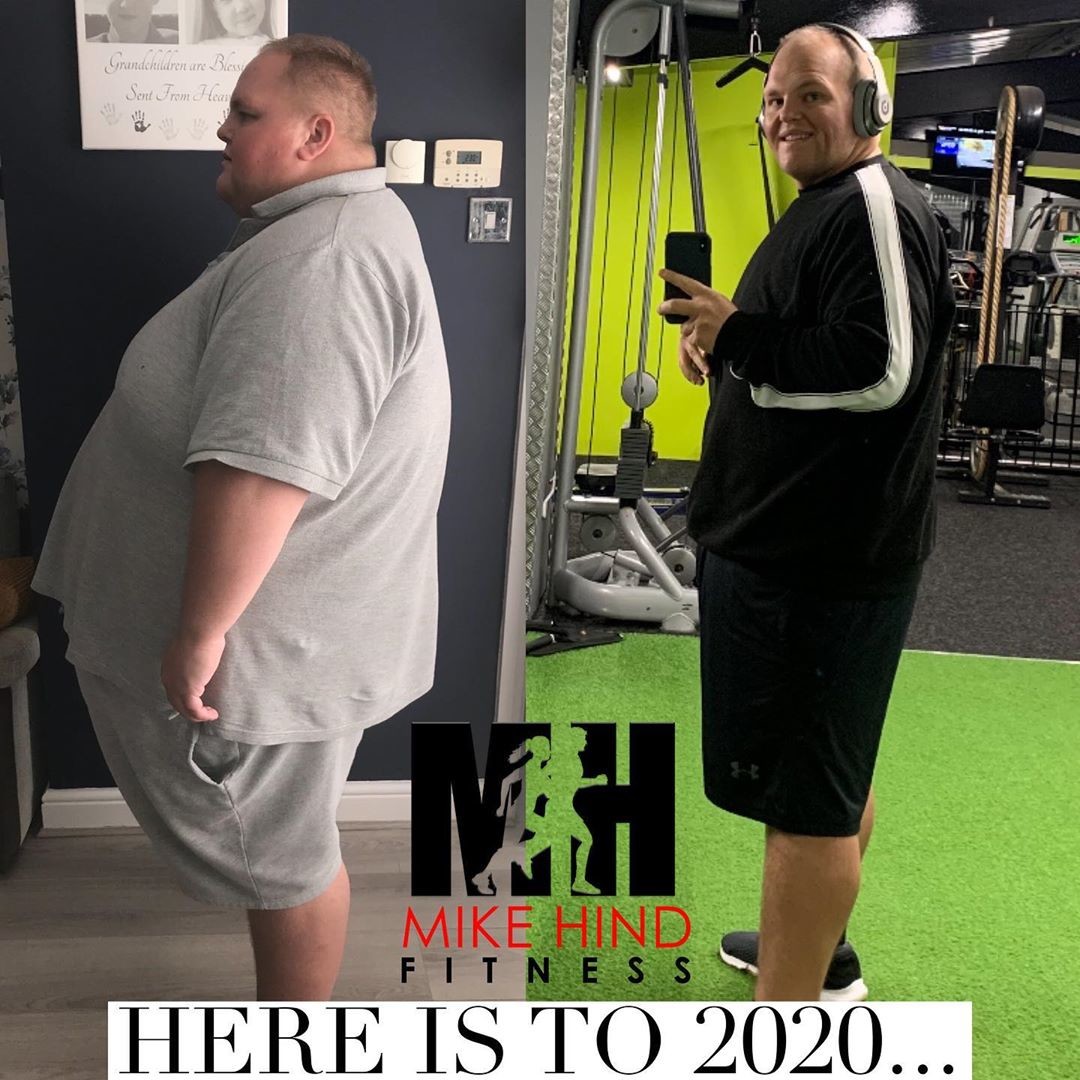
Hind, a married father of three, had an ingenious idea. He planted posters around Dibsy’s hometown of Middlesbrough, England, urging fast-food vendors not to serve his client.
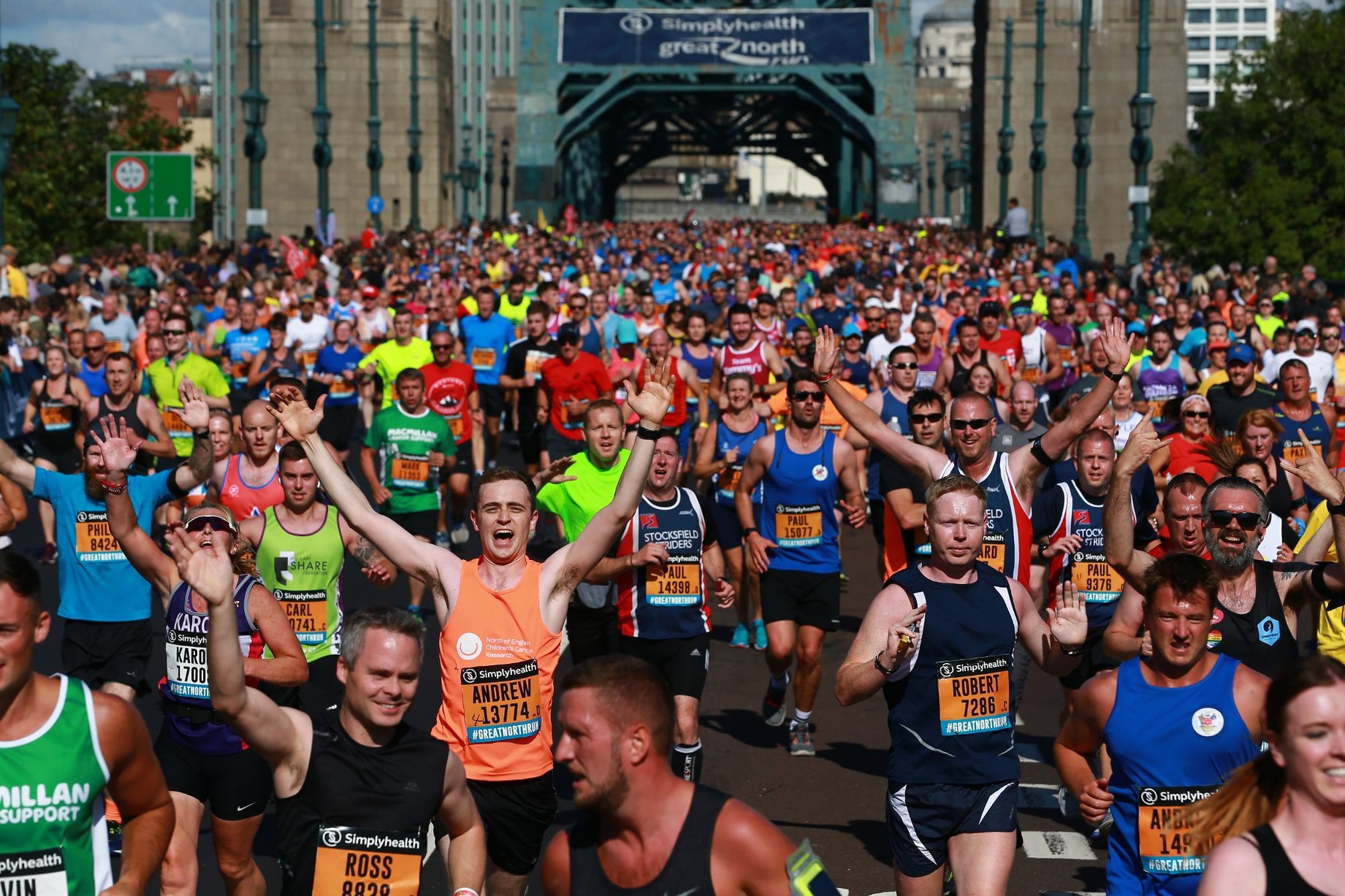
“Save Dibsy,” the poster read. “Obesity is killing him. Do not serve this man.”
Dibsy had succumbed to comfort eating after losing his father at the age of 18. Unemployed and unable to find clothes that fit, Dibsy was debilitated by his excess weight. According to The Sun, he even spent his nights sleeping on the sofa, unable to climb the stairs to bed.
Dibsy pledged to give up his vices: fast food, fizzy drinks, and alcohol. He pledged to reduce his staggering 11,000 daily calorie consumption, and Hind helped his overweight friend to design the perfect, tailor-made exercise regime.
According to the United Kingdom’s government statistics, 29 percent of adults in the United Kingdom were classified as obese in 2018. In the United States, this figure was 39.8 percent for the last recorded year (2016), as per the Centers for Disease Control and Prevention.
Hind provided Dibsy with the expert advice and moral support he needed to thrive on his new regime. With hard work, determination, and gargantuan willpower, Dibsy started to see impressive results.
Ten months after his weight loss journey began, Dibsy had lost almost half his original body weight. In celebration of his progress, Dibsy completed the Great North Run in Newcastle, England, on Sept. 8, 2019.
“I’m under no illusions that it will be a hard, long day,” Dibsy told ITV ahead of the run, incidentally the world’s biggest half marathon. “But my heart won’t give up, and I’m in a good position now to do it.”
As good as his word, Dibsy finished the race in a triumphant 2 hours and 43 minutes.
The runner spoke to Teeside Live after crossing the finish line. “I didn’t realize how much support there would be, people shouting along the way, it was unbelievable,” Dibsy said.
“It’s an amazing feeling afterwards, knowing you have done it,” the young runner continued. “I found it hard but the sense of achievement is unbelievable.” Dibsy hopes to achieve an even better finishing time in 2020.
(12/03/2019) ⚡AMPby Louise Bevan
Great North Run
Great North Run founder Brendan Foster believes Britain is ready to welcome the world with open arms after the launch of the event's most ambitious plan to date. The Great World Run campaign seeks to recruit one runner from every country in the United Nations – 193 in total – to take part in the iconic half marathon in...
more...Gary Allen the founder of Millinocket Marathon was honored by governor at tourism conference
The founder and director of the Millinocket Marathon and several other significant endurance events across Maine was honored during the recent Governor’s Conference on Tourism at the Augusta Civic Center.
Gary Allen of Cranberry Isles was presented the 2019 Governor’s Conference on Tourism Originality Award for his creative work in organizing cutting-edge events that help build, empower and activate Maine communities.
This award is presented to companies, organizations or persons who have made significant contributions to Maine’s tourism industry.
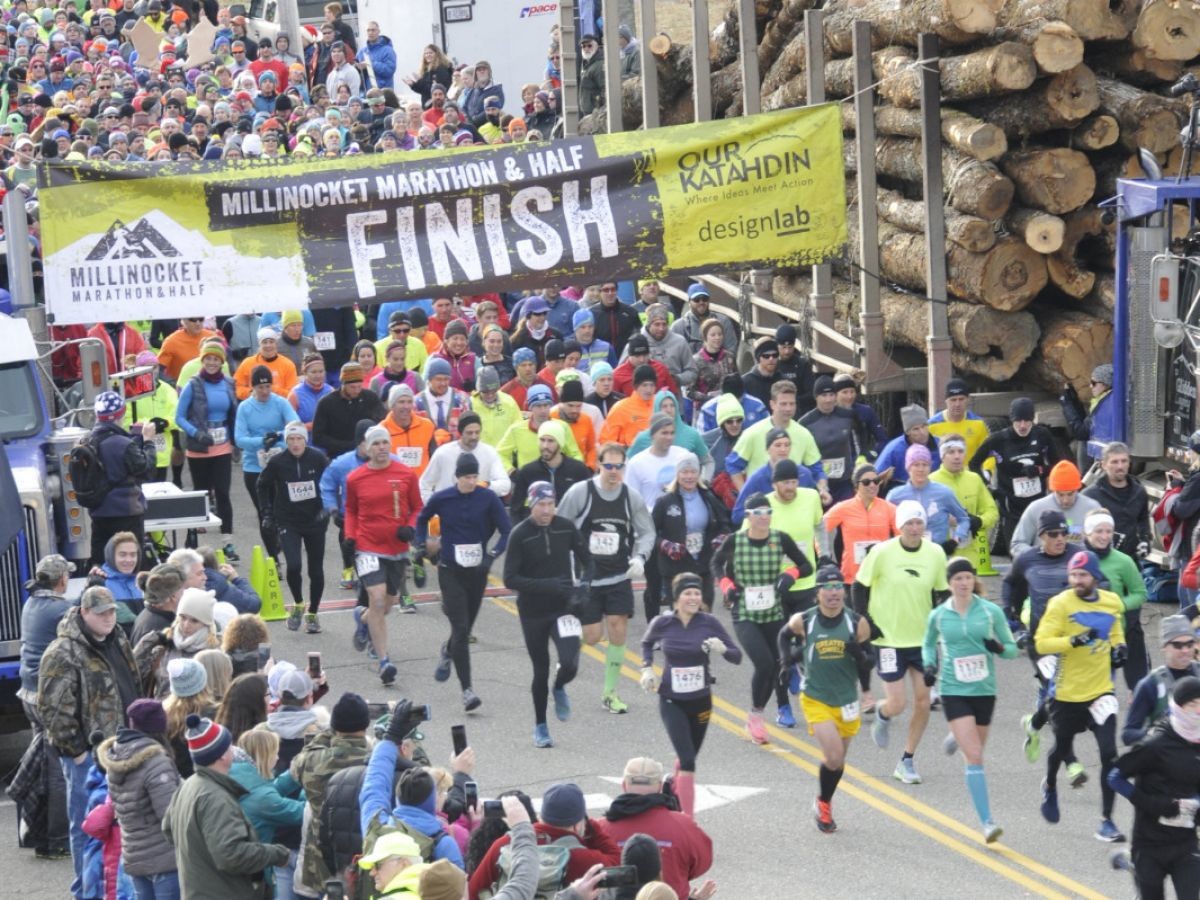
Allen is the first individual to win the award.
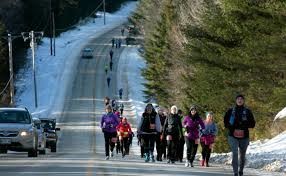
“Gary Allen is emblematic of the Maine spirit of originality,” Steve Lyons, director of the Maine Office of Tourism, said in a release. “His vision for a kind of ‘participation tourism’ that binds visitors and communities is directly in line with current trends in the types of experiences today’s visitors seek, and is a commendable example of sustainable tourism.”
The award specifically recognizes the Millinocket Marathon, which has earned national accolades for its cutting-edge, pay-it-forward, free-to-participate platform.
The December race has attracted thousands of new visitors to the Katahdin area and has provided a major economic boost to a region devastated by the collapse of the northern Maine paper industry.
Participants not only are going to the Katahdin region from all across the United States for the race, but several attendees recently have purchased homes in Millinocket.
“I am beyond thrilled to be recognized for what I do but make no mistake, I believe these accolades represent the absolute tip of the iceberg for what we can do here in Maine to grow our tourism economy by thinking outside the box,” Allen said in the release.
(12/03/2019) ⚡AMPMillinocket Marathon
The Millinocket Marathon & Half has again joined forces with the Mount Desert Island Marathon, Half & Relay to create the Sea to Summit Maine Race Series, featuring two amazing events and a very special finishers medallion! This FREE event was started in 2015 to help a struggling Maine mill town that has been devastated by the closing of their...
more...The Philadelphia Marathon removed 147 entries of course-cutters from its 2019 results
The Philadelphia Marathon, a popular Boston qualifier with around 24,000 finishers every year, removed 147 entries from its 2019 results when it was clear that those people cut the course. A notice on the race’s website gives them the benefit of the doubt, indicating they were either tired or injured and “trying not to cheat,” adding that “We don’t embarrass people, we try and help.”
Derek Murphy of MarathonInvestigation.com takes the unusual step of agreeing with the race. “I do agree with their statement that the majority of the runners that skipped from the 13.1 timing mat to the finish likely did not do so with the intent to cheat. It was a miserable day, and most likely just wanted to call it a day.”
Moreover, the race identified more than 8,000 people who did not start in the wave they were assigned to, which could legitimately have resulted in their being disqualified, but instead they corrected their results.

Murphy praised the race organizers for the appropriate way they dealt with suspicious results. “I have been critical of The Philadelphia Marathon in the past,” says Murphy. “As such, I feel it is my obligation to acknowledge when they get it right. This year, they got it right.”
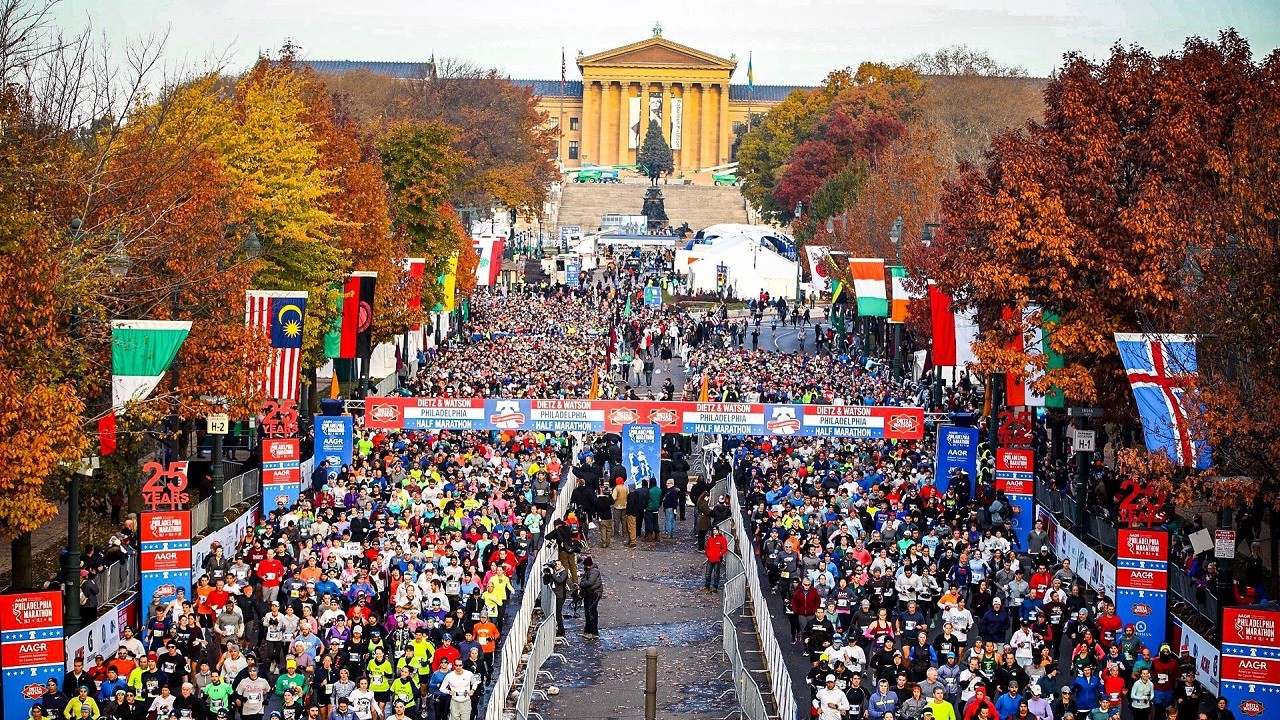
After receiving a tip, Murphy did identify one serial cheater, a man named Tracy, who has made a habit of jumping onto marathon courses around the halfway point and then cutting to yield impressive-looking result–in this case a 3:18 finish. Tracy was apparently walking on the course while “cluelessly” staring at his phone, blocking the way for fast runners and a handcycle wheelchair athlete, who was blowing his whistle to get him to move out of the way and who was forced to swerve around him. When the tipster moved across to cheer at the return portion of the course, she saw Tracy again, and knew he had obviously cut across. Murphy suspected it was Tracy, which was later confirmed by photos and by analyzing his results.
Tracy’s history of course-cutting goes back to 2013, when he recorded a 2:50 split for a half-marathon and a 3:07 finish (17 minutes later). He finished a 2016 race with a 3:02 finish and was later disqualified, and he recorded results from 2017 and 2018 (from which he was not disqualified) showing 3:26 and 4:07 finishes, respectively, but with no splits.
Murphy notes that Tracy is not attempting to use his times to apply for Boston.
(12/02/2019) ⚡AMPby Anne Francis
Philadelphia Marathon
Whether you’re a seasoned marathoner or a first-timer, Philadelphia is the place for you. We’ve designed our course to be scenic, fan-friendly and, above all, great for running. It’s no wonder we're consistently listed among the top ten races in the country, recognized for our mostly flat terrain, ideal temperature and awesome atmosphere. Join us this fall for the best...
more...The most recent allegations echo reports by Kara Goucher about athletes being encouraged to take unnecessary medications to lose weight and improve performance
Britain’s Daily Mail reports that top UK athletes allege they were repeatedly encouraged by team doctors to have their thyroids checked, even when they exhibited no symptoms, leading to speculation about the use of thyroid medications to boost their performance.
The report echoes the report by the US Anti-Doping Agency (USADA) that former Nike Oregon Project Alberto Salazar inappropriately used thyroid medication with athletes.
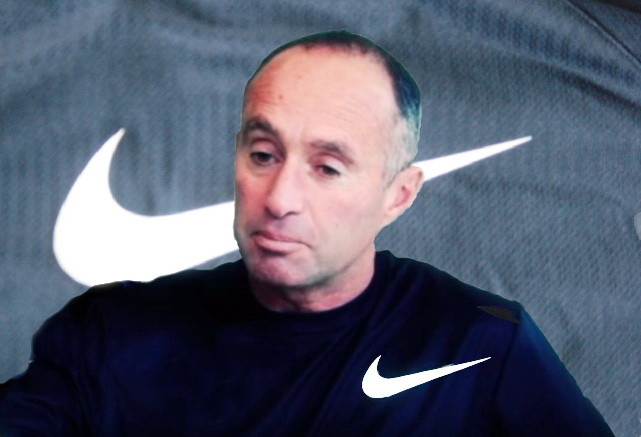
This is only the latest in a series of issues plaguing British athletics. Head coach Neil Black, known to be a strong supporter of Salazar’s, resigned shortly after the ban was announced, in the midst of the World Championships, from which British athletes brought home a disappointing five medals.
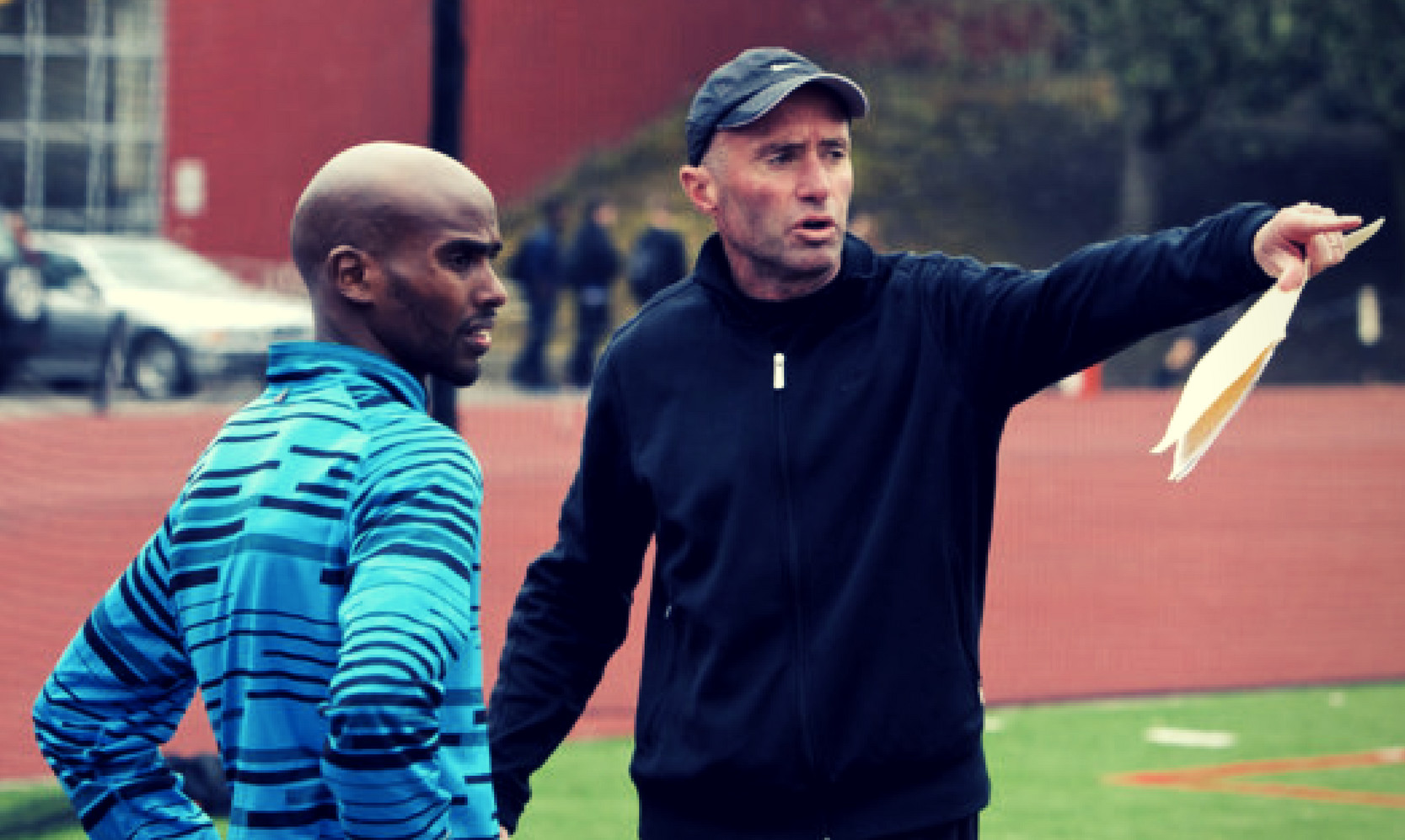
UK Athletics also announced it would mount an investigation into why one of its top athletes, Sir Mo Farah, was encouraged to continue training with Salazar at the NOP in 2015 after Salazar came under investigation by USADA. And last week the newly appointed UKA chair, Zara Hyde Peters, was forced to step down before taking up her duties when it was discovered that her husband, who had been banned from teaching after an “inappropriate relationship” with a 15-year-old girl, had been allowed to coach at the club where Hyde Peters was vice chair.
Medications to improve thyroid function, including L-thyroxine and Cynomel, are not on WADA’s list of prohibited substances (and do not even require a Therapeutic Use Exemption, or TUE), though both USADA and UK Anti-Doping have called for them to be banned except in cases where a need is clearly demonstrated. Such medications, which can lead to serious heart issues when taken inappropriately, are known to aid weight loss, which is perceived to lead to faster times on the track. In the wake of being banned from athletics, Salazar has been the subject of numerous reports that he was obsessive about female athletes’ weight, publicly shaming those he thought were too heavy.
The report quotes athletes Jo Pavey and Matthew Yates, who say thyroid medications should be banned except in cases where they are necessary to maintain adequate thyroid function, and only with a TUE. The rate of hypothyroidism is estimated at one in 20 in females and one in 100 in males, and a physician consulted by the paper claimed that inappropriate use of thyroid medication can lead to serious heart issues. One athlete claims they were tested after a race and encouraged to visit their family doctor to confirm a suspicious result, but that a second test showed a normal result. In another case, an athlete who tested negative was encouraged to take another test after a hard workout, which can influence the result.
The report names Dr. Robert Chakraverty, chief medical officer for UK Athletics from 2013 to 2016 and his successor, Dr Noel Pollock, as having encouraged the tests.
(12/02/2019) ⚡AMPby Anne Francis
Kaan Kigen Ozbilen from Turkey smashed Mo Farah’s European record in the Valencia Marathon on Sunday, clocking 2:04:16 to finish second behind Ethiopian debutant Kinde Atanew
Farah’s now-beaten mark of 2:05:11 moved into Ozbilen’s view after he finished second in the Rotterdam Marathon in April in 2:05:27 to become the second fastest European marathon runner in history and Ozbilen credits following the instructions of the venerable Kenyan coach Patrick Sang for taking him below this record.
Ozbilen had to settle for the runner-up spot again but the 33-year-old has taken the European record into new territory, slashing almost one minute off Farah’s mark which was set in the Chicago Marathon last October. There is unlikely to be a riposte from Farah next spring after the Brit announced on Friday he is aiming to contest the 10,000m at the 2020 Olympics in Tokyo.
Ozbilen was on pace to eclipse Farah’s mark from the gun and the former European cross country champion passed through the halfway mark in 61:58 which put him on course for a sub-2:04 clocking. As the temperatures rose and the leading group splintered, Ozbilen drifted off this schedule slightly but the Turk was never in danger of relinquishing his grip on the record, securing his second podium finish of the season in 2:04:16.

“I’ve been training with the best group in the world - the wonderful Patrick Sang who is coaching Eliud Kipchoge. I was expecting to run well but I was only at 80 percent because I had a problem but today it was my day. Everything went the way I wanted it,” Ozbilen told Alberto Stretti after the race.

On whether Kipchoge had imparted any advice or words of wisdom ahead of the race, Ozbilen added: “Eliud told me ‘you are capable of winning this race because we have been training together and in every section we have been finishing together.”
In a high calibre race, Norway’s Sondre Nordstad Moen made an excellent comeback after a series of setbacks since running a European record of 2:05:48 to win the Fukuoka Marathon in 2017. In his first completed marathon since that race almost two years ago, Moen finished seventh in 2:06:16 to easily secure the Olympic qualifying standard for 2020.
The theme of Scandinavian success continued as David Nilsson broke the long-standing Swedish record, finishing 16th in 2:10:09 to improve Kjell-Erik Stahl’s mark of 2:10:38 which had stood since the 1983 World Championships. Nilsson recorded near identical halfway splits of 65:05 and 65:04.
(12/02/2019) ⚡AMPVALENCIA TRINIDAD ALFONSO
The Trinidad Alfonso EDP Valencia Marathon is held annually in the historic city of Valencia which, with its entirely flat circuit and perfect November temperature, averaging between 12-17 degrees, represents the ideal setting for hosting such a long-distance sporting challenge. This, coupled with the most incomparable of settings, makes the Valencia Marathon, Valencia, one of the most important events in...
more...Irish Marathon runner Paul Pollock run his personal best at the Valencia Marathon, 2:10:25 securing the automatic qualifying time for next year’s Tokyo Olympic marathon
It was an improvement of over five minutes on Pollock’s previous best and also moves the Belfast runner to number two on the Irish all-time list behind John Treacy’s 2:09.15 set 31 years ago in Boston, and moving Mark Carroll into third with his 2:10.52 run in New York in 2002. Pollock finished in 20th position in Valencia.
The 33-year-old also qualified for the Rio Olympic marathon in 2015, and has been one of Ireland’s top performers on the road in recent years, his previous best being 2:15.30. A qualified doctor, he has also endured his share of injuries in recent years and as recently as September was out with a broken metatarsal.
Pollock also becomes the first Irish men’s qualifier in the marathon for Tokyo; Fionnuala McCormack becoming the first Irish woman to qualify in Chicago in October. Fellow Belfast runner Stephen Scullion is also eyeing up the Tokyo standard of 2:11.30, eyeing up the Houston marathon next month.
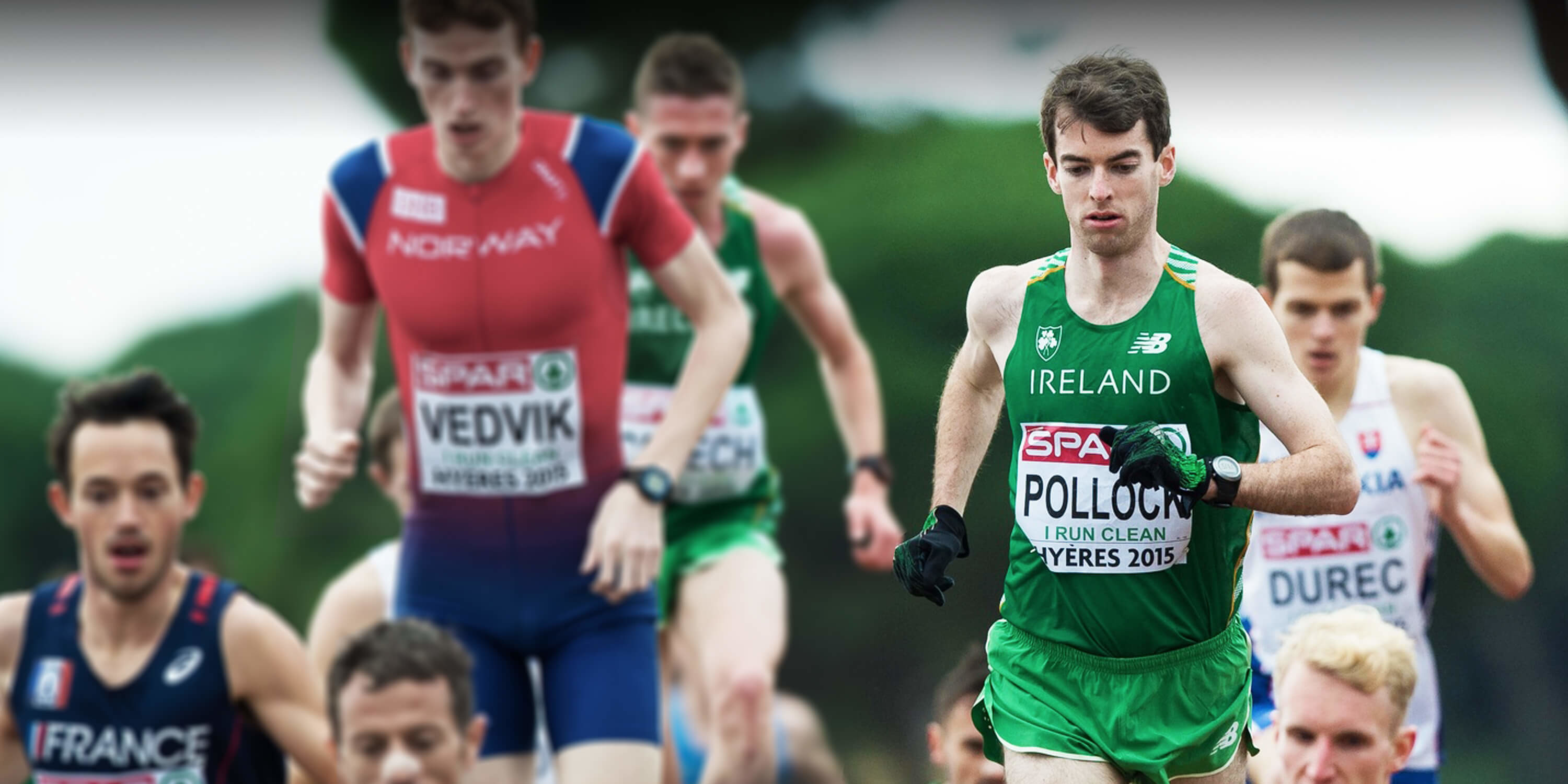
Interestingly Pollock was also wearing the Nike Zoom Vaporfly Next Percent, the running shoes that have courted some controversy for the series of faster marathon times this year.
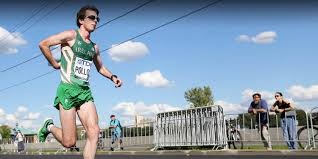
Also running in Valencia over the 10km, Joshua Cheptegei smashed the world record in that distance, clocking 26.38. The Ugandan clipped six seconds from the previous record of 26.44 set by Kenya’s Patrick Komon in 2010 to complete a sensational 2019 hat-trick that included world titles in cross-country and 10,000m on the track.
Running on his own over the entire second half, a determined Cheptegei reached 6km in 16.02 and 7km in 18.42. Cheptegei forged on, reaching 8km in 21.37, when it became clear that the world record was within reach.
With 23.59 on the clock at the 9km point, Cheptegei needed to cover the final kilometer in 2.45, a close well within his capabilities.
“World cross champion in Denmark, 10,000m world champion in Doha and now the world record here in Valencia. What a year it has been,” the 23-year-old said. “I can’t believe it. I knew that Valencia was going to be a really fast course, one of the fastest in the world. So to get to achieve what we came here for is something really special.”
(12/02/2019) ⚡AMPby lan O'Riordan
Tokyo 2020 Olympic Games
Fifty-six years after having organized the Olympic Games, the Japanese capital will be hosting a Summer edition for the second time, originally scheduled from July 24 to August 9, 2020, the games were postponed due to coronavirus outbreak, the postponed Tokyo Olympics will be held from July 23 to August 8 in 2021, according to the International Olympic Committee decision. ...
more...Newcomer Kinde Atanaw Alayew wins the Trinidad Alfonso Valencia Marathon and shatters the record
Ethiopians Roza Dereje and Kinde Atanaw Alayew produced impressive victories at the Maraton Valencia Trinidad Alfonso, a World Athletics Gold Label road race, in the eastern Spanish city on Sunday (1).
In the women’s race Dereje clocked 2:18:30 to move up to No. 8 on the all-time world list while pulling the next three finishers under 2:19, the first time four women have broken that barrier in the same race.
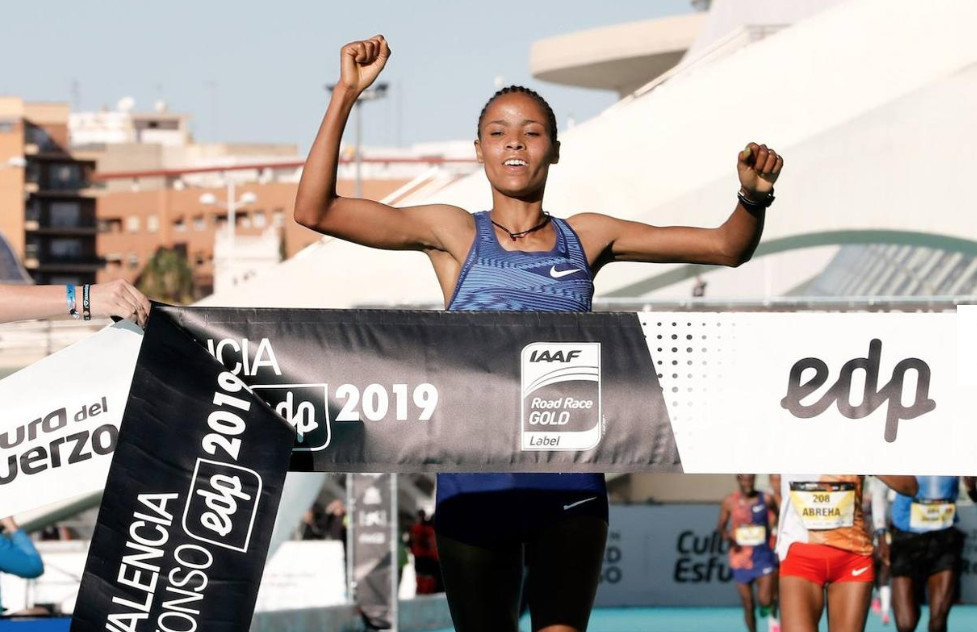
In the men’s contest the 26-year-old Alayew clocked 2:03:53 in his debut over the distance to finish 38 seconds inside the previous Spanish all-comers record set at this race last year.
Extraordinary depth - women’s race
The early pace in the women’s race was ambitious with Kenya’s Purity Rionoripo plus the Ethiopian pair of Workenesh Edesa and Dereje going through 10 kilometres in 32:33. Meanwhile, pre-race favourite Vivian Cheruiyot proved to be a bit more conservative but even so the Kenyan ace clocked 32:47 running with Ethiopia’s Birhane Dibaba.
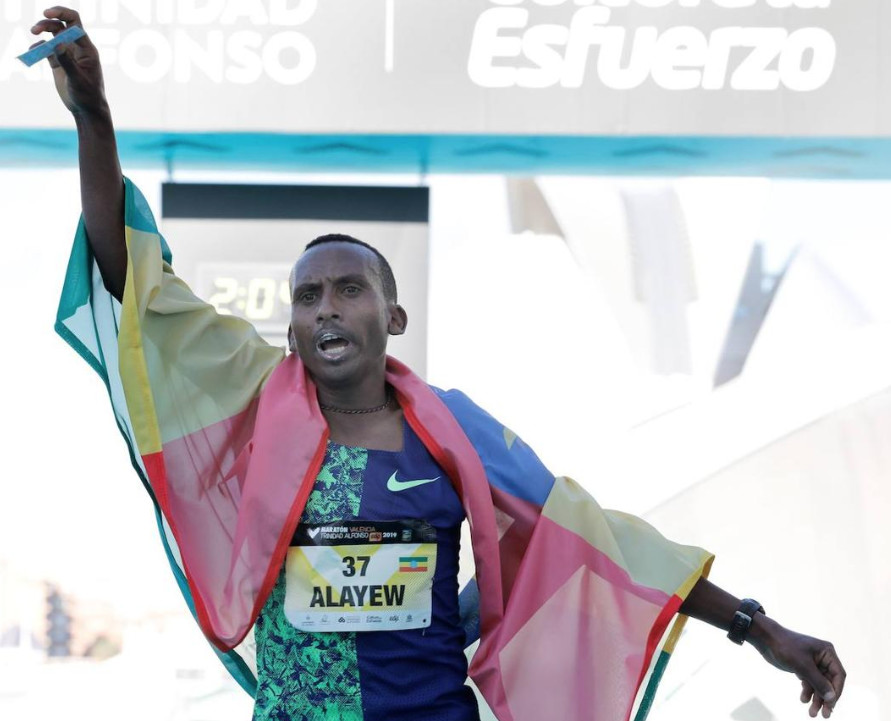
Cheruiyot and Dibaba caught the leading pack at 15 kilometres (49:12) before reaching the half in 1:09:18, well inside the race record schedule with Ethiopia’s Azmera Abreha, a 2:21:51 performer, running alone another 22 seconds behind.
The leading quintet covered 30 kilometres in 1:38:36 while behind them Abreha cut their lead to nine seconds. Shortly afterwards, first Rionoripo and then Edesa began to drift back and were easily overtaken by Abreha.
At 40 kilometres, Dereje lead in 1:55:04 alongside Dibaba, with Cheruiyot one second adrift and Abreha, who finally joined the trio, for company. From there, Dereje began to step up her pace to open a sizeable margin on Cheruiyot and Dibaba. But Abreha kept up the pressure.
Dereje, who was third in this year’s London Marathon, kept her compatriot at bay to finish in 2:18:30, improving her lifetime best by 47 seconds to break into the all-time top-10. Abreha was next in 2:18:33, a massive 3:18 improvement for the 21-year-old.
Dereje, who managed her second victory on Spanish soil this year following her 1:06:01 career best to win the Barcelona half marathon in February, said, "I love the city of Valencia and its course. I'm doubly happy as I broke the race record and also improved my career best."
In a race of astounding depth, Dibaba was third in 2:18:46 and Cheruiyot fourth in 2:18:51 also personal bests. Zeineba Yimer was fifth in 2:19:27 - only five women had run faster this year prior to this race.
First time lucky for Alayew
The men’s race was nearly as impressive, with the top-four all dipping under 2:05.
Boosted by a triumvirate of pacemakers in the guise of Kenyans Bernard Ngeno, Victor Chumo and William Wanjiru, the men’s opening splits were fast as well with the large leading group going through the five and 10-kilometre points in 14:36 and 29:15 respectively. All the main favourites – Kenya’s Emmanuel Saina and Philemon Kacheran plus Ethiopia’s Leul Gebrselassie and Gude Ayola among others – were running together in almost ideal conditions, 15C and very slight winds.
A large group of ten – pacesetters aside – led by Saina, Kacheran and Adola reached the half in a promising 1:01:58, well on schedule to break the race record of 2:04:31 set last year by Gebrselassie. By then Turkey’s Kaan Ozbilen and Norway’s Sondre Moen were still in the leading pack, targeting the 2:05:11 European record. Surprisingly, Ethiopia’s Alayew was in the pack as well in first appearance over the 42.195km distance, likely boosted by his 1:00:13 half marathon career best set in Copenhagen in September.
But that demanding rhythm soon whittled down the pack. Saina and Ethiopia’s Tsegaye Kebede were the first to fall, and shortly after the 30-kilometre point (1:28:20) defending champion Gebrselassie dropped out of contention. By 35 kilometres, the lead pack was composed of Ethiopians Abebe Negewo Degefa, Alayew, Guye Adola, Kenya’s Kacheran and Turkey’s Ozbilen.
The key move came in the 37th kilometre when Alayew injected successive splits of 2:48, 2:46 and 2:40 to reach 40km in 1:57:33, on pace to break 2:04. Behind him, Ozbilen dropped Adola and Degefa to secure the runner-up spot.
The 26-year-old Alayew broke the tape in 2:03:53 while Ozbilen clocked 2:04:16 to clip nearly a full minute from Mo Farah’s European record and lower his previous best by 1:11. Adola completed a quality podium at 2:04:42 with Degefa next in 2:04:5, improving his career best by two minutes.
"I knew that my time to make the marathon debut has already come," Alayew said. "I had a lot of confidence on my chances as the training sessions had gone really well."
(12/01/2019) ⚡AMPVALENCIA TRINIDAD ALFONSO
The Trinidad Alfonso EDP Valencia Marathon is held annually in the historic city of Valencia which, with its entirely flat circuit and perfect November temperature, averaging between 12-17 degrees, represents the ideal setting for hosting such a long-distance sporting challenge. This, coupled with the most incomparable of settings, makes the Valencia Marathon, Valencia, one of the most important events in...
more...Uganda’s Joshua Cheptegei breaks World 10K record in Valencia
Joshua Cheptegei smashed the world record in the 10km, clocking 26:38 at the 10K Valencia Trinidad Alfonso, a World Athletics Silver Label road race, on Sunday (1).
The Ugandan star clipped six seconds from the previous record of 26:44 set by Kenya's Leonard Patrick Komon in 2010 to complete a sensational 2019 hat-trick that included world titles in cross country and 10,000m on the track.
Pacesetter Roy Hoornweg covered the opening kilometre in 2:42 before Cheptegei moved to the front briefly demanding a quicker pace, a demand that was met - by the second kilometre the clock read 5:42 for a 2:40-kilometre split. Once Hoorweg dropped out, Stephen Kissa and Abdallah Mande took command with Cheptegei in tow, with the trio covering three kilometres in 7:57, well inside the word record schedule.
Following a 2:41 split for the fourth kilometre, Cheptegei overtook the pacemakers before the halfway point, reaching 5km in 13:23, one second shy of the world record for that distance.Running on his own over the entire second half, a determined Cheptegei reached 6km in 16:02 and 7km in 18:42. Cheptegei forged on, reaching 8km in 21:37, when it became clear that the world record was within reach.
With 23:59 on the clock at the 9km point, Cheptegei needed to cover the final kilometre in 2:45, a close well within his capabilities.
“World cross champion in Denmark, 10,000m world champion in Doha and now the world record here in Valencia. What a year it has been," the 23-year-old said. "I can’t believe it! I knew that Valencia was going to be a really fast course, one of the fastest in the world. So to get to achieve what we came here for is something really special."
(12/01/2019) ⚡AMP10k Valencia Trinidad Alfonso
Around the corner we have one more edition of the 10K Valencia Ibercaja, organized one more year by the C. 10K VALENCIA Athletics premiering the running season in Valencia. It is a massive urban race with more than 3,000 registered annually of 10 kilometers, where the maximum duration of the test will be 1 hour 40 minutes (100 minutes). The...
more...El Mahjoub Dazza wins the Fukuoka Marathon
It came down to a race between #1-ranked El Mahjoub Dazza (Morocco) and top Japanese man Taku Fujimoto (Toyota) after 30 km, but the Moroccan proved the stronger as he pulled away to win the Fukuoka International Marathon in 2:07:10.
Japanese men had to run under the national record of 2:05:50 to score the last spot on the 2020 Olympic marathon team. Fujimoto, 2:08 man Yuki Sato (Nissin Shokuhin) and ambitious 2:12 guy Takashi Ichida (Asahi Kasei) were the only ones to really give it a go, staying up front in the lead pack with most of the internationals, with Bedan Karoki (Kenya/DeNA) laying down the law at the head of the pacer group.
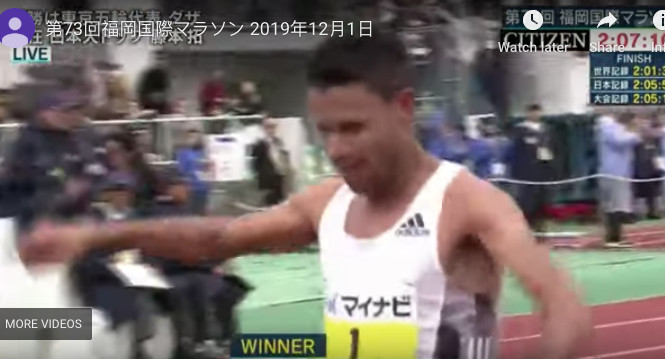
A secondary lead group quickly separated off the back of the lead group, with Japan-based Kenyan Daniel Muiva Kitonyi (Track Tokyo), 2:09:52 man Jo Fukuda (Nishitetsu), Keita Shitara (Hitachi Butsuryu) and others cutting back to 2:07 pace. European marathon champ Koen Naert (Belgium) and Pan-Am Games gold medalist Christian Pacheco (Peru) were more conservative, going out with the sub-2:10 pace B-group.
The high pace took its toll up front, with most of the invited internationals falling off and then dropping out to leave just Dazza, Fujimoto, Sato, Ichida and former Takushoku University ekiden captain Workneh Derese (Ethiopia/Hiramatsu Byoin).

Ichida, Sato and Derese all fell back on the trip out to the 31.6 km turnaround point, leaving just Dazza and Fujimoto when the pacers stepped off at 30 km. Dazza immediately surged, breaking Fujimoto and running unchallenged for the win in 2:07:10. Fujimoto slowed progressively, almost shuffling down the home straight of the track for 2nd in 2:09:36 after a 1:03:02 first half. Derese dropped Sato, but in the last km he was run down by second group runner Fukuda who took 3rd in 2:10:33 to Derese's 2:10:52 for 4th.
Early caution paid off, as runners from the sub-2:10 third pack took the next four spots led by Natsuki Terada (JR Higashi Nihon), who closed with the fastest split in the field, 6:44, for a 5-minute PB of 2:10:55 and a 5th-place finish.
Raymond Kipchumba Choge (Kenya) was the only other athlete from the original front pack to make the top 10, taking 9th in 2:11:38. Taiki Suzuki (Raffine) followed up a solid 3rd-place finish two weeks ago at China's Yiwu International Half Marathon with a 2:12:09 debut for 10th.Amateur runner Yusuke Tobimatsu (Hioki City Hall), a regular front runner in Fukuoka, survived going with the sub-2:10 this time to take 11th in a major PB of 2:12:44, while Sato faded to 2:14:56 after going through halfway in 1:03:02.
Still on sub-2:10 pace at 35 km, Ichida paid heavily for his own 1:03:02 first half as he fell to 29th in 2:19:05. Fan favorite Shitara, twin brother of former national record holder Yuta Shitara (Honda), fell short of his sub-2:10 goal at 14th in 2:14:31 just ahead of Sato.
Apart from Dazza and Choge, the only other invited internationals to finish were Naert and Pacheco, Naert finishing 18th in 2:15:51 and Pacheco 40th in 2:21:15.The Final Challenge series, the three-race chance for men to replace Osako on the 2020 Olympic team, continues in March with the Tokyo Marathon and Lake Biwa Marathon.
The dire crash and burn results today showed just how high a bar it will be to pull off, and that whatever else happens there's really only one person who could do it. But with the Valencia Marathon having quickly surpassed Fukuoka's place on the world calendar and the Osaka Marathon putting on heavy domestic pressure, more than ever before today's race seemed like a relic of times gone by.
Dazza's winning time was only just over 30 second faster than Osaka winner Asefa Tefera's, and Osaka had a quality women's race and field of over 30,000 on top of that. What is Fukuoka's route forward to stay relevant in a rapidly changing landscape?
(12/01/2019) ⚡AMPFukuoka Marathon
The Fukuoka International Open Marathon Championship is one of the longest running races in Japan, it is alsoan international men’s marathon race established in 1947. The course record is held by Tsegaye Kebede of Ethiopia, running 2:05:18 in 2009. Frank Shorter won first straight years from 1971 to 1974. Derek Clayton set the World Record here in 1967 running 2:09:37. ...
more...Jonathan Negretti, principal of a personal injury law firm will run 7 marathons on 7 continents in 7 days for charity
Jonathan Negretti will be one the competitors in the 2020 World Marathon Challenge. The World Marathon Challenge, which involves running seven full marathons on seven continents in seven days, will kick-off on Feb. 6, 2020 in Novo, Antartica.
Negretti will be one of only 50 competitors and will be competing to raise funds and awareness for Heather’s Mission, a nonprofit organization co-founded by Negretti’s wife to help those suffering from Crohn’s and Colitis Disease.
Negretti is personally afflicted with Ulcerative Colitis (UC), a type of inflammatory bowel disease that is a chronic and oftentimes debilitating disorder. It is predicted by the Crohn’s & Colitis Foundation that the two diseases affect more than 1.7 million Americans, but their unpredictability and the stigma attached to them makes them hard to diagnose and treat, so most people suffer in silence.
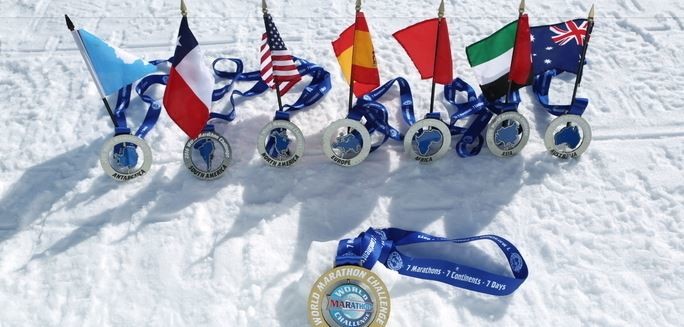
Negretti was diagnosed with UC 20 years ago and eventually had to have surgery to remove most of his large intestine, which now requires him to live full-time with an ostomy bag. Negretti will be the only World Marathon Challenge competitor with a “disability,” even though he doesn’t consider it that.
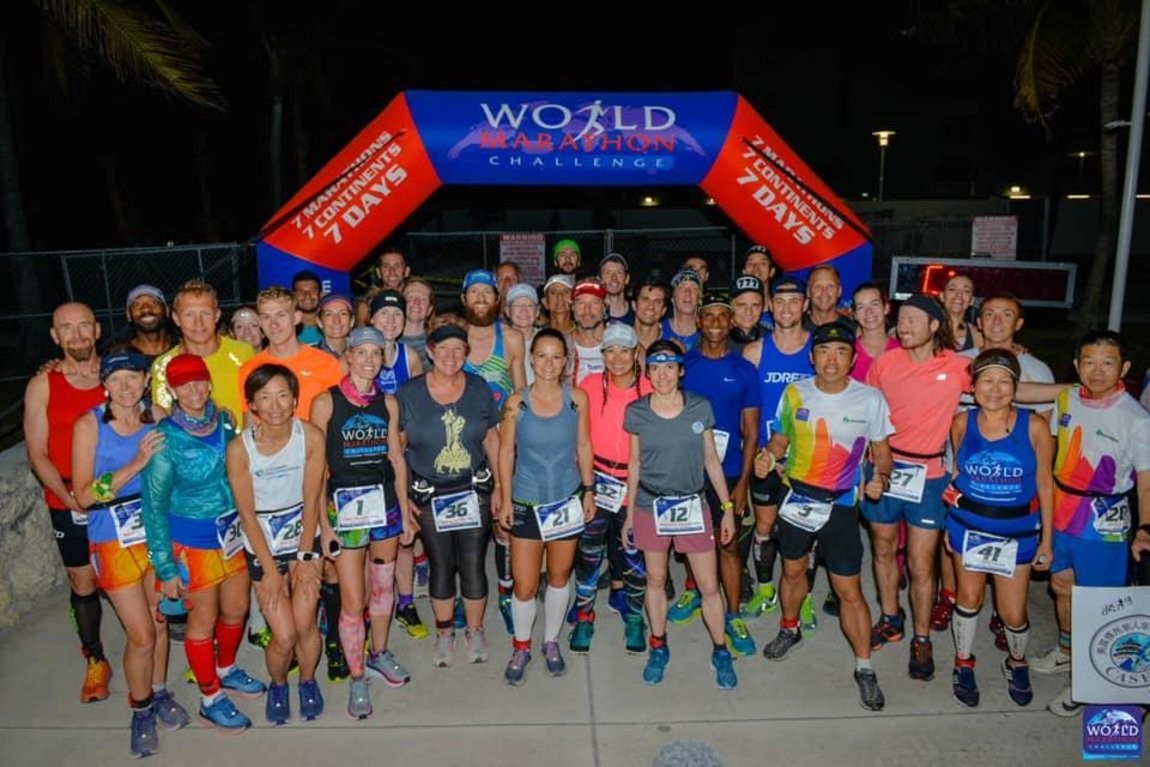
“Participating in the World Marathon Challenge is not only an epic personal challenge, but an incredible platform for me to raise awareness for Heather’s Mission,” said Negretti. “My hope is to garner enough attention to make a difference in people’s lives and inspire others who are living with an ostomy.”
Heather’s Mission has adopted a stuffed animal bear called “Awesome Ollie the Ostomy Bear,” which it is working to get into the hands of patients who have undergone an ostomy surgery.
Negretti is raising funds for Heather’s Mission with a goal of donating one thousand Awesome Ollie Bears to the nonprofit organization. If he meets this goal, he will take Awesome Ollie around the globe with him on the World Marathon Challenge.
(11/30/2019) ⚡AMPWorld Marathon Challenge
The World Marathon Challenge ® is a logistical and physical challenge to run seven marathons on seven continents in seven days. Competitors must run the standard 42.2 km marathon distance in Antarctica, Africa, Australia, Asia, Europe, South America and North America within 168 hours, or seven days. The clock starts when the first marathon begins in Antarctica. ...
more...El Mahjoub Dazza, Koen Naert, Ayana Tsedat, and Yuki Kawauchi are set to compete for the title at Fukuoka Marathon
When the Fukuoka International Marathon became a non-domestic race in 1966, the intent of the organizer was to invite the winners from all the international championship marathons which took place over the previous 12 months. In keeping with the spirit of the event, this year’s edition of the World Athletics Gold Label road race, set to take place on Sunday, December 1st, , features European champion Koen Naert and Pan American Games gold medalist Christian Pachoco.
Naert recorded his marathon personal best, 2:07:39, at this year’s Rotterdam Marathon. But Morocco’s El Mahjoub Dazza is the fastest in the field as he recorded 2:05:26 at the 2018 Valencia Marathon and 2:05:58 in Prague earlier this year. Those two performances are faster than the PBs of all the other runners in the field.
“I am ready,” he said. “If the weather is good, I can run fast.”
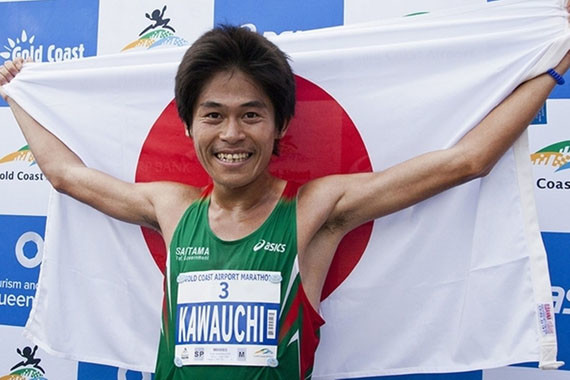
Other invited runners include Tsedat Abeje Ayana, who set a PB of 2:06:36 in Seville earlier this year, as well as sub-2:09 performers Raymond Choge, Amanuel Mesel, Abdi Ibrahim Abdo, and Shadrack Kiplagat. Mesel has competed in the past four editions of Fukuoka Marathon and has broken 2:10 in 2017 and 2018.

Kenyans running for a corporate sponsored team won the race on three occasions between 2011 and 2013. This year Michael Githae, who runs for Suzuki Hamamatsu Athletics Club, will try to become fourth Kenyan with a Japanese connection to win the Fukuoka Marathon. He was eighth at the 2017 Fukuoka Marathon and recorded a personal best of 2:09:21 at the 2018 Lake Biwa Marathon.
For Japanese runners, the significance of the race is that anybody who improves the national marathon record, 2:05:50, will clinch the third spot on the Japanese Olympic Marathon team – unless someone else improves the record further at the 2020 Tokyo or the Lake Biwa Marathon. Given the Japanese entrants for Sunday’s race, however, a national record appears unlikely in Fukuoka.
Taku Fujimoto, who ran 2:07:57 at the 2018 Chicago Marathon, is the fastest Japanese runner in the field, while Yuki Sato, who has a 10,000m best of 27:38.25, may have the best marathon potential.
Yuki Kawauchi will run the Fukuoka Marathon for the fifth straight year. His personal best is 2:08:14, while his best time in Fukuoka is 2:09:05 from 2013. Now that Kawauchi no longer works for Saitama prefecture government, he may be ready for a quicker time.
(11/30/2019) ⚡AMP
by World Athletics
Fukuoka Marathon
The Fukuoka International Open Marathon Championship is one of the longest running races in Japan, it is alsoan international men’s marathon race established in 1947. The course record is held by Tsegaye Kebede of Ethiopia, running 2:05:18 in 2009. Frank Shorter won first straight years from 1971 to 1974. Derek Clayton set the World Record here in 1967 running 2:09:37. ...
more...Kipkorir and Cherono retain Standard Chartered Singapore Marathon titles
With the dazzling city skyline as his backdrop, Joshua Kipkorir of Kenya stormed home to successfully defend his Standard Chartered Singapore Marathon (SCSM) title on Saturday (Nov 30) night, in the first evening edition of the annual running event.
The 25-year-old breasted the tape at The Float @ Marina Bay in 2hr 19min 13sec, ahead of Munyo Solomon Mutai of Uganda (2:19:46) and Benson Seurei of Bahrain (2:20:25).
Fellow Kenyan Priscah Cherono also retained her title in the women's race, winning in 2:28:53 to set a new SCSM record - the previous mark was 2:31:55 set by her compatriot Salina Kosgei in 2006.
Another Kenyan, Stella Jepng'Etich Barsosio, was second in 2:30:18 while Alemnesh Guta of Australia (2:37:03) rounded off the podium places.
Both Kipkorir and Cherono won US$50,000 (S$68,390) in prize money and ensured Kenya's dominance at the SCSM for a fifth straight year.

The marathon attracted over 15,000 participants with the overall event - which includes a kids' dash, and distances of 21km, 10km, 5km as well as a wheelchair category - seeing over 50,000 entrants.
Unlike the previous editions when the marathon began before dawn - last year's start time was 4.30am - this year's 42.195km marathon flagged off at 6.05pm at the F1 Pit Building.
The switch is part of the effort to fulfil various criteria in the organisers' bid to get the SCSM listed among the Abbott World Marathon Majors (WMM), a series of the most prestigious marathons in the world.
None of the six WMM races - Berlin, Boston, Chicago, London, New York and Tokyo - are held at night.
This year's course took runners from the F1 Pit Building through the Central Business District to places such as West Coast Highway, Marina Barrage, Gardens by the Bay and Marina Bay Sands, before ending at The Float.
Meanwhile, national record holder Soh Rui Yong was the top local male finisher for the third year in a row, crossing the finish line in 2:45:52. He earned $10,000 for his efforts.
Sharon Tan celebrated a first title as the fastest Singapore woman, finishing in 3:12:49.
(11/30/2019) ⚡AMPSINGAPORE MARATHON
The Singapore Marathon is an annual international marathon race which is held in December in the city of Singapore. It is an IAAF Gold Label Road Race. It has grown significantly since its inaugural race in 1982 – the 2013 event attracted a total of 60,000 entrants for all categories. There are four separate categories of competition: the full marathon,...
more...Jordan Hasay says she is going to be ready for the US Olympic Trials after making some changes
Jordan Hasay went into the Chicago Marathon on October 13 in excellent shape, hoping to make a run at the American record in the distance. But about two miles into the race, she tore her left hamstring. She limped past the 5K mark in 22 minutes before dropping out of the race.It was the bitter end of a tumultuous two weeks.
On September 30, her longtime coach, Alberto Salazar, was hit with a four-year ban from track and field for anti-doping violations. Hasay, 28, said she never witnessed anything improper in her time with Salazar and his team, the Nike Oregon Project. On October 11, Nike shut down the Oregon Project, leaving the athletes who had trained with Salazar to work out new coaching and training situations.
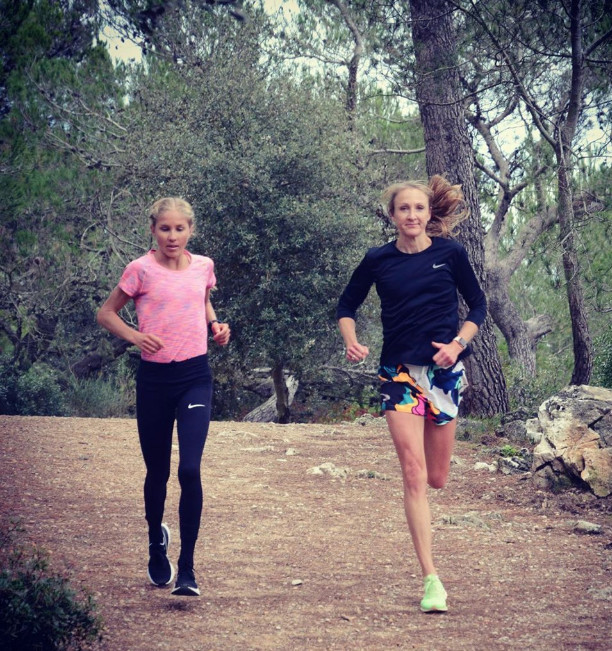
The timing of Hasay’s injury and the coaching upheaval were not ideal: American marathoners are preparing for the Olympic Marathon Trials on February 29, 2020 in Atlanta.
The upheaval has continued this month: On November 7, in an explosive opinion video in The New York Times, Mary Cain, a former teen prodigy who trained with Hasay and others at the Oregon Project, alleged she was “emotionally and physically abused” in her time with Salazar.
On a recent trip to Monaco, she formalized a relationship with Radcliffe to be her “mentor-coach.” Radcliffe held the world record in the women’s marathon, 2:15:25, for 16 years. The record fell last month to Brigid Kosgei, who ran 2:14:04, at the Chicago Marathon, where Hasay dropped out.
Hasay has long admired Radcliffe. As Hasay was training for her first marathon, Boston in 2017, her late mother used to call Hasay by the pet name “Paula.” Radcliffe and Hasay first met at the 2017 Chicago Marathon, where Hasay ran 2:20:57 and became the second-fastest American marathoner behind Deena Kastor. Hasay and Radcliffe have kept in touch since then.
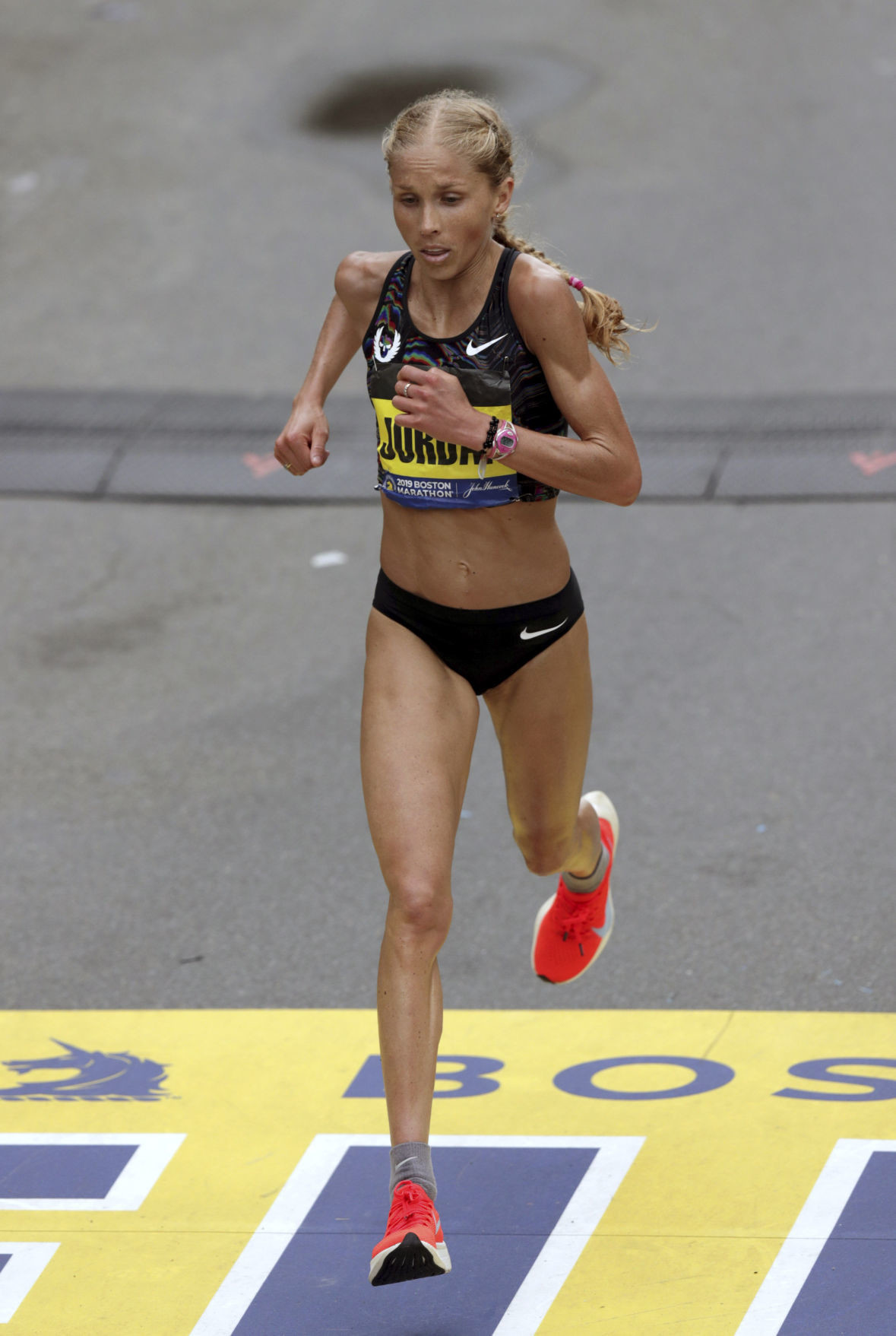
Last week, together in Monaco, they sat down and mapped out Hasay’s training for the next 15 weeks until the Trials. Hasay said she believes she’s the first athlete to be coached by Radcliffe and specified that Radcliffe, and not her husband, Gary Lough, who oversees the training of Mo Farah, will be in charge.
Hasay will stay in California and communicate remotely with Radcliffe. “I’ve always really looked up to her as a role model,” Hasay said. “Since we first met two years ago in Chicago, we’ve kept in touch and she’s given me a lot of advice. She knows that I have had some very good coaches in the past. We’re not going to go in and change a bunch of things. At this point, I mainly need someone to hold me back and make sure I stay injury free. She’s such a kind person.”
After two weeks off from running after the Chicago Marathon, Hasay has returned to running almost pain free, she said, although the hamstring feels tight at faster speeds. On November 19, she did a hill workout.
Hasay said Nike staff were “incredibly supportive” of her as she considered new coaches, and they were open to her having a coach who didn’t have a relationship with the company if that is what she wanted. Radcliffe, though, was a Nike-sponsored athlete throughout her career and maintains a relationship with the company.
She is in the process of selling her home in Beaverton, Oregon, near Nike headquarters, and she will live with her father in Arroyo Grande, California, until she eventually buys a home in that area. She is more suited to the climate there, she said, where it is sunny and warm year-round, than the rainy winters of the Pacific Northwest. She also said the community has supported her since she began running at age 12. Being home “will add a lot of happiness,” she said.
When asked about Cain, Hasay said she knew her teammate was struggling during her 10 months training in Portland with the Oregon Project, but she didn’t know the extent of the problems.
“I was pretty shocked with the video,” Hasay said. “Obviously I feel really sad and I texted her and said I’m really sorry. That if I knew that it was that bad, if there was anything I could have done, I just apologize.”
Hasay said she and Cain were fairly close but she had “no idea” that Cain was cutting herself, as she said in the Times video. Cain also said Salazar was constantly trying to get her to lose weight to hit an arbitrary number, 114 pounds.
Hasay said she thought Cain’s youth and the intensity of the training and the program were a poor combination, but she expressed sympathy for both Cain and Salazar.
“It’s so sad, everyone was trying their best, though,” she said. “I really think you can’t point fingers and it’s really easy from the outside to kick Alberto under the bus. People make mistakes. He could have handled it at times differently. He really was doing his best. He wasn’t trying to cause any of the problems that she described. I sympathize with both sides.
“That’s why it’s hard—I haven’t commented on it—I don’t really have a side. I didn’t experience what she experienced, but I can see how it was so difficult. I think that her message is a good one, addressing these issues, they are important, I think it’s good overall that we’re looking at some of things.”
Hasay continued that when an athlete is still growing and going through puberty, getting to a certain weight is “difficult.” Older athletes on the team, she said, were able to push back in discussions with Salazar on weight.
“Alberto, if you ask me is he obsessed about weight? Yes, but he’s obsessed about everything,” she said. “He wanted to cut my hair [to reduce drag], he wanted me to wear a wetsuit in the Boston Marathon. It’s just every little detail is covered and weight happens to be one of those things.”
Salazar told Hasay she needed to gain weight at times. “He’s told me, ‘You don’t need to be this lean all year. I’d like you to go back up.’ We’ve had discussions. I think when you’re older and more experienced, you can speak up. It’s hard when she’s so young and still growing. It was just the whole situation wasn’t the right fit, unfortunately.”
(11/29/2019) ⚡AMPby Runner’s World
2024 US Olympic Trials Marathon
Most countries around the world use a selection committee to choose their Olympic Team Members, but not the USA. Prior to 1968, a series of races were used to select the USA Olympic Marathon team, but beginning in 1968 the format was changed to a single race on a single day with the top three finishers selected to be part...
more...

